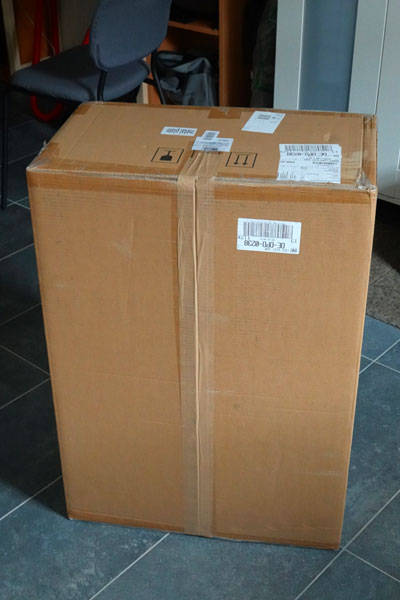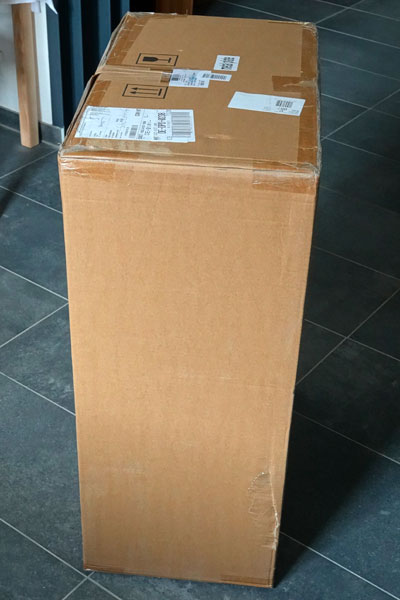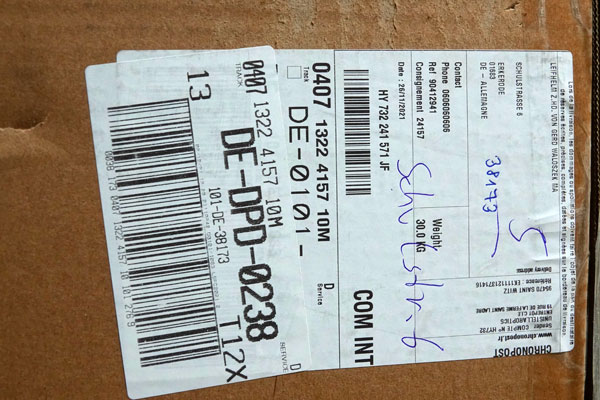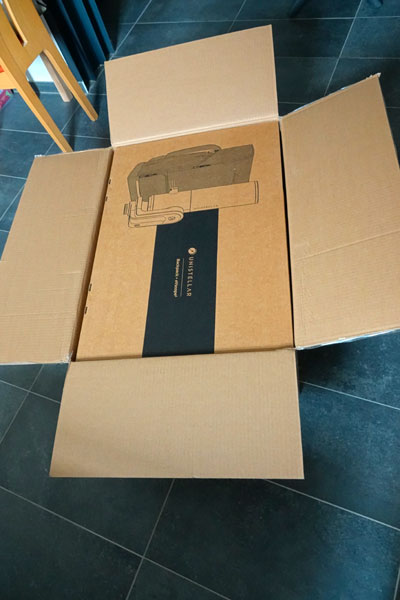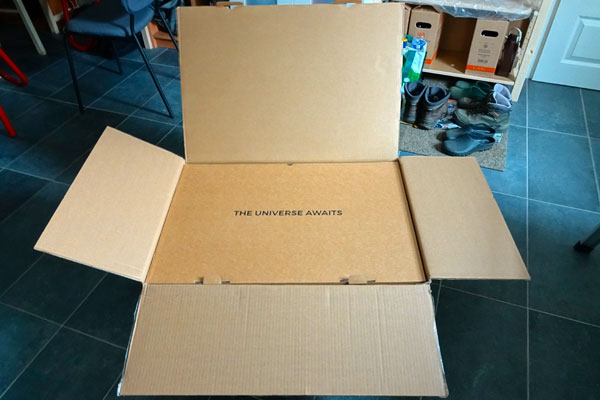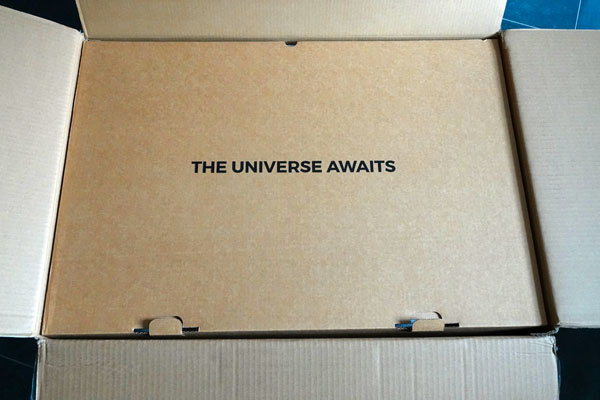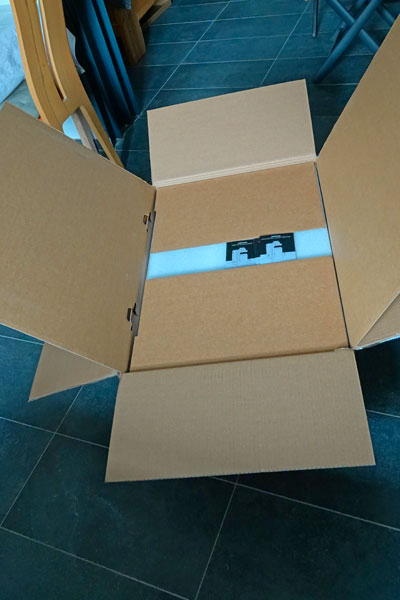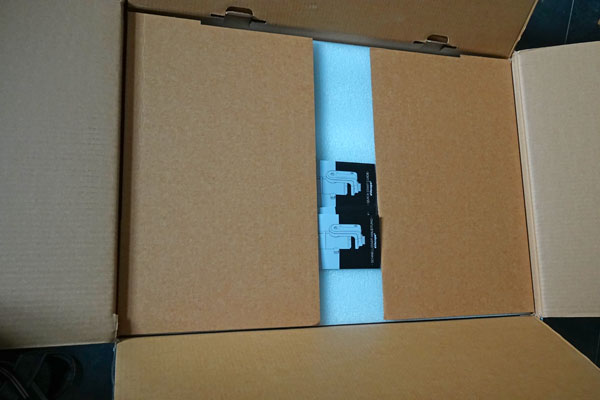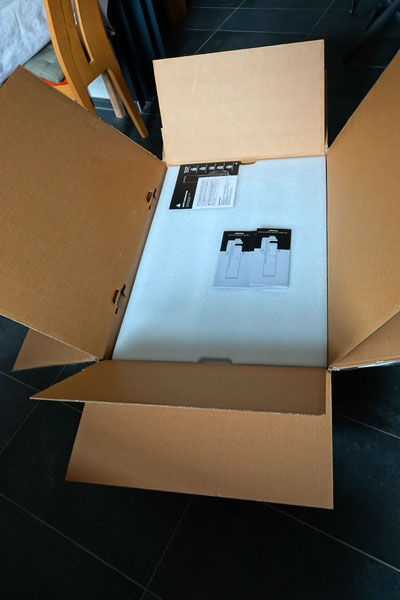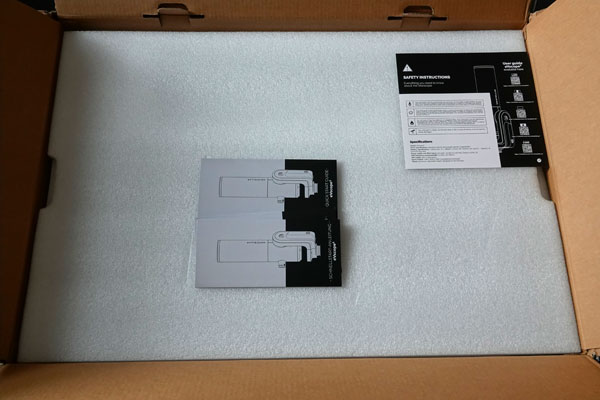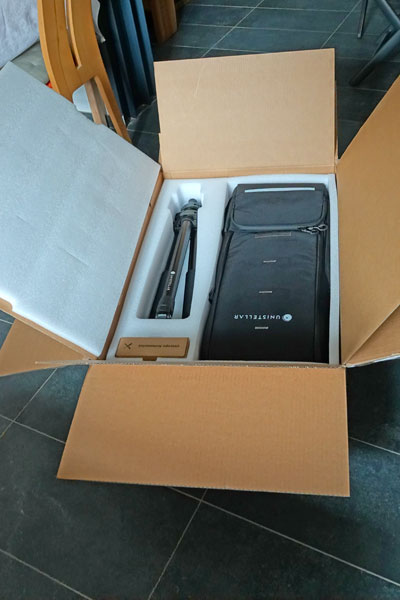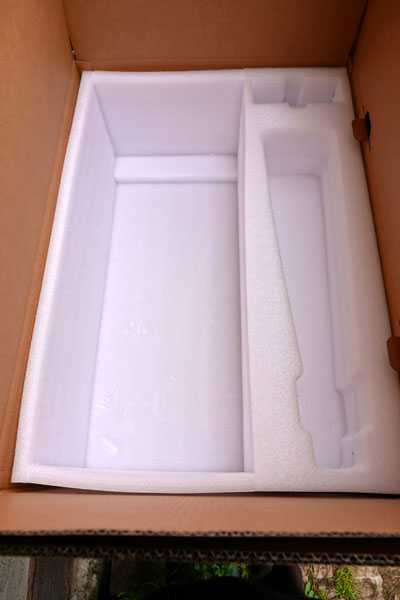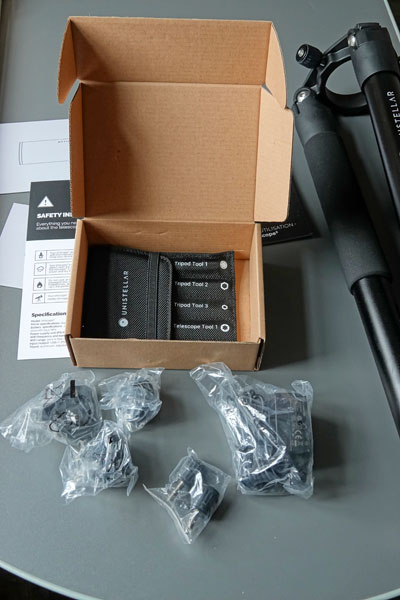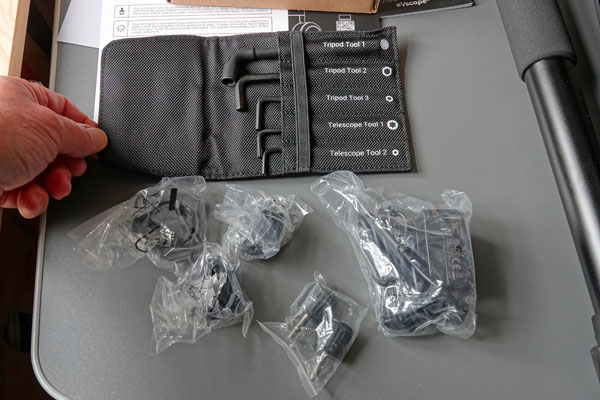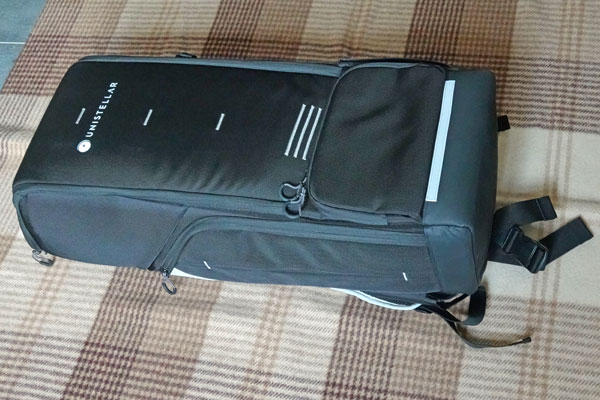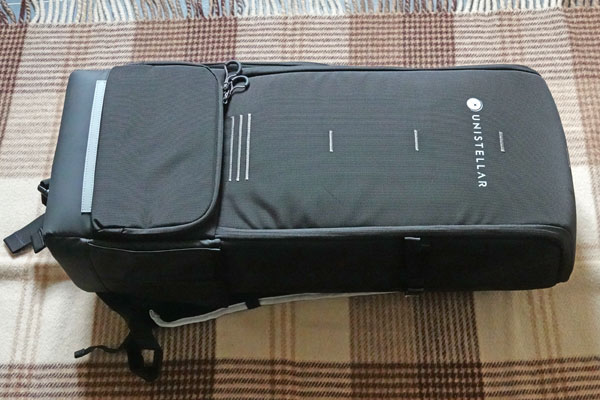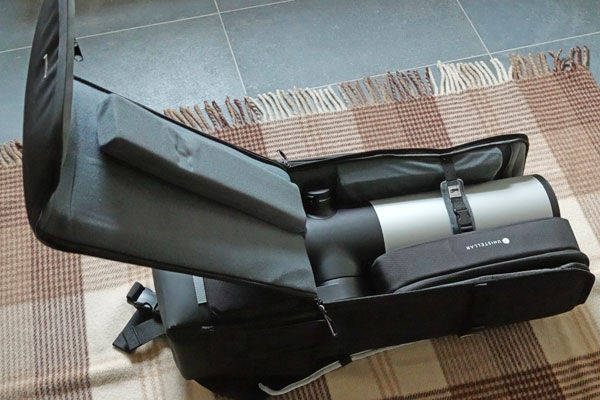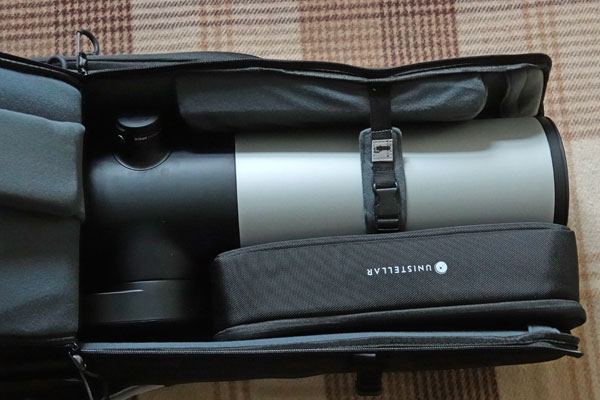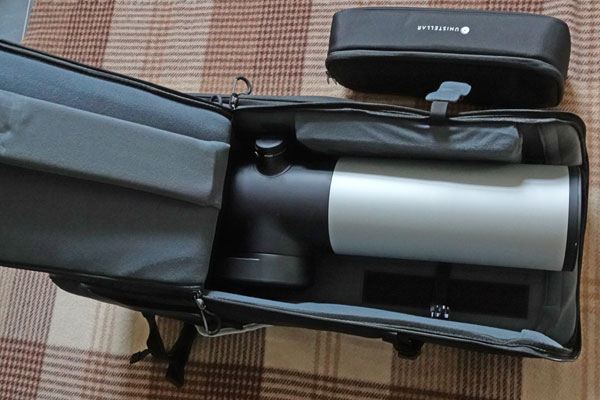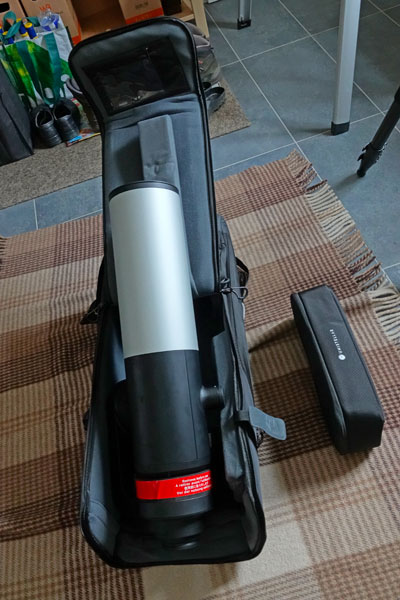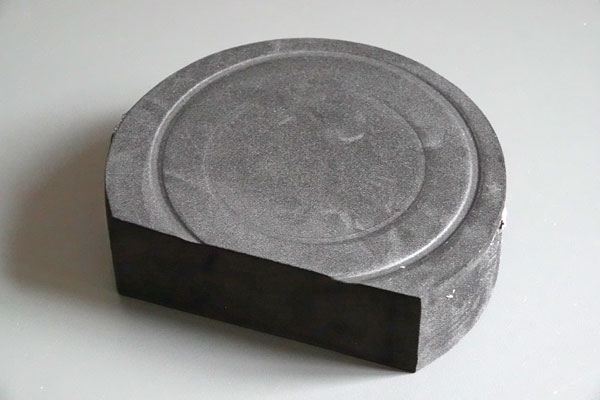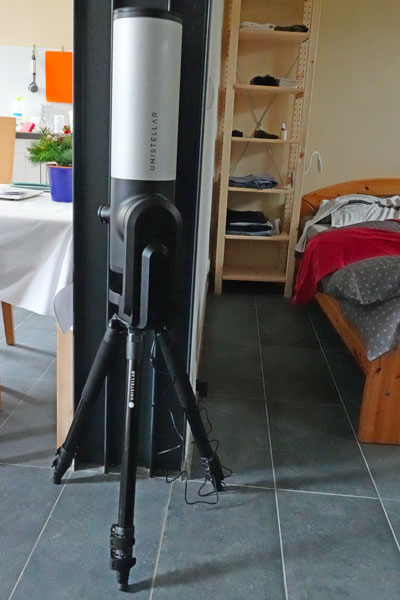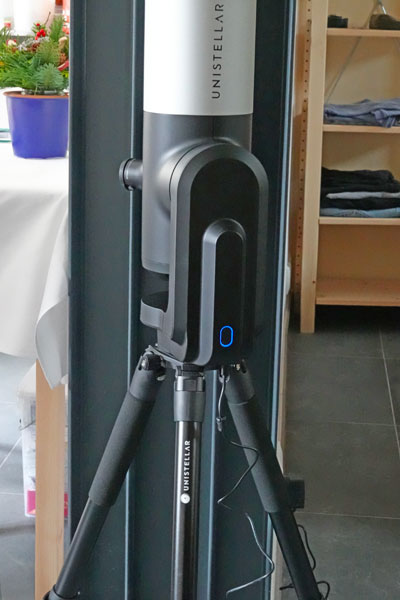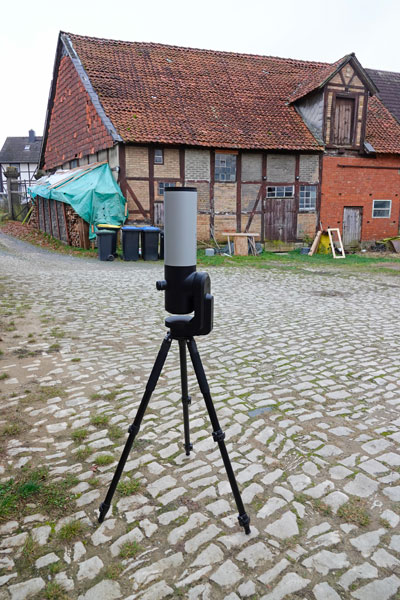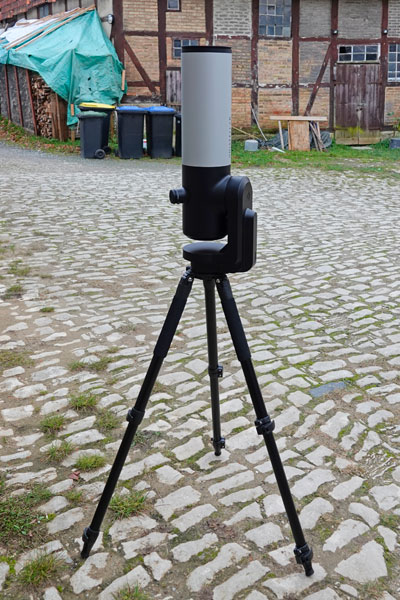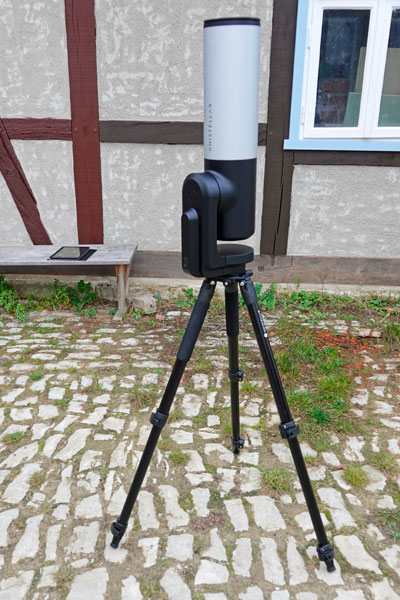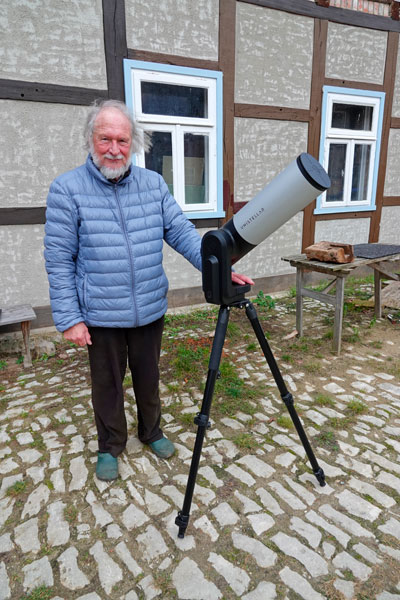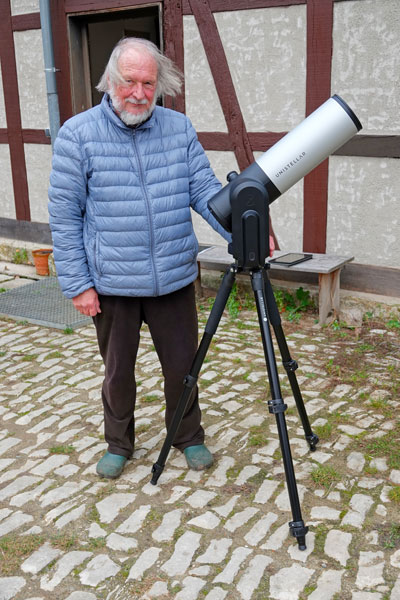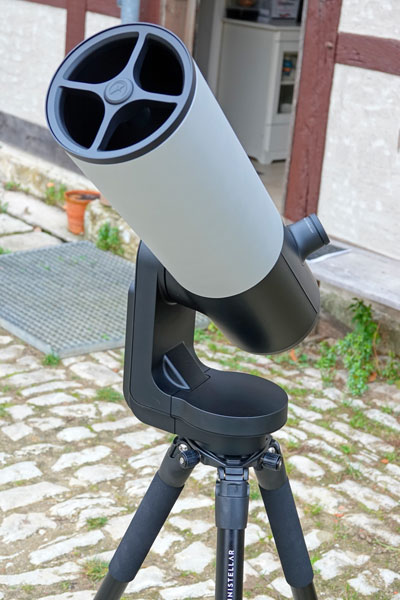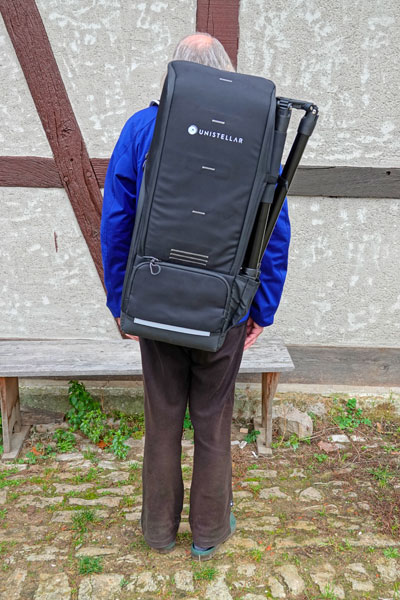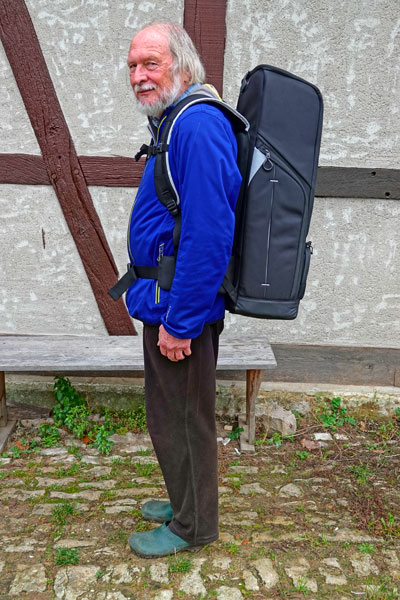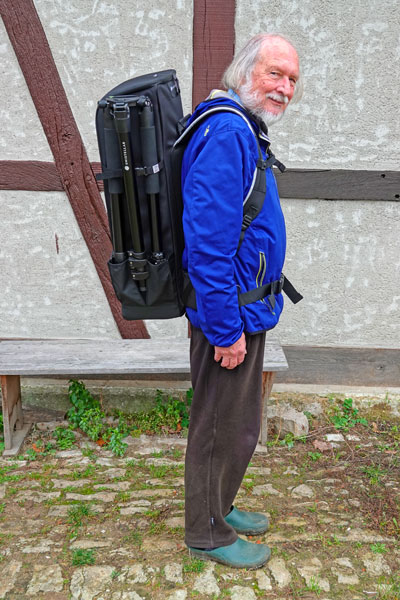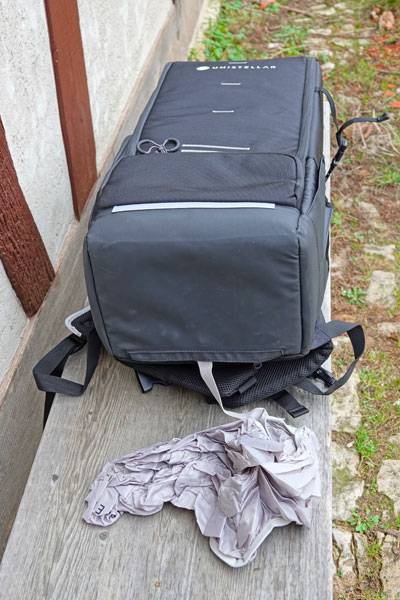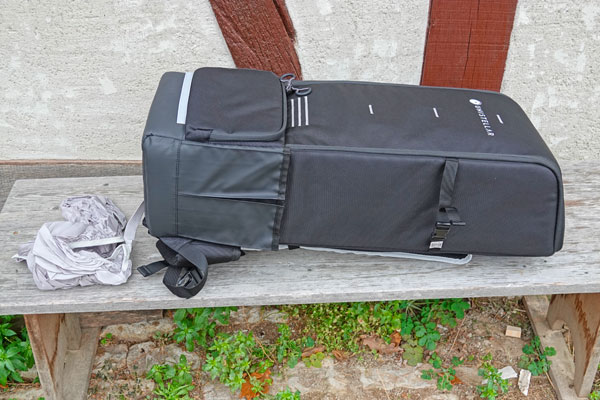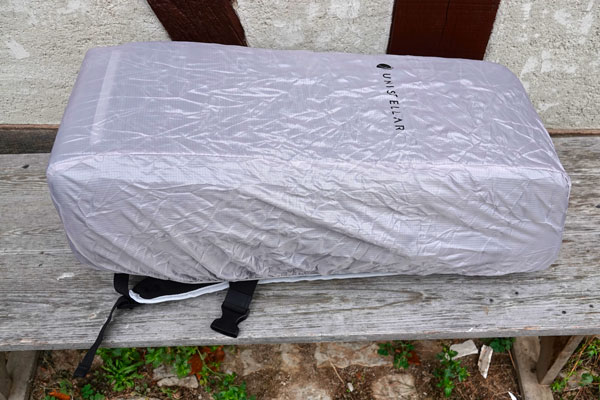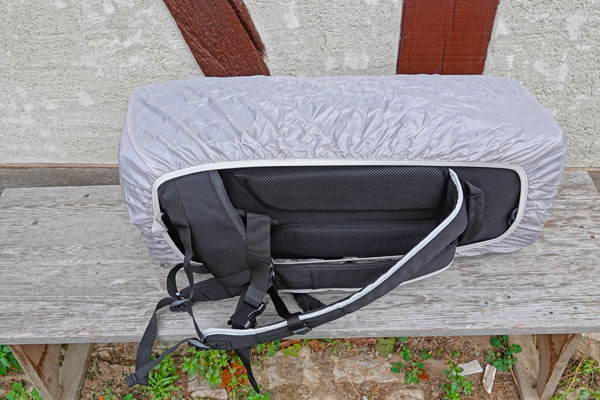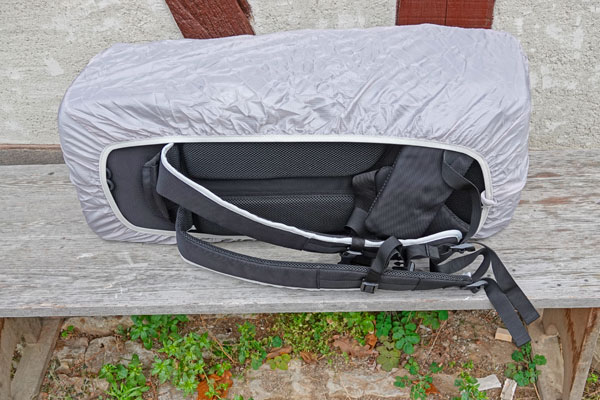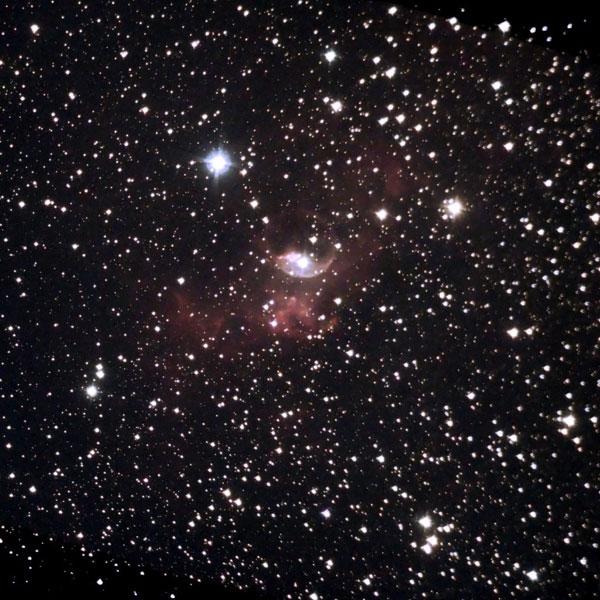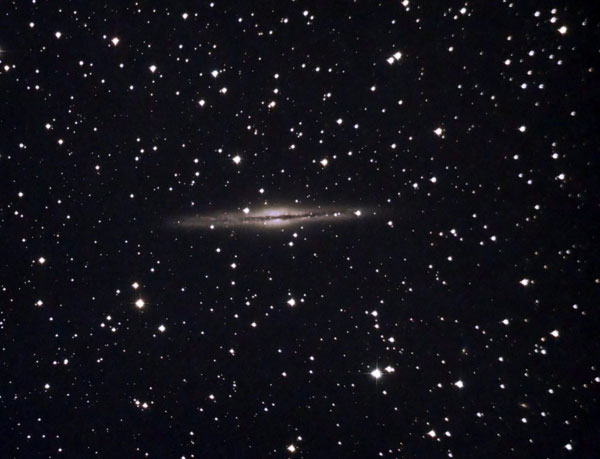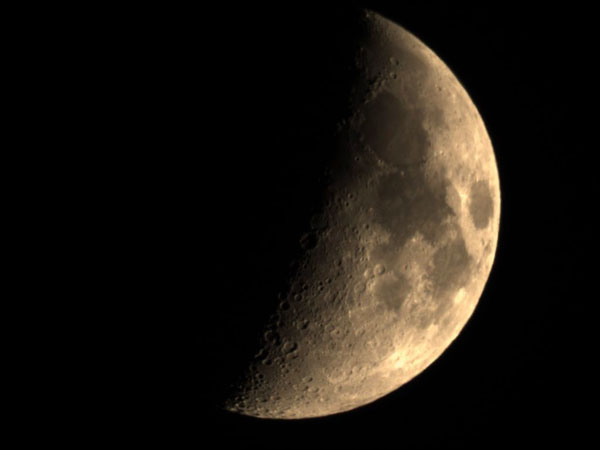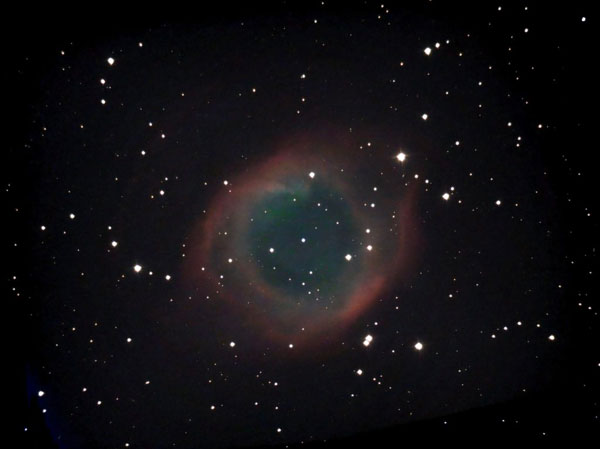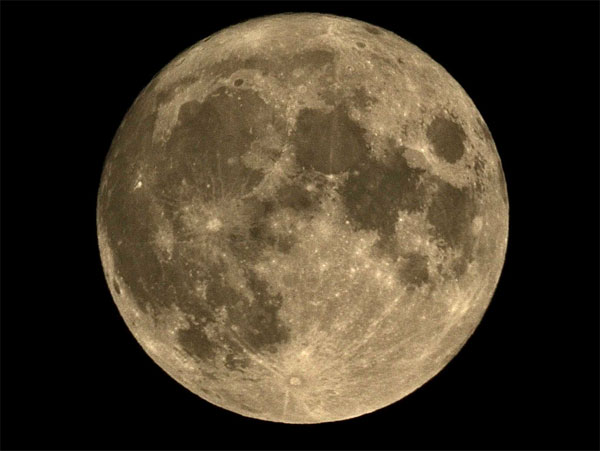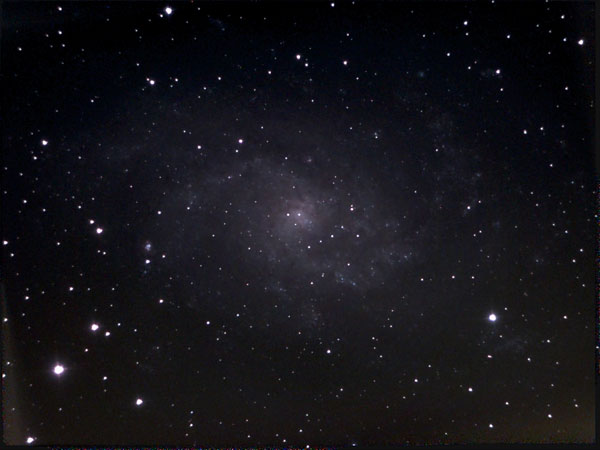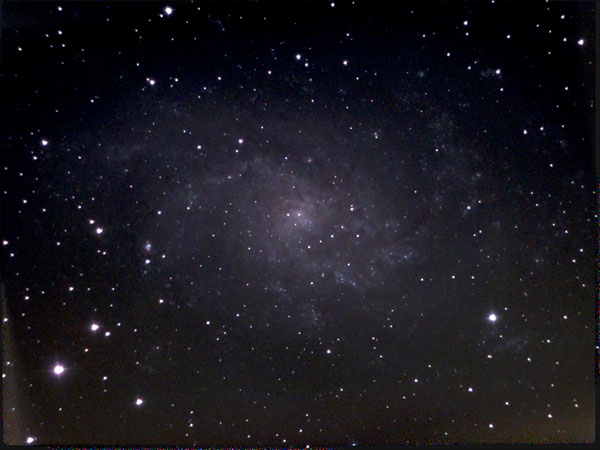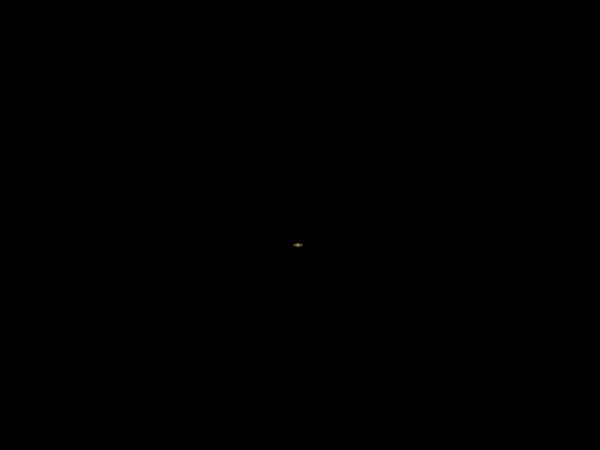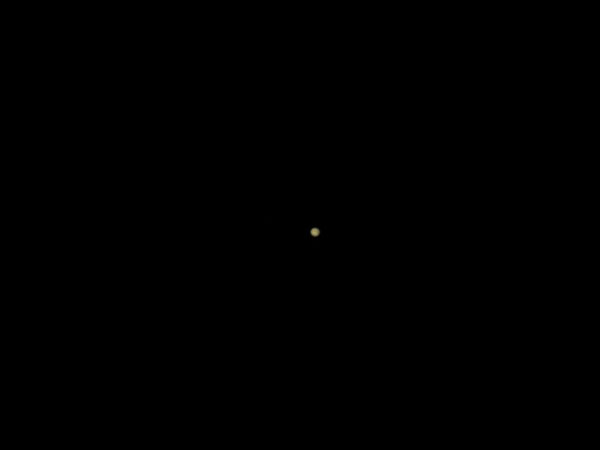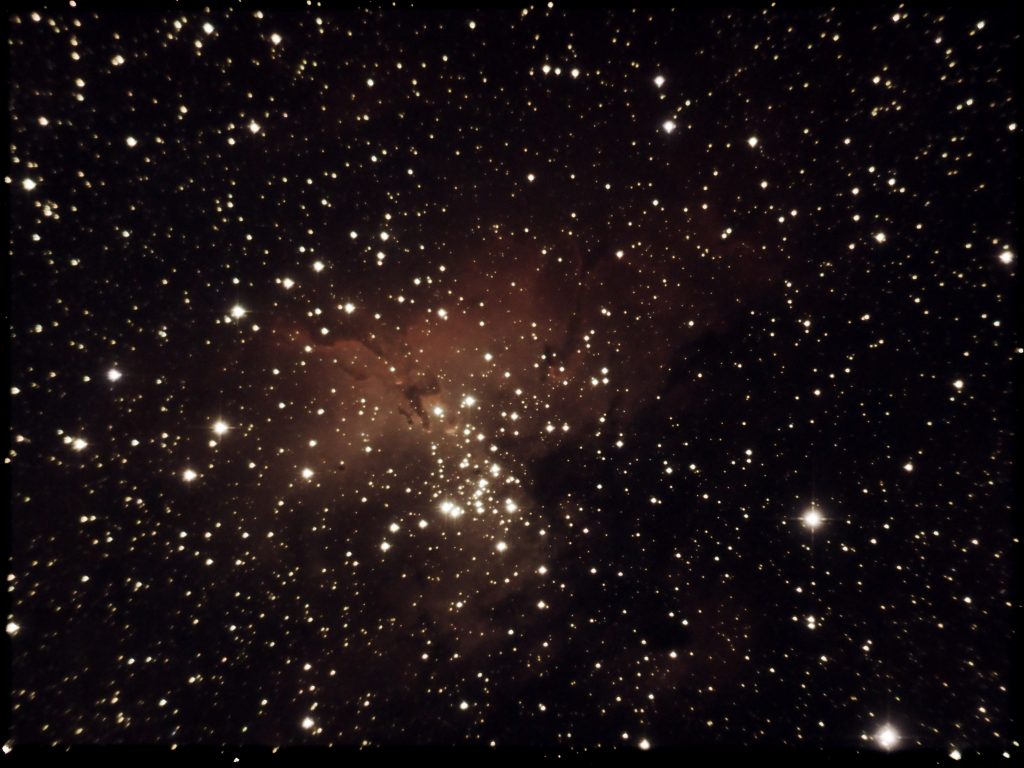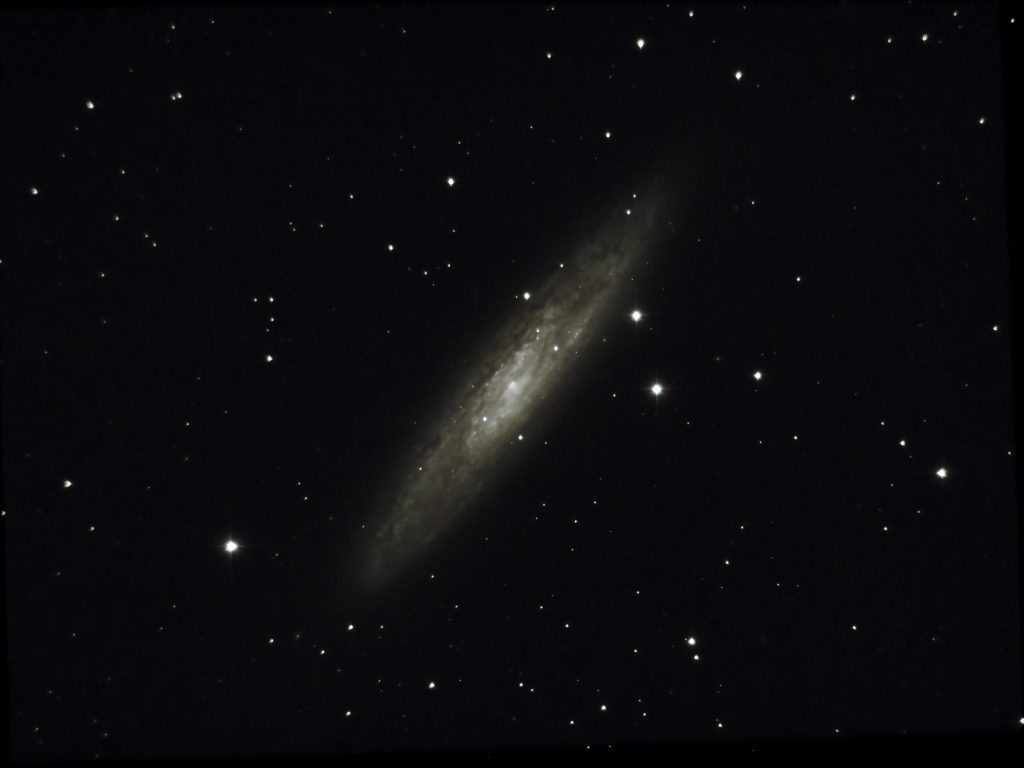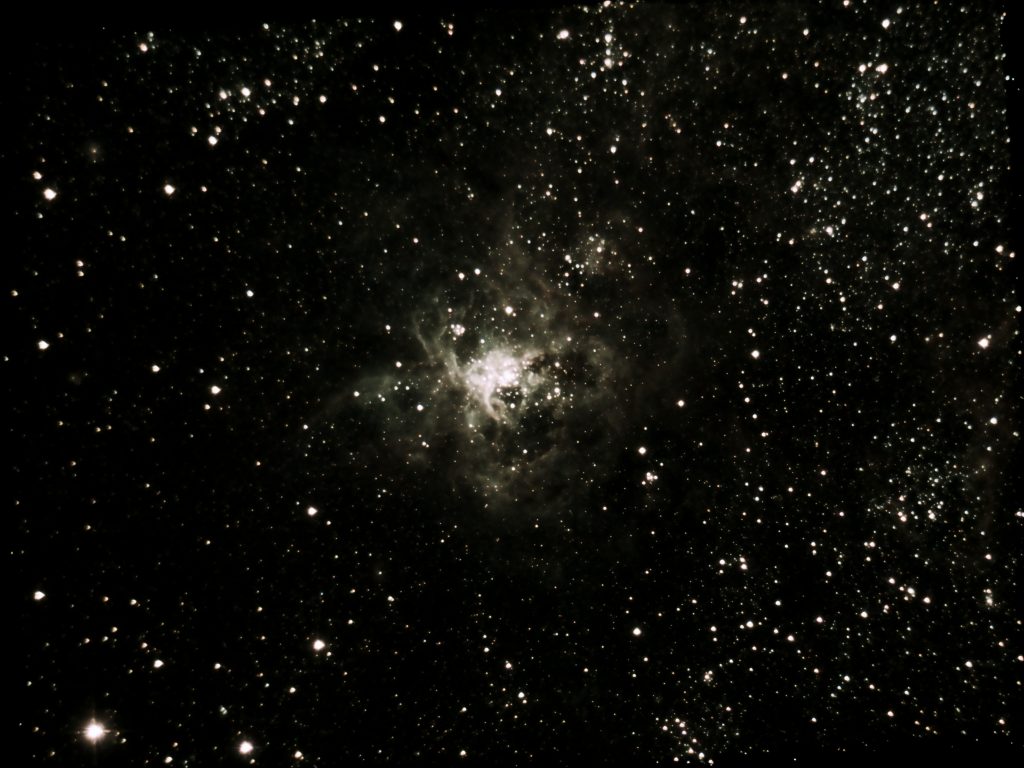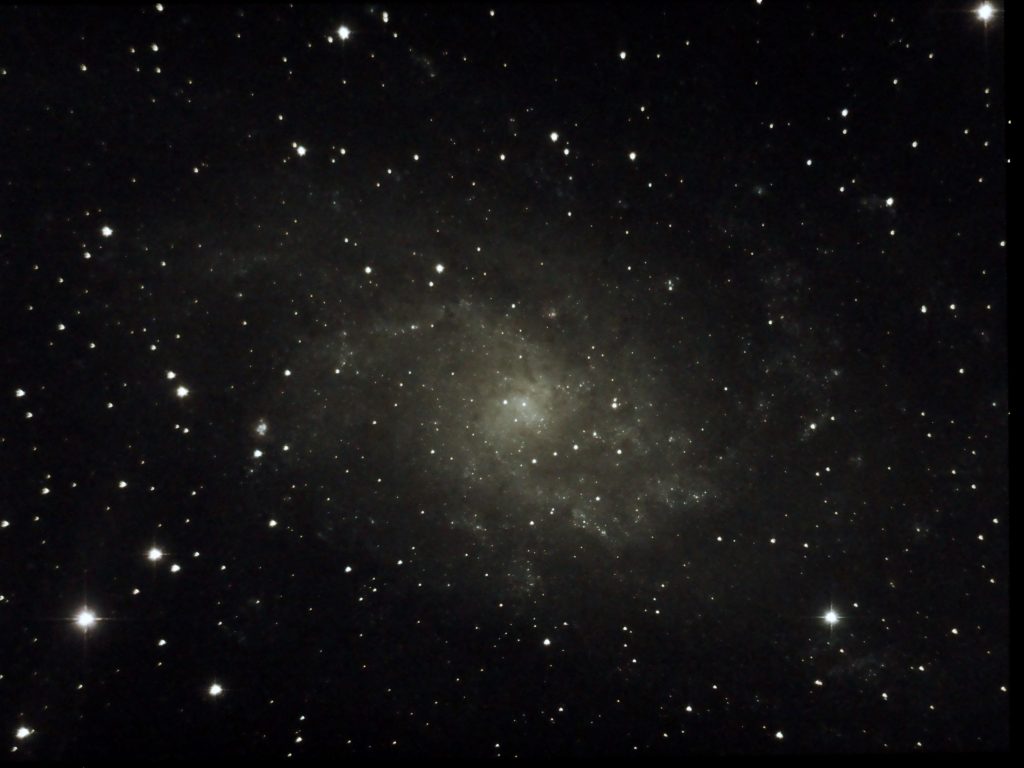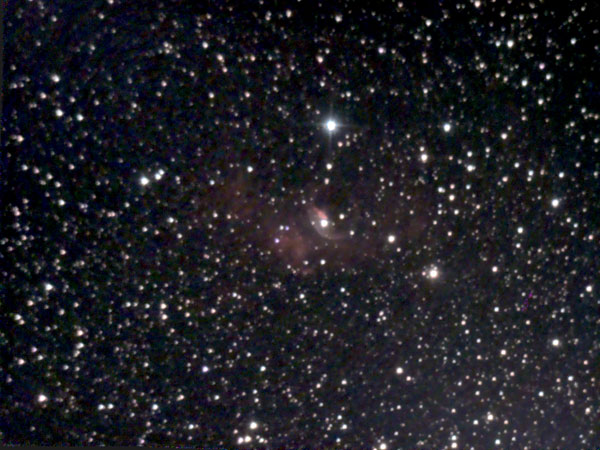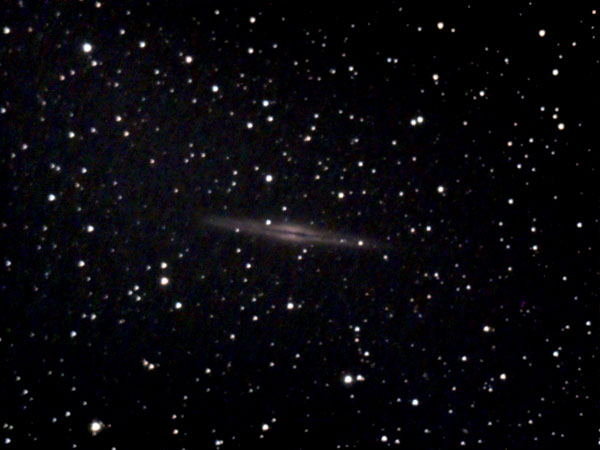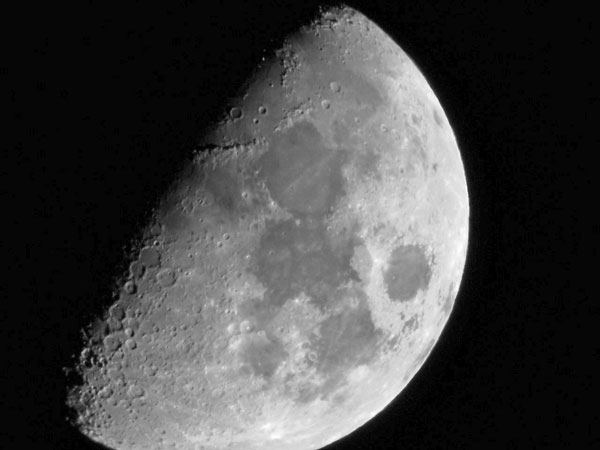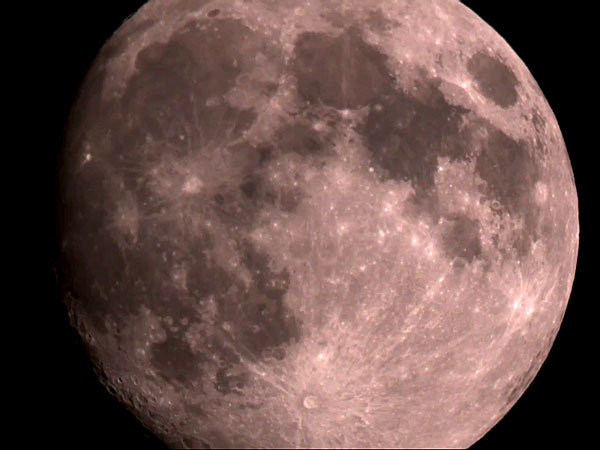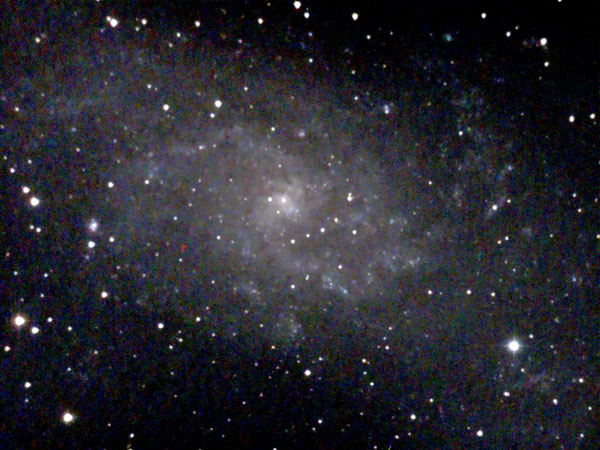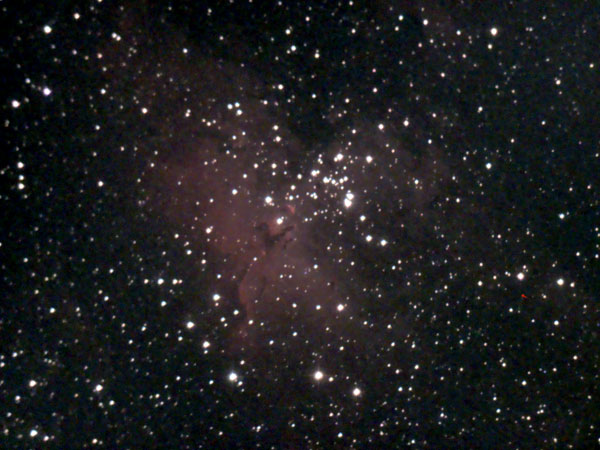Unistellar eVscope 2 - Information (4.5" Newton)
Introduction | About the eVscope | Look | Sensor, Pixel Data, Field of View, Image Size (Pixels) | How To Observe with the eVscope 2 | Visited Sky Objects | First Experiences | Photo Attempts | First Conclusions | Links || Appendix: Data for the Unistellar eVscope 2 | Appendix 2: eVscope 2 vs. eVscope Equinox and vs. the original eVscope | Appendix 3: Published and Sent Photos, Comparisons with the Original eVscope
Archive
Note: This page describes my first sample of the Unistellar eVscope 2, which I had exchanged for a new one. It is for information only, and does not reflect the performance of the eVscope 2!
On this page I provide some information about my electronic
4,5" Newton
telescope Unistellar eVscope 2, 112 mm/450 mm (f/4)*. After the launches
of the original eVscope at the end of 2019 and of the eVscope Equinox (no eyepiece)
in spring 2021, Unistellar launched the eVscope
2 in mid-September 2021. This model looks like the original eVscope,
but offers a new sensor chip (IMX347) and an improved electronic eyepiece (designed
by Nikon). In many respects, the eVscope 2 looks like "what the original
eVscope should have been"... More on the eVscope 2 on this page and
from Unistellar!
*) Ordered on November
9, 2021; delivered on December 3, 2021; returned at the end of March 2022 in exchange for a second new one.
Notes:
- See page Overview of the Unistellar Pages for just that!
- For a comparison with similar products, see page DSO Photography for Dummies - Motivation and Introduction.
- In spring 2021, Unistellar launched the eVscope eQuinox, which lacks an electronic eyepiece and is more or less identical to the original eVscope. More on this from Unistellar!
- This page covers primarily the eVscope 2, in particular, the first sample, which I owned since December 2021 and that I returned and exchanged for a new sample.
Note: I received my eVscope 2 at the beginning of December 2021. I bought it, because I was convinced by the better image quality* of the published sample photos and by the slightly larger field of view. I therefore sold my eVscope in mid-March 2022. *) Since I was not satisfied with the results of my new eVscope 2, Unistellar offered to check and possibly repair my eVscope 2. So, I sent it to Unistellar on February 14, 2022 and received information on February 18 that my eVscope 2 had been repaired and will be returned to me. When asked, I was told that there was a problem with the primary mirror, which was slightly under tension and therefore produced blurry images. As proof of the repair, I received a photo of Alnilam, which looks much better than my similar photo of Alnitak (near the Flame Nebula). I describe my subsequwnt tests with the repaired eVscope 2 on the pages First Experiences (After Repair - Part 1) and First Experiences (After Repair - Part 2). According to this, the repair resulted in an improvement, but did not completely eliminate the mirror tension. Unistellar offered to return my eVscope 2 (end of March 2022) and exchange it for a new one. This arrived on April 8, 2022. For more information on this second sample, see page Unistellar eVscope 2 - Information! So please note that my photos on the respective pages taken with the first eVscope 2 sample do not reflect the true performance of the eVscope 2! |
Introduction
In September 2021 Unistellar launched the eVscope 2, which offers an improved electronic eyepiece and a new, larger sensor (Sony IMX347). It does not differ much from the original eVscope with respect to its look. It costs including the backpack, with which it is sold as a package, 800 Euros more than the original model without a backpack. The differences between the eVscope models (the original eVscope is no longer available) are described here.
Update: On February 1, 2022, I received a newsletter from Unistellar announcing a price increase for the eVscope 2. On the Unistellar Website, I then found prices of 4700 EUR for the eVscope 2 with backpack (instead of 3800 EUR) and of 4500 EUR for the model without a backpack (the eVscope eQuinox remained at 2800 EUR). All prices one euro less, shipping included, and are given without guarantee...
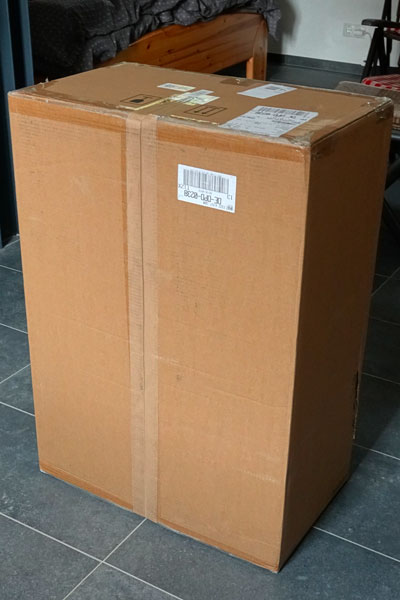 |
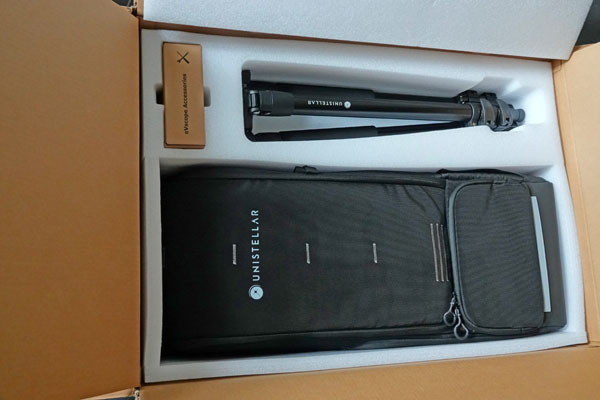 |
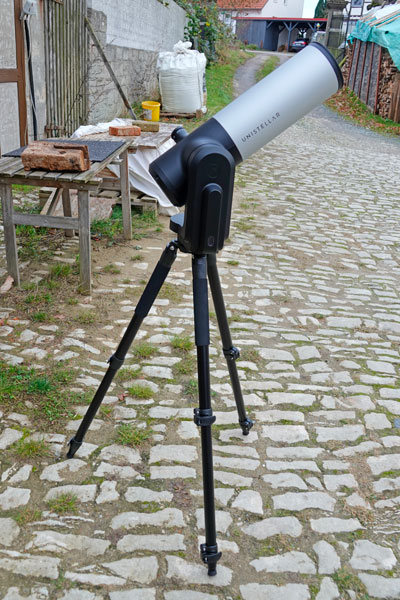 |
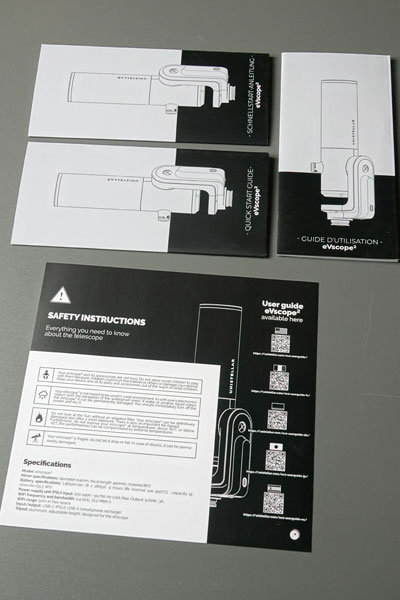 |
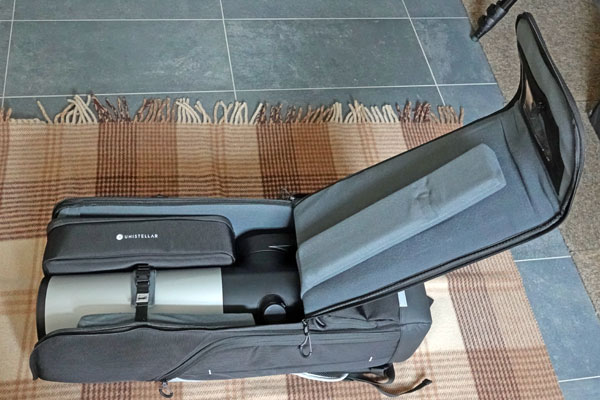 |
 |
Photos: My eVscope 2 (December 3, 2021)
Delivery
On Oct 29, 2021, I received an e-mail from Unistellar stating that I would receive a tracking number between Nov 18 and Nov 26, 2021 and an update on Nov 17, 2021. It looked as if the waiting time would be much shorter for the eVscope 2 than for the original eVscope... The update was made on Nov 17, 2021 as promised, however, the date for sending the tracking number was now moved to between Nov 25 and Dec 1, 2021.
On Nov 29, 2021 I received several e-mails at once: first one from Anna, with the message that my eVscope 2 was prepared for shipment last Friday (Nov 26) and that I would receive a tracking number by Wednesday, Dec 1, 2021, at the latest. Then came an e-mail from Unistellar including a link to the tracking and tracing number (addressing my landlord in Erkerode near Braunschweig, to whom I had redirected the package); then Anna also sent me the link. And last, but not least, the French parcel service Chronopost sent me an e-mail on Nov 29 with the tracking number (or more precisely, with two; the second was later used by DPD on the German side). And that was when the mischief started! The address was slightly changed, but worse was that the postal code was completely wrong and belonged to a place near Dresden or Meißen. When I noticed that my jaws dropped! I hurriedly wrote an e-mail to Anna and also on the same day another one to Chronopost. There was no reaction from Chronopost, Anna's arrived the next morning: The data in the Unistellar system was correct! So they must have "slipped" somewhere at the logistics company Kairos Logistique or at Chronopost. She would follow up with the logistics company and get back to me, what she did on the day of delivery (for more, see below).
On Dec 1, 2021, DPD contacted me by e-mail and announced a delivery in 1-2 days. The postal code was still the wrong one! I was also able to do the tracking only with this wrong zip code. However, when I selected test "Choose neighbor" (deliver to neighbor), a map of Erkerode appeared. That was all very strange! Thereupon, I tried to present the case in the DPD contact form. In the follow-up of the tracking, first a parcel center near Frankfurt appeared, later one near Dresden (Kesselsdorf). So my bad premonition that the parcel would end up near Dresden came indeed true! It stayed that way on Dec 2, 2021, except that I received an e-mail from DPD that the delivery of the parcel would be delayed (traffic problems were mentioned as one possible reason), but they would work on delivering it in 1-2 days (i.e., one day later). I also discovered that was I now able to access the tracking with both the wrong and correct zip code! Something must have happened "quietly" (on the day of delivery, I learned that Anna was able to correct the postal code)!
In the night from the second to the third of December 2021, the package seems to have found its way to the parcel center in Salzgitter! Because when I called up the tracking again in the morning of Dec 3, a map with the surroundings of the parcel center in Salzgitter appeared now. And at shortly after 10 o'clock, I received an e-mail from DPD that the package would be delivered that noon (I I overlooked one from Anna...). The time period for delivery was a bit in flux, and the DPD car (reindeer...) hardly approached Erkerode, but eventually it arrived at quarter past 12 (I skipped a planned shopping ride with my bicycle) and was handed over to me.
When I wanted to send an e-mail to Anna at Unistellar shortly afterwards to inform her of the successful delivery, I realized that I had overlooked an e- mail from her that she had sent that morning. It stated that she was able to correct to postal code and that my parcel will be with me soon! So I gladly thanked her for her tremendous help!
About the eVscope 2
What is the eVscope 2?
Since the eVscope 2 is an update and improvement of the original eVscope, I will not repeat the main characteristics of the eVscope family of electronic telescopes here. See page eVscope - Information for more information on this.
Details and technical data can be found at Data for the Unistellar eVscope 2.
Brief History of the eVscope, Who is Behind the eVscope?
For the history of the eVscope and the people behind it, see eVscope - Information.
Why Did I Buy an eVscope 2?
On the one hand, the eVscope was exactly what I would expect from an electronic telescope. On the other hand, it gave me not only pleasure, but also a lot of frustration. That was to be expected with new technology, but my hope was actually that certain initial problems, especially of the app, would be eliminated faster than actually happened. Nevertheless, O was happy to have opted for the eVscope on Kickstarter. That way, it was considerably more affordable than when I had bought it later at a dealer.
The eVscope's "competition" consists of the Vaonis Stellina and Vespera refractors (I ordered the latter, again on Kickstarter on the one hand), and of self-assembled EAA configurations on the other. I have either started (Vespera) or even already explored both of these options (own EAA configurations).
For exploring my own EAA configurations, I bought an Atik Infinity and meanwhile also an ASI224 camera. The latter has the same sensor as the eVscope, so that I can use it to compare how the eVscope fares with respect to self-assembled EAA configurations. In comparison with my own EAA configurations, I noticed the aggressive image processing of the eVscope, looking more like "painting" and causing details to be lost (most noticeable and "worst" in the case of the Orion Nebula M 42). However, with app version 1.3, Unistellar released an image processing that, in addition to upscaling the photos, produces much more detailed photos. Actually, I would have to use it to repeat all my eVscope photos, which would be quite an effort....
The Vaonis telescopes, on the other hand, provide better image quality than the eVscope, but in return you have to wait much longer for the result, at least if you value good image quality. What this means in detail, I will find out after the Vespera has arrived at my place. Overall, the Vaonis telescopes seem to me to offer a very different "observing experience" than the eVscope: you have to be much more patient! When I present the eVscope to others, I notice how their patience runs out after just a few minutes. In that case, a Stellina or Vespera would probably not be appropriate at all.... Thus, the eVscope shines for me with its quick and easy setup and the possibility to access and photograph many targets in one evening. With my own EAA configurations, on the other hand, I never got beyond testing.... I put some hope on the StellarMate astrocomputer, with which I can set up small equipments in 5-10 minutes. But I have not yet been able to gain any experience with its GoTo behavior...
Somewhat surprisingly for me, Unistellar announced the eVscope 2 in September 2021, whose most important innovation for me is a new sensor (IMX 347) with slightly more pixels and a little more field of view - enough to show the moon completely now. At first, the eVscope 2 did not appeal to me much, especially since I found 10% discount for eVscope owners to be quite "stingy". However, after more and more image samples (there are still far too few!) were published, I started to change my opinion. Somehow, the eVscope 2 seemed to me like the telescope the eVscope should have been. And because I am quite convinced of the basic concept of the eVscope, I decided to order the eVscope 2 before the rebate period expired (which was not without problems...) and received it on December 3, 2021 after a "one-day detour" to Dresden.
Look
Unboxing
The Box
Opening the Box
Unpacked Accessories
Instructions, tripod, and accessory box taken out |
Accessory box opened |
Accessory box opened and accessories partly taken out |
||
Tools shown |
|
Backpack Content...
Assembled - eVscope 2 Look
Details
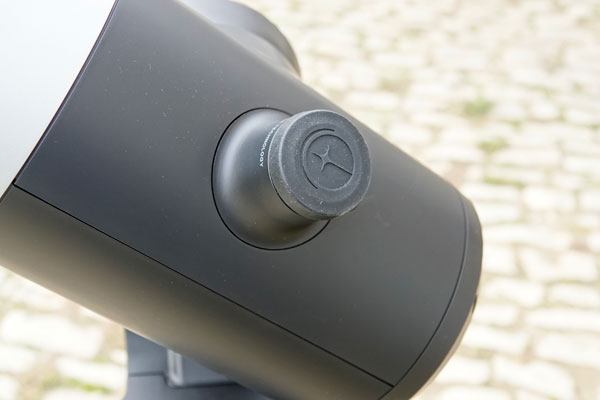 |
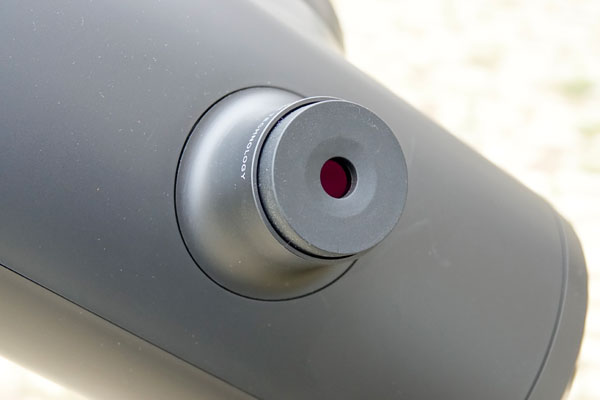 |
|||
Eypiece with lid |
Eypiece without lid |
eVscope 2, closer view from the front |
||
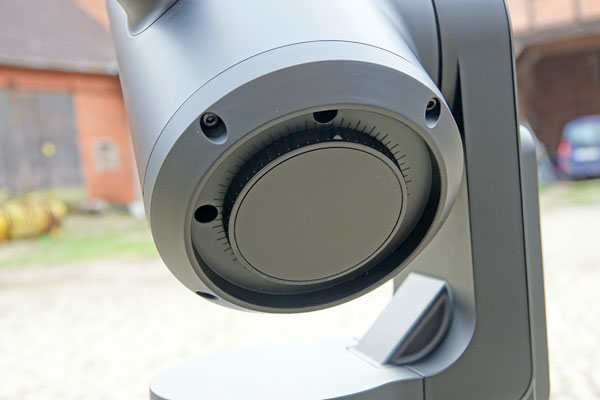 |
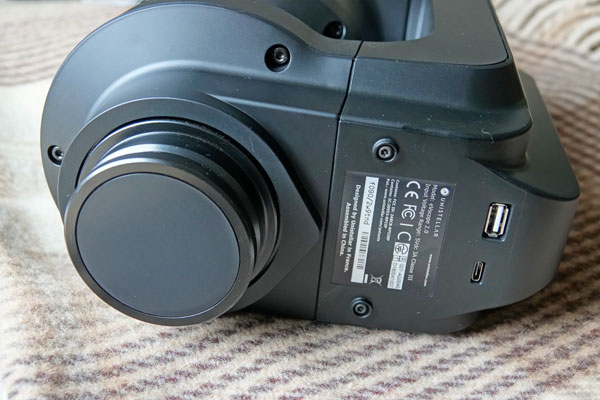 |
 |
||
Focusser |
USB connections |
Ditto, closer view |
Backpack (mostly with Tripod)
Sensor, Pixel Data, Field of View, Image Size (Pixels)
The eVscope2 uses the new sensor Sony IMX347 (CMOS), with a used resolution of about 3 MegaPixels, or 2048 x 1536 pixels (H/V). The pixel size is 2.9µm (quadratic pixels).
With this, all sizes are known to calculate the field of view of the eVscope, which amounts to 0.78° x 0.57° (47' x 34').
The following table shows the eVscope 2, eVscope, and Vaonis Vespera in comparison with my current telescope tubes at the ASI224MC and Atik Infinity:
Field of View |
||||||
| Telescope | Reducer | Focal Length | Aperture | ASI224MC | Atik Infinity | Remarks |
| PS 72/432 | --- | 432 | 72 | 0.65° x 0.48° | 1.19° x 0.89° | The largest FOV |
| C5 | --- | 1250 | 127 | 0.22° x 0.17° | 0.41° x 0.31° | FOV like C8 with reducer |
| C5 | f/6.3 | 787.5 | 127 | 0.36° x 0.17° | 0.65° x 0.49° | FOV a little smaller as with TLAPO1027 |
| C8 | --- | 2032 | 203 | 0.14° x 0.1° | 0.25° x 0.19° | The smallest FOV |
| C8 | f/6.3 | 1280 | 203 | 0.22° x 0.16° | 0.4° x 0.3° | FOV like C5 |
| TLAPO1027 | --- | 714 | 102 | 0.39° x 0.29° | 0.72° x 0.54° | FOV a little larger than for C5 with reducer |
| in Degrees | in Minutes | |||||
| eVscope | --- | 450 | 114 | 0.61° x 0.46 | 36,7'x 27,6' | Same sensor as ASI224: Sony IMX224 |
| eVscope 2 | --- | 450 | 114 | 0.78° x 0.57°* | 47' x 34' | *New sensor: Sony IMX347 |
| Vespera | 50 | 200 | 1.5° x 0.9°** | 90' x 54' (ca.) | ** New sensor: Sony IMX462 | |
Image Size (Pixels)
Sony's IMX347 sensor can be used with different pixel numbers; 2688 x 1520 pixels are recommended by Sony; 2712 x 1538 effective pixels are the maximum possible.
Unistellar has opted for the following image formats:
- Rectangular format: 2048 x 1536 pixels in Live View mode and
3200 x 2400 pixels in Enhanced Vision mode, which are interpolated, i.e.
upscaled, from 2048 x 1536.
This gives the eVscope 2 photos in the rectangular format an aspect ratio of 4:3, just like the original eVscope's ones, although more would have been possible horizontally. - Quadratic format: 1792 x 1792 pixels in Live View mode and 2800 x 2800 pixels in Enhanced Vision mode (which are probably interpolated, i.e. upscaled, from 1792 x 11792).
The eVscope 2 uses the same app as the original eVscope and the eVscope eQuinox, and should also use the same new image processing; this was introduced with app version 1.3 (my eVscope 2 started with app version 1.4.3). While the original eVscope upscales the photos by a factor of 2 in EV mode, the eVscope 2 only uses a factor of just under 1.6.
Visited Sky Objects
B 33, M 1, M 2, M 15, M 27, M 31, M 33, M 42, M 43, M 45, M 57, M 71, M 74, M 76, M 77, M 78, NGC 869, NGC 884, NGC 891, NGC 1977, NGC 2024, NGC 6992/5, NGC 7317, NGC 7331, Moon (December 2021), Jupiter (January 2022)
For more objects, see page My Deep Sky Observations with the eVscope 2 (Complete List of Observed DSO)
Note: In order to avoid redundancy and double work, I will move the list of visited sky objects to this page some day in the future...
How To Observe with the eVscope 2
Page Observation in Brief offers instructions for using the eVscope. They can be easily transferred to the eVscope 2.
First Experiences
Observations
For space reasons, I deferred my first observation experiences to an extra page. See page First Experiences for more information.
Photo Attempts
In the following, I present my very first photos with the eVscope 2 taken in December 2021 in alphabetical order according to the DSO numbers. These can also be found on page First Photos.
Also note that at the beginning, the eVscope 2 was decollimated, and despite several collimation attempts still is. In addition, it was not correctly focused in some cases, although I had used the Bahtinon mask for focusing (maybe, the telescope was not thermalized at the beginning...). Meanwhile, I also know from Unistellar that the primary mirror was under tension (I sent my eVscope 2 to Unistellar for check and repair). So the photos presented here definitely do not show the true capabilities of the eVscope 2.
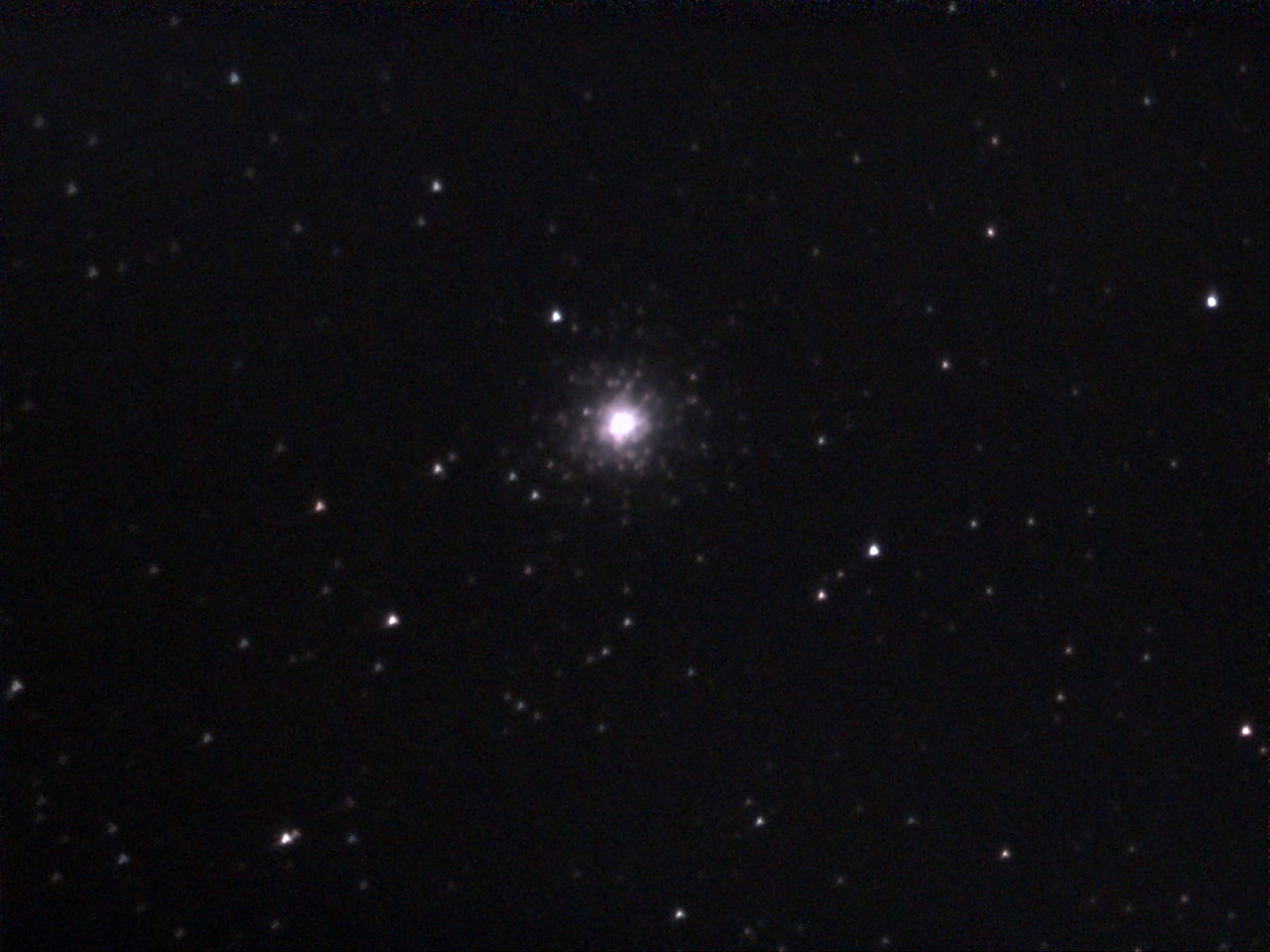 |
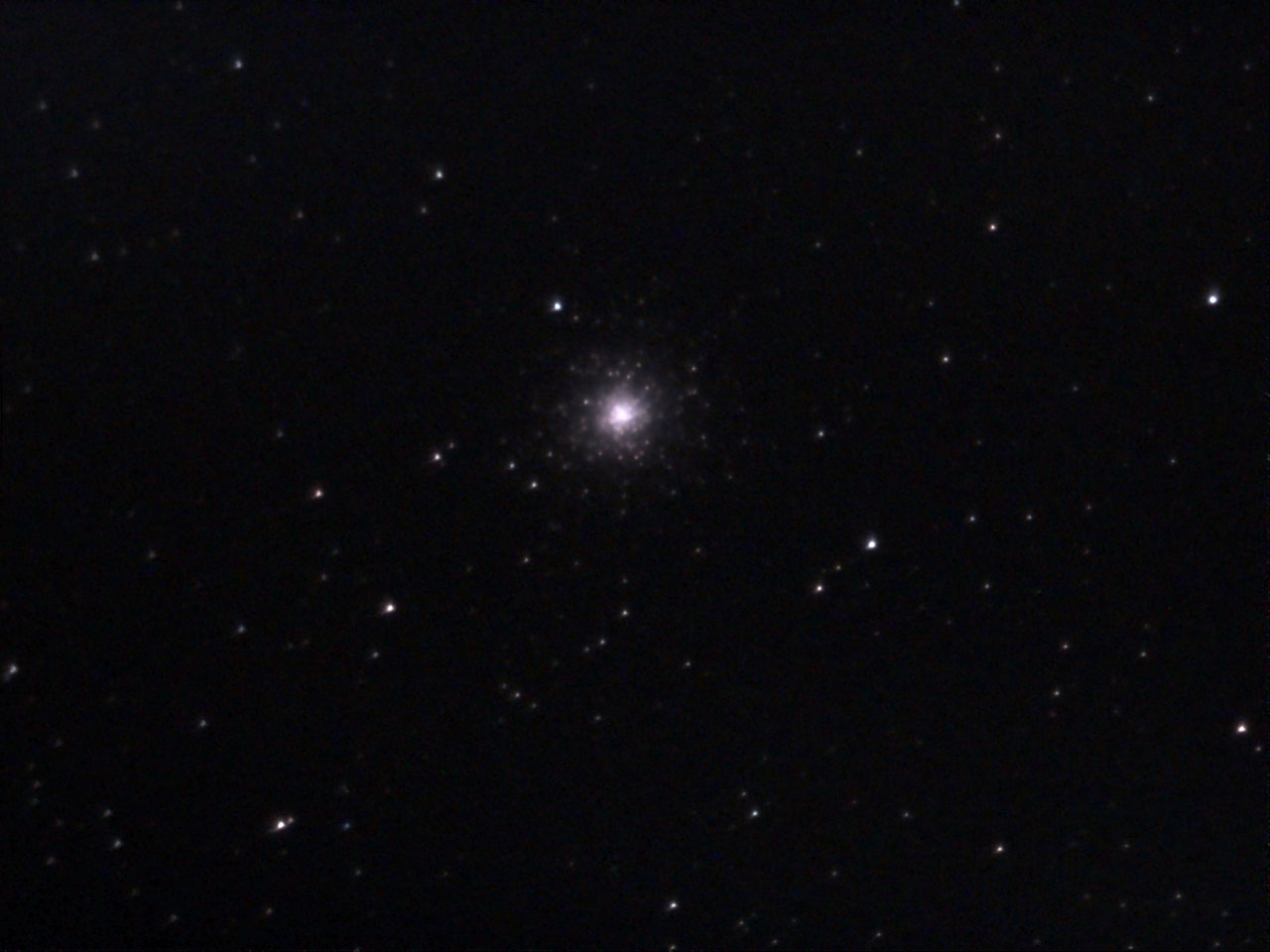 |
|||
M 2 - eVscope 2, Dec 5, 2021, unprocessed (original size) |
M 2 - eVscope 2, Dec 5, 2021, unprocessed (original size) |
|||
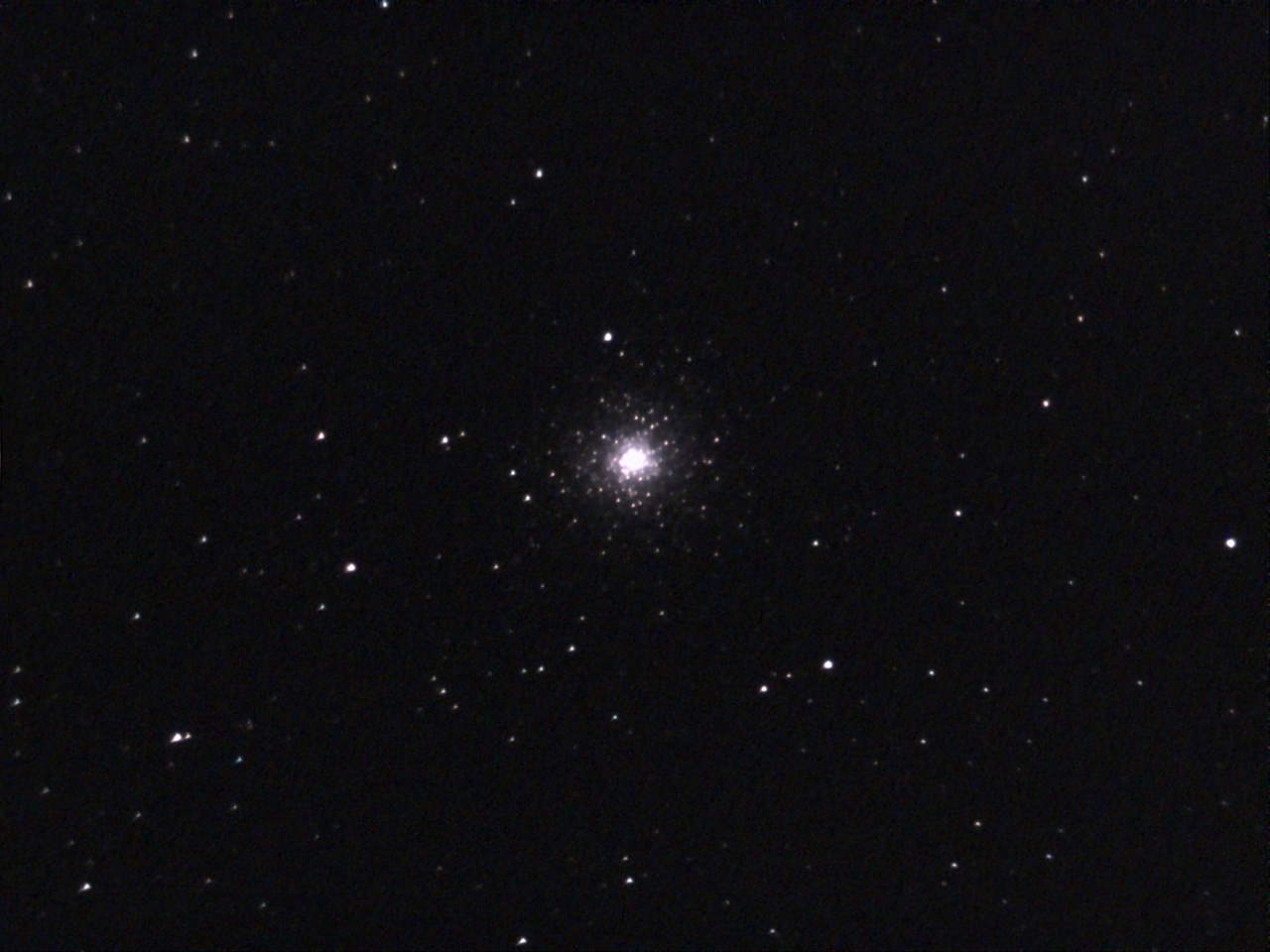 |
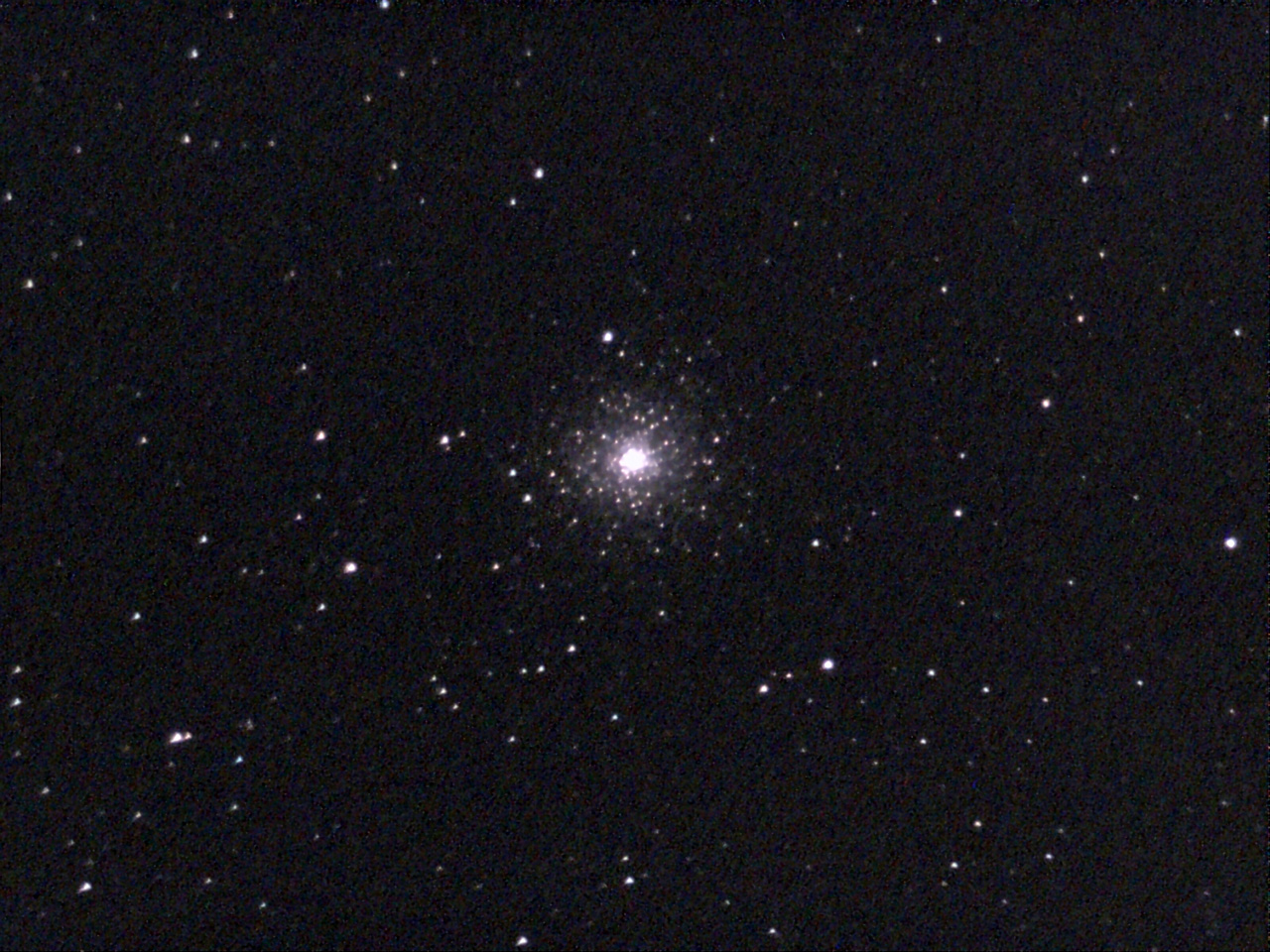 |
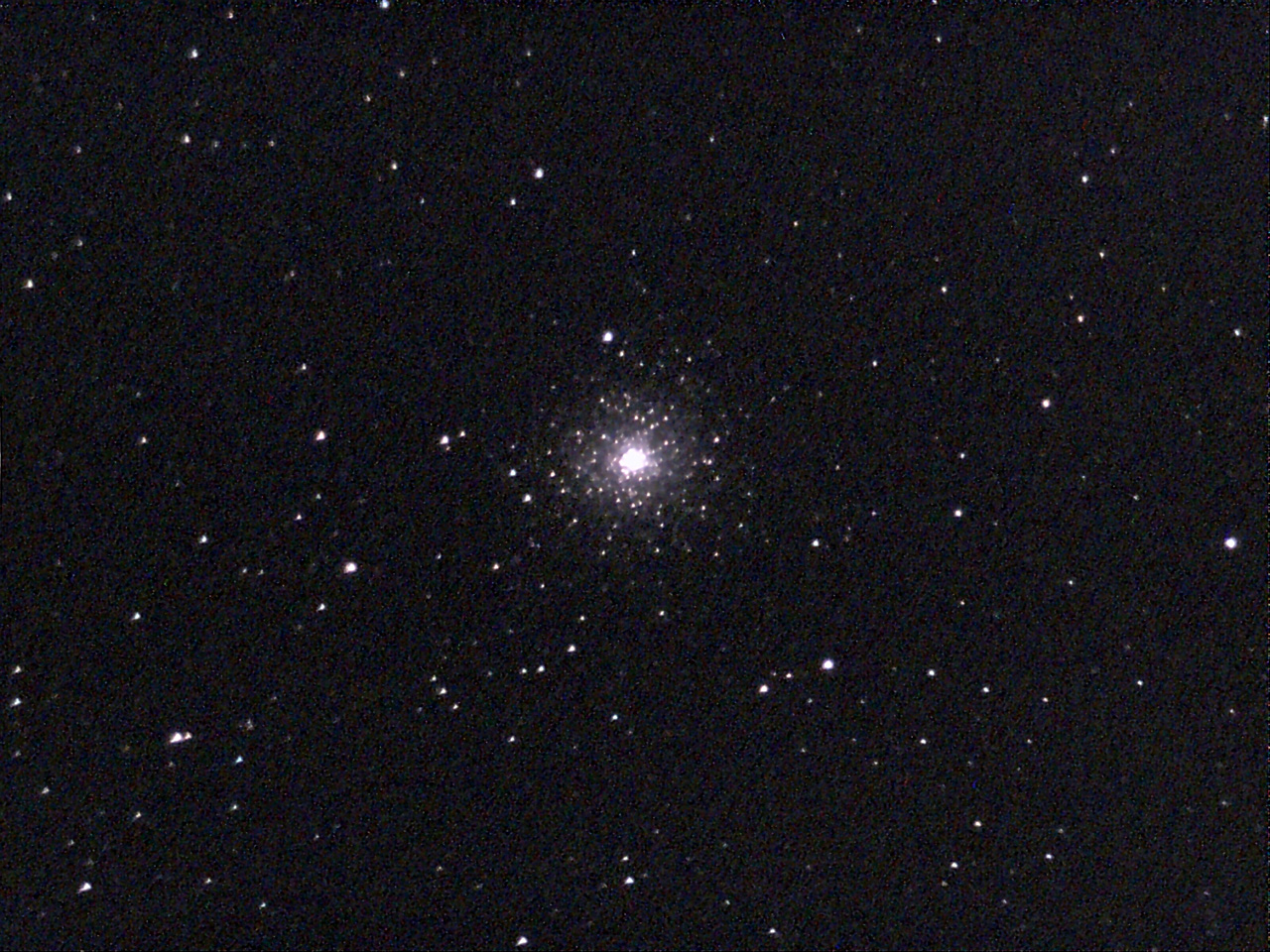 |
||
M 2 - eVscope 2, Dec 10, 2021, unprocessed (original size) |
M 2 - eVscope 2, Dec 10, 2021, processed (original size) |
M 2 - eVscope 2, Dec 10, 2021, processed, and sharpened (original size) |
||
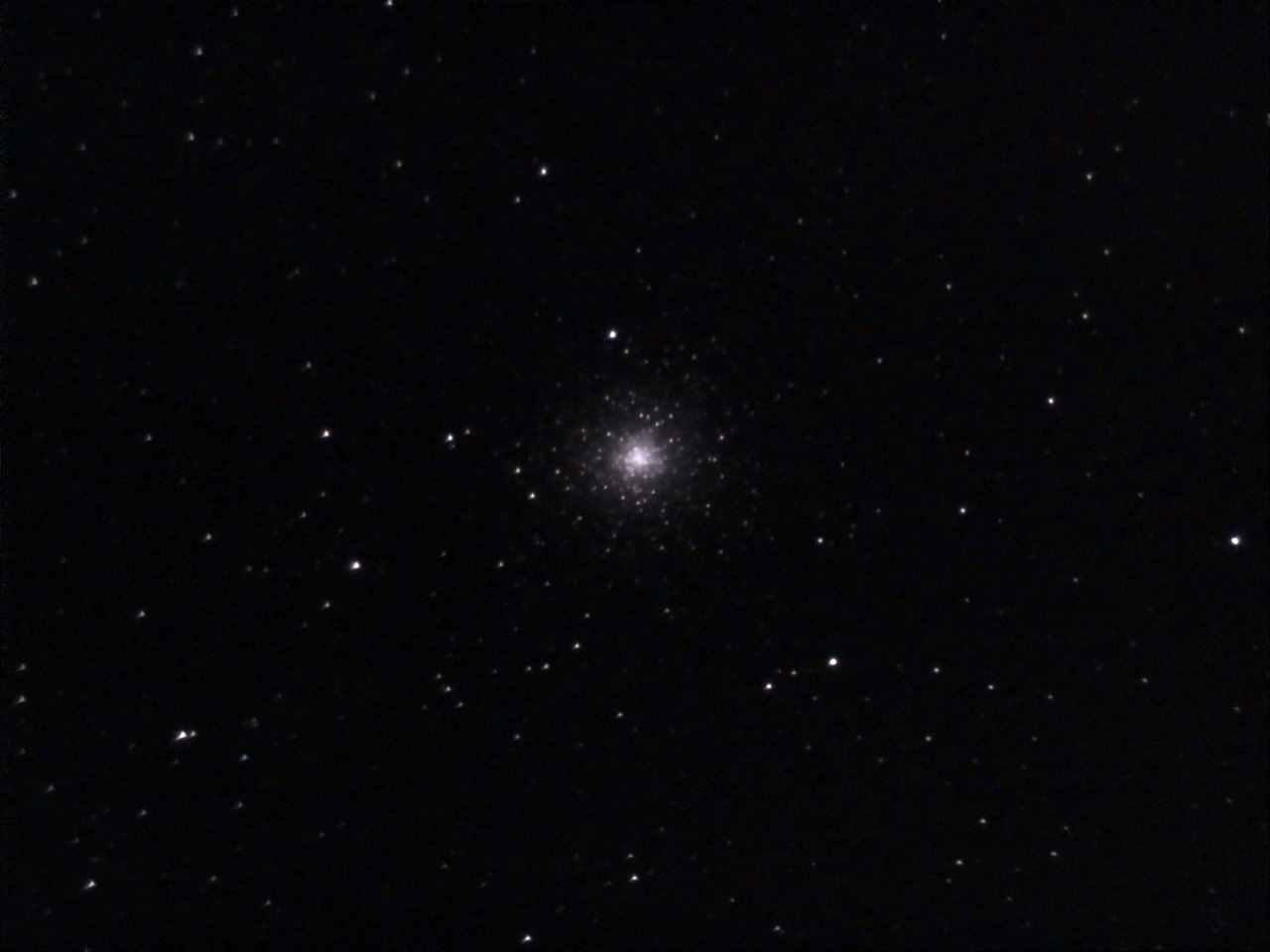 |
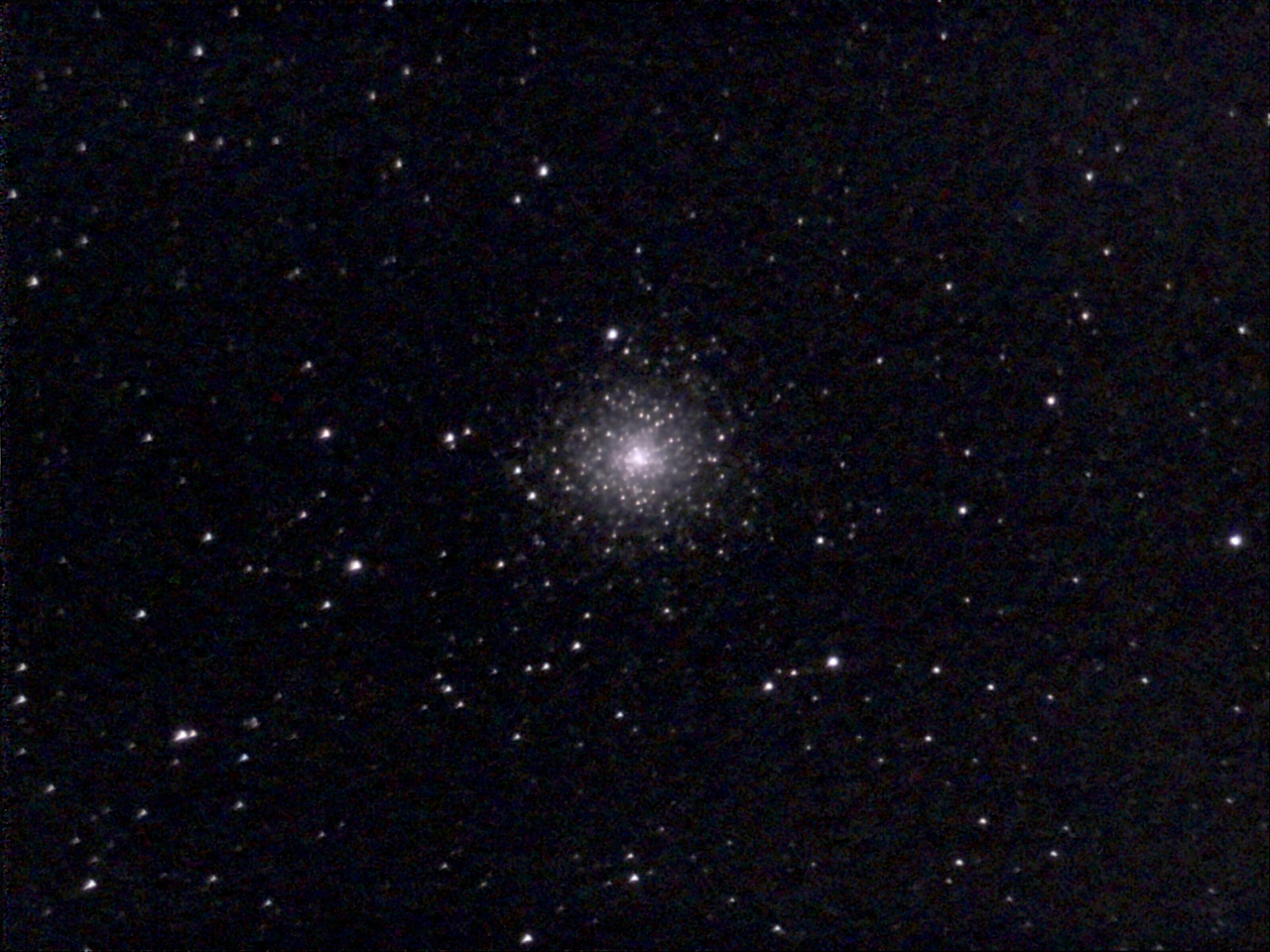 |
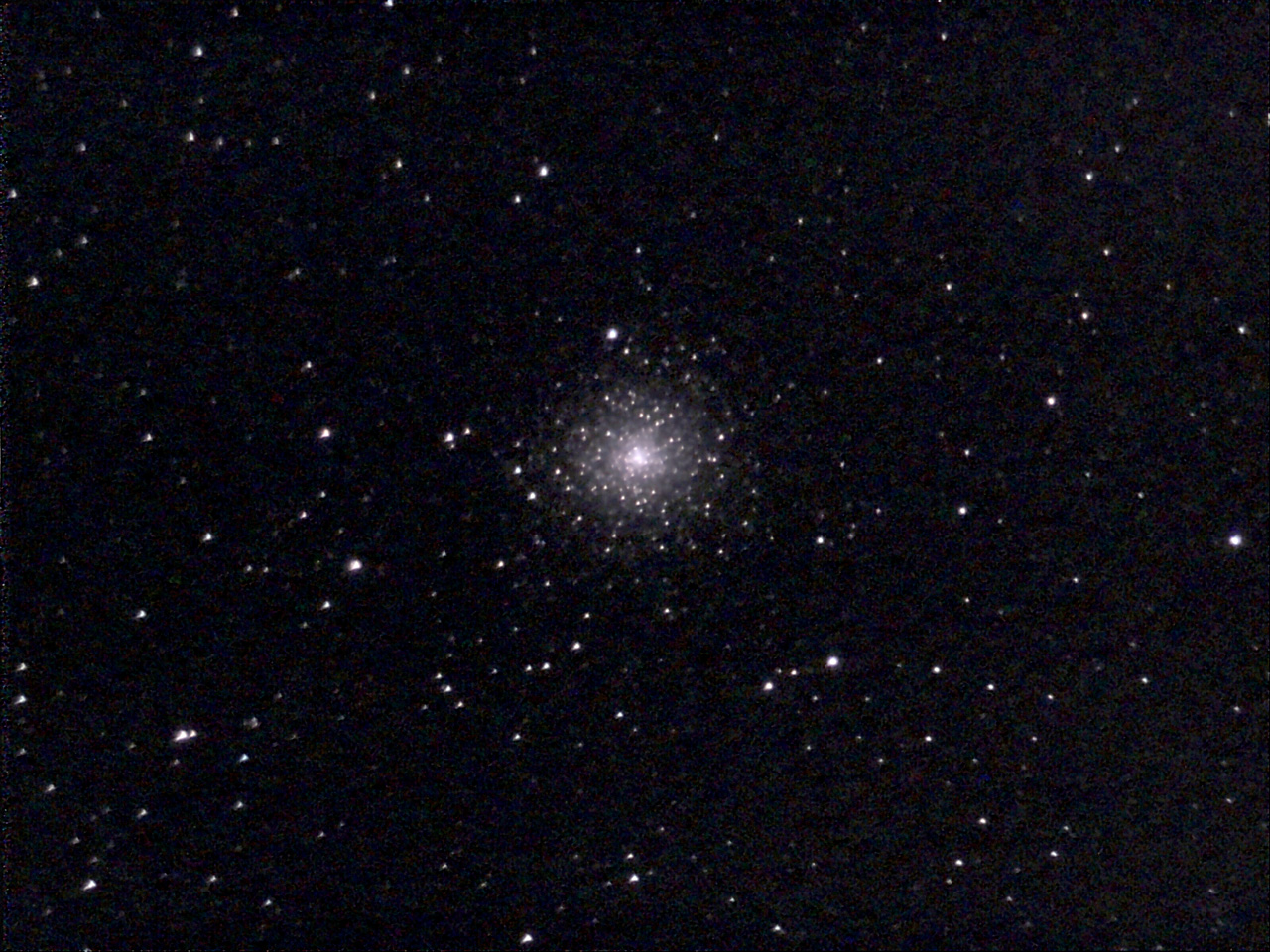 |
||
M 2 - eVscope 2, Dec 10, 2021, exposed manually, unprocessed (original size) |
M 2 - eVscope 2, Dec 10, 2021, exposed manually, processed (original size) |
M 2 - eVscope 2, Dec 10, 2021, exposed manually, processed, and sharpened (original size) |
||
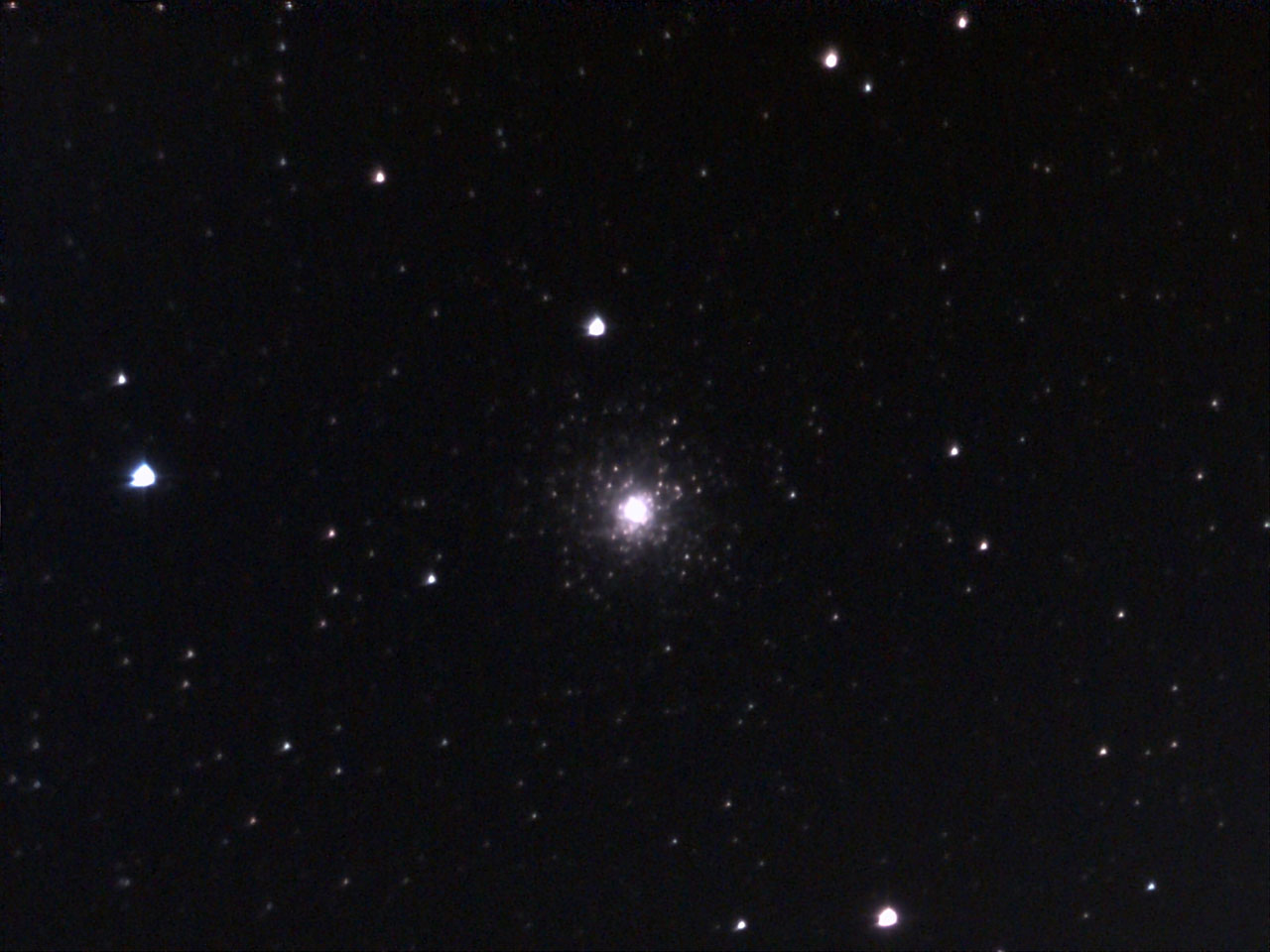 |
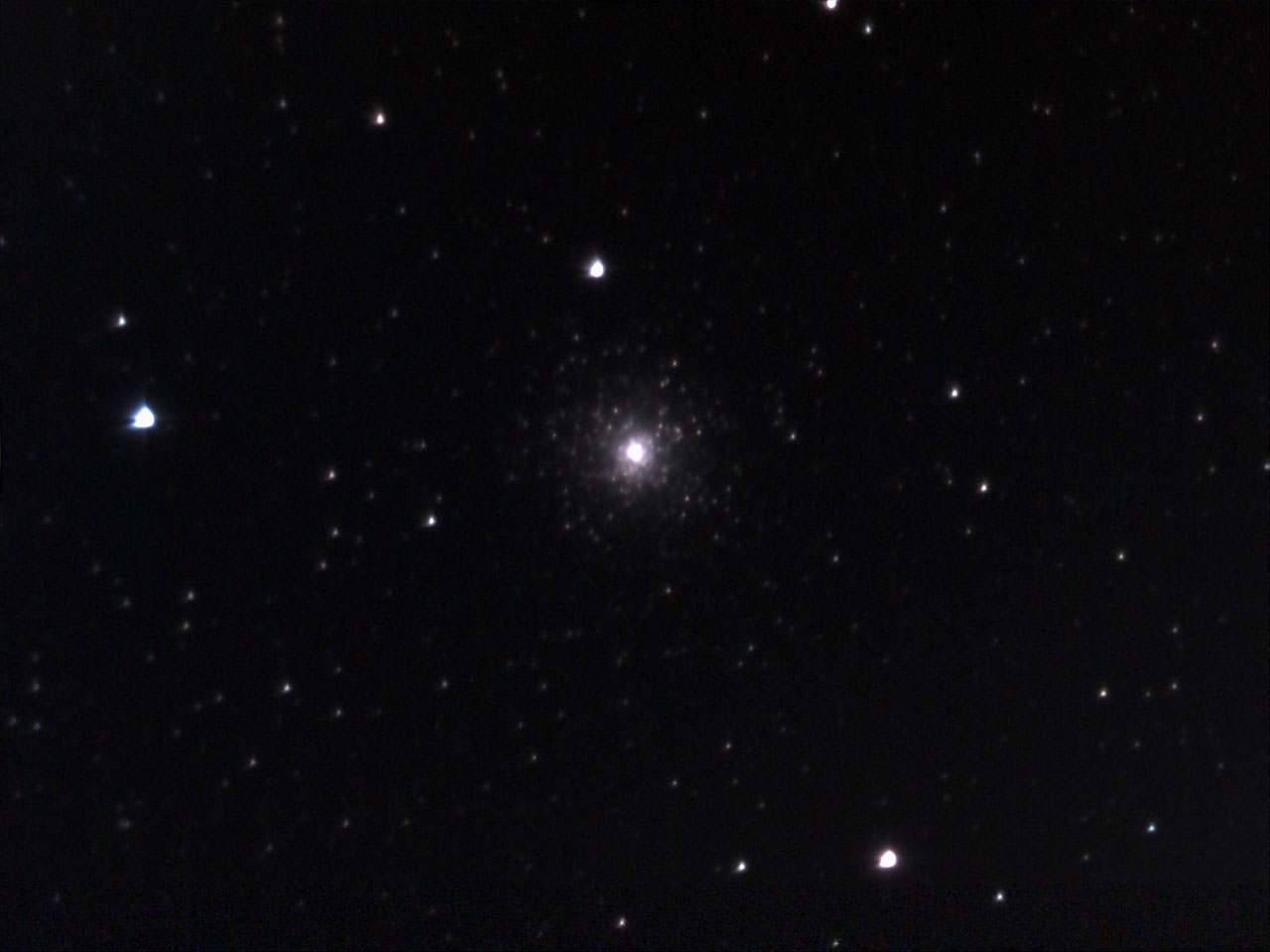 |
|||
M 15 - eVscope 2, Dec 5, 2021, unprocessed (original size) |
M 15 - eVscope 2, Dec 5, 2021, unprocessed (original size) |
|||
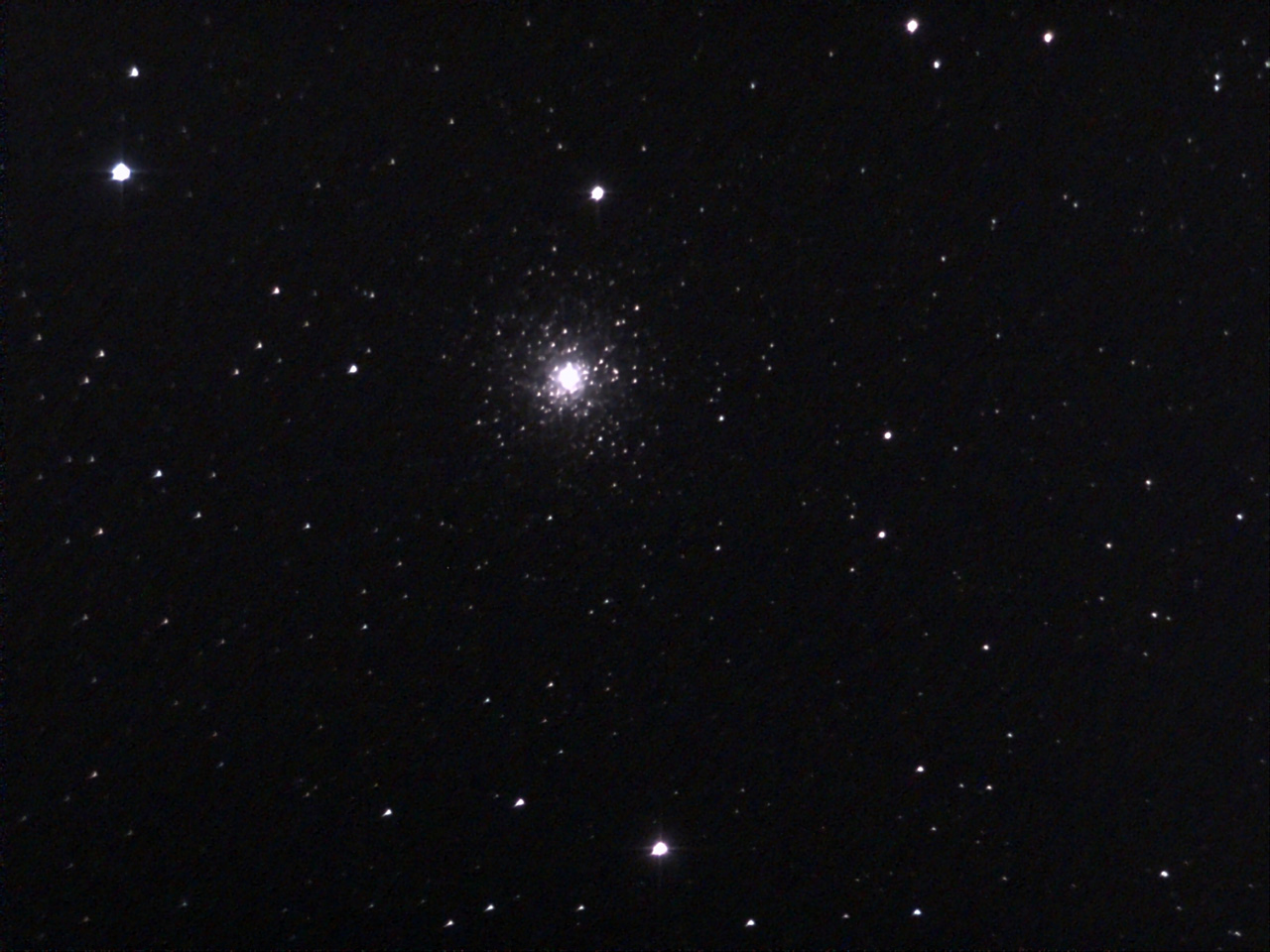 |
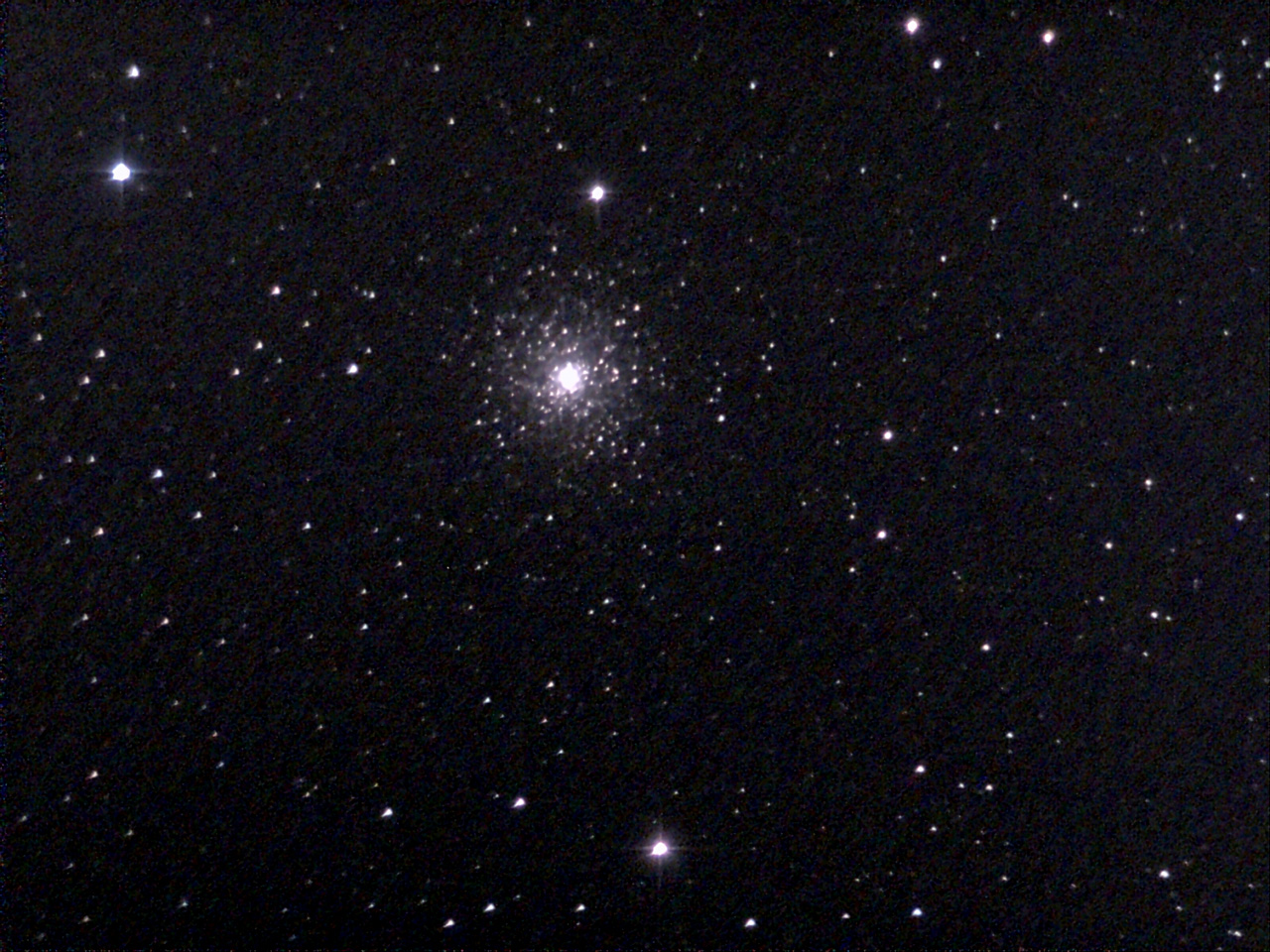 |
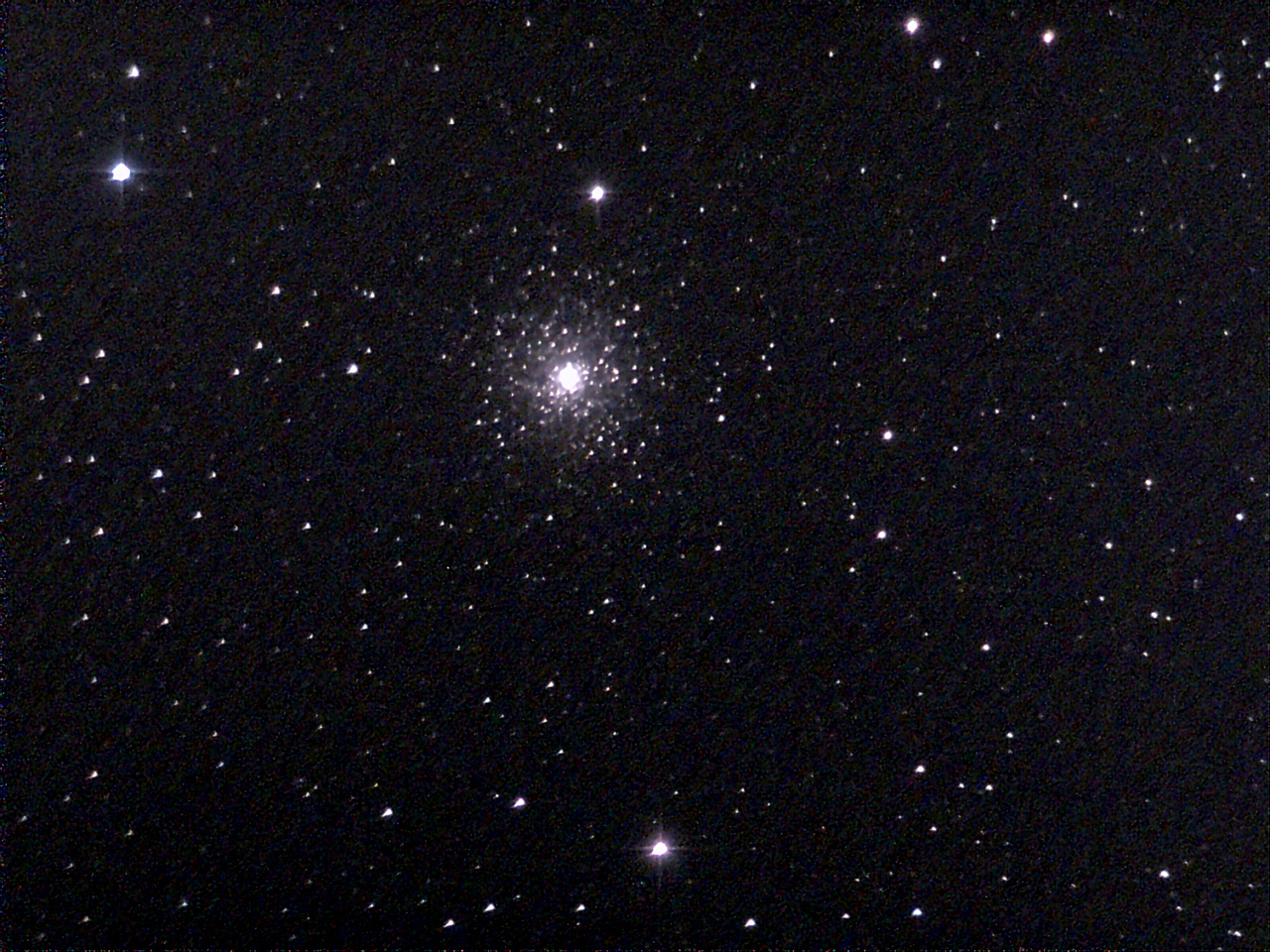 |
||
M 15 - eVscope 2, Dec 10, 2021, unprocessed (original size) |
M 15 - eVscope 2, Dec 10, 2021, processed (original size) |
M 15 - eVscope 2, Dec 10, 2021, processed, and sharpened (original size) |
||
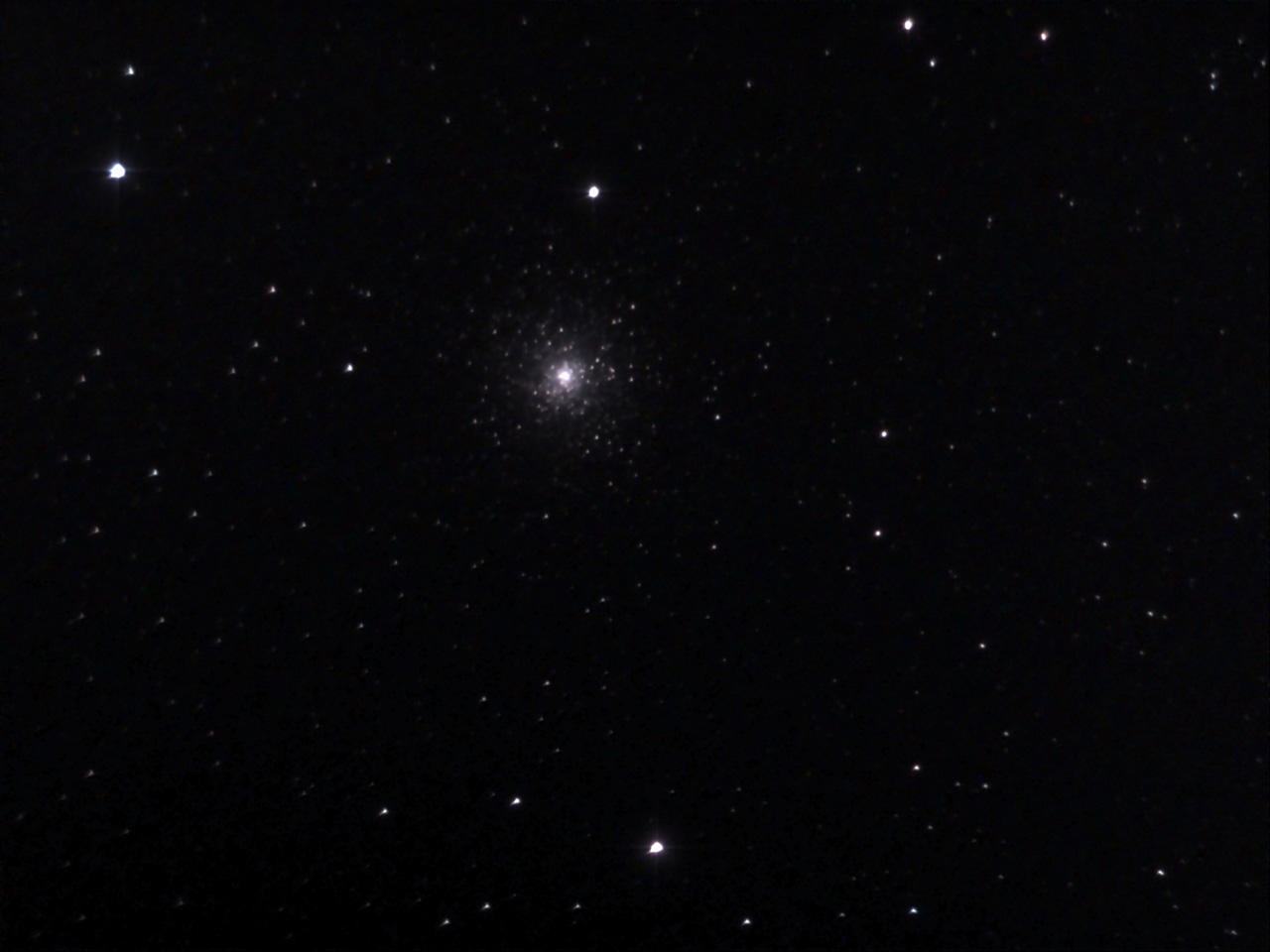 |
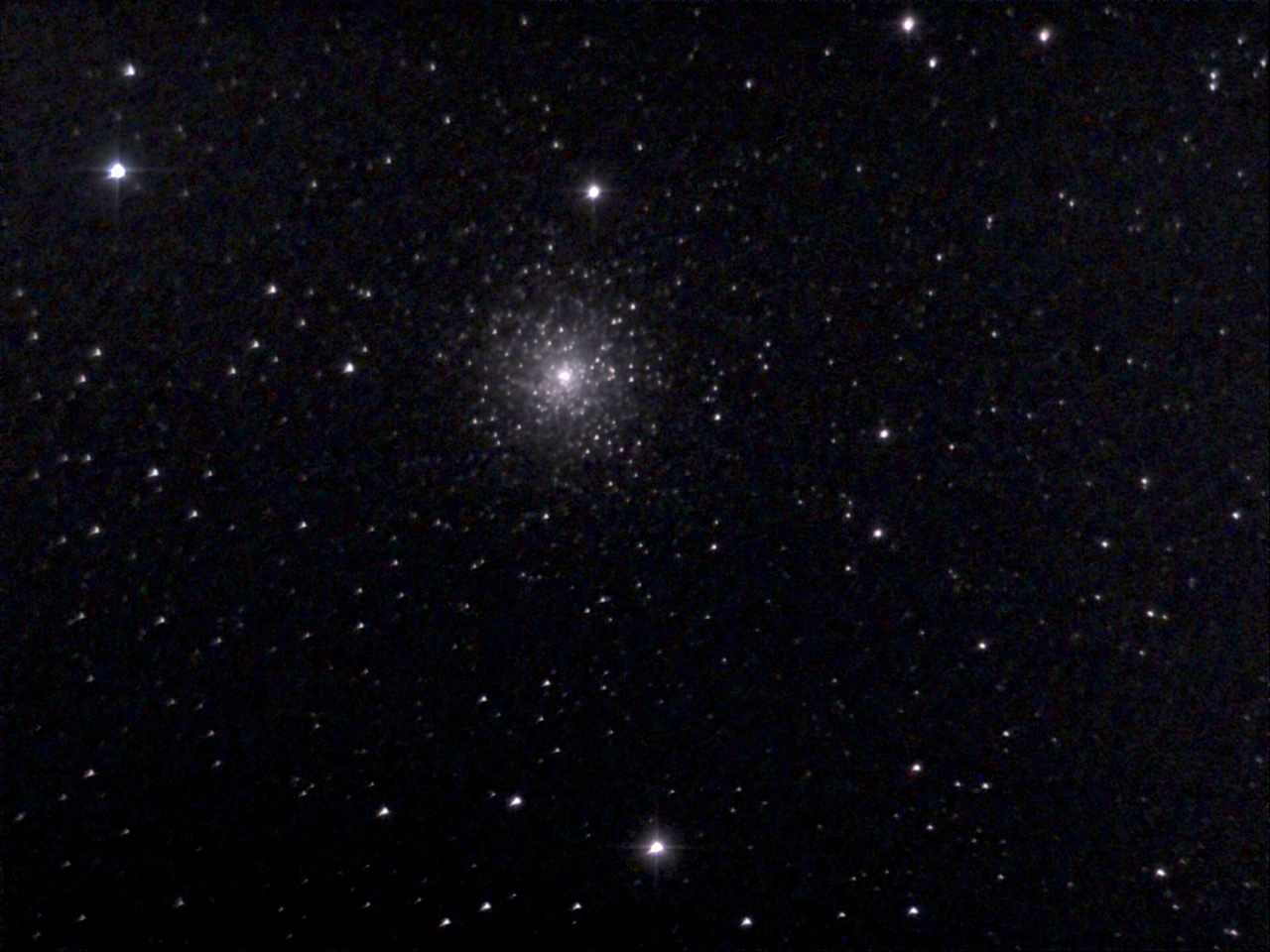 |
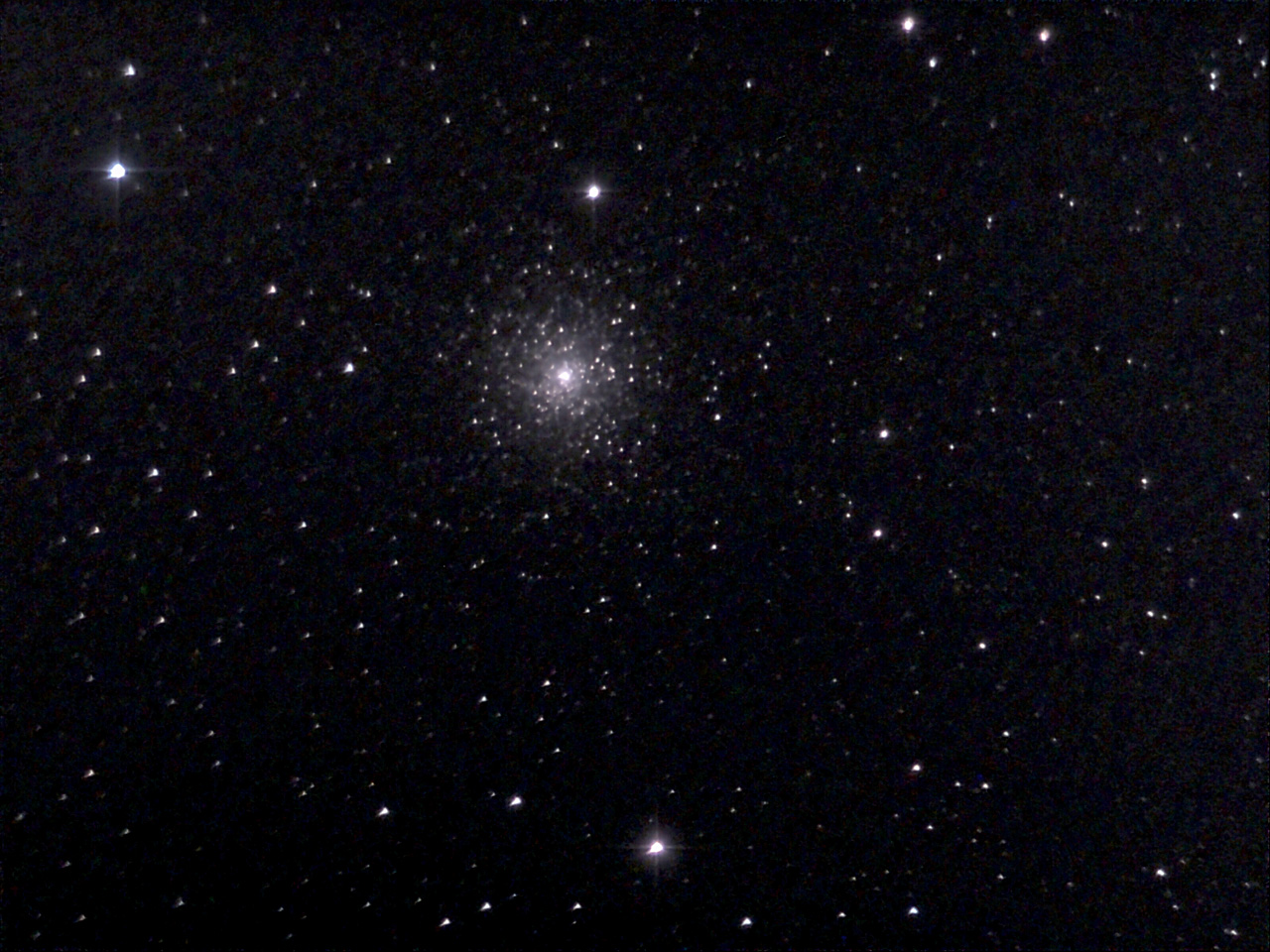 |
||
M 15 - eVscope 2, Dec 10, 2021, exposed manually, unprocessed (original size) |
M 15 - eVscope 2, Dec 10, 2021, exposed manually, processed (original size) |
M 15 - eVscope 2, Dec 10, 2021, exposed manually, processed, and sharpened (original size) |
||
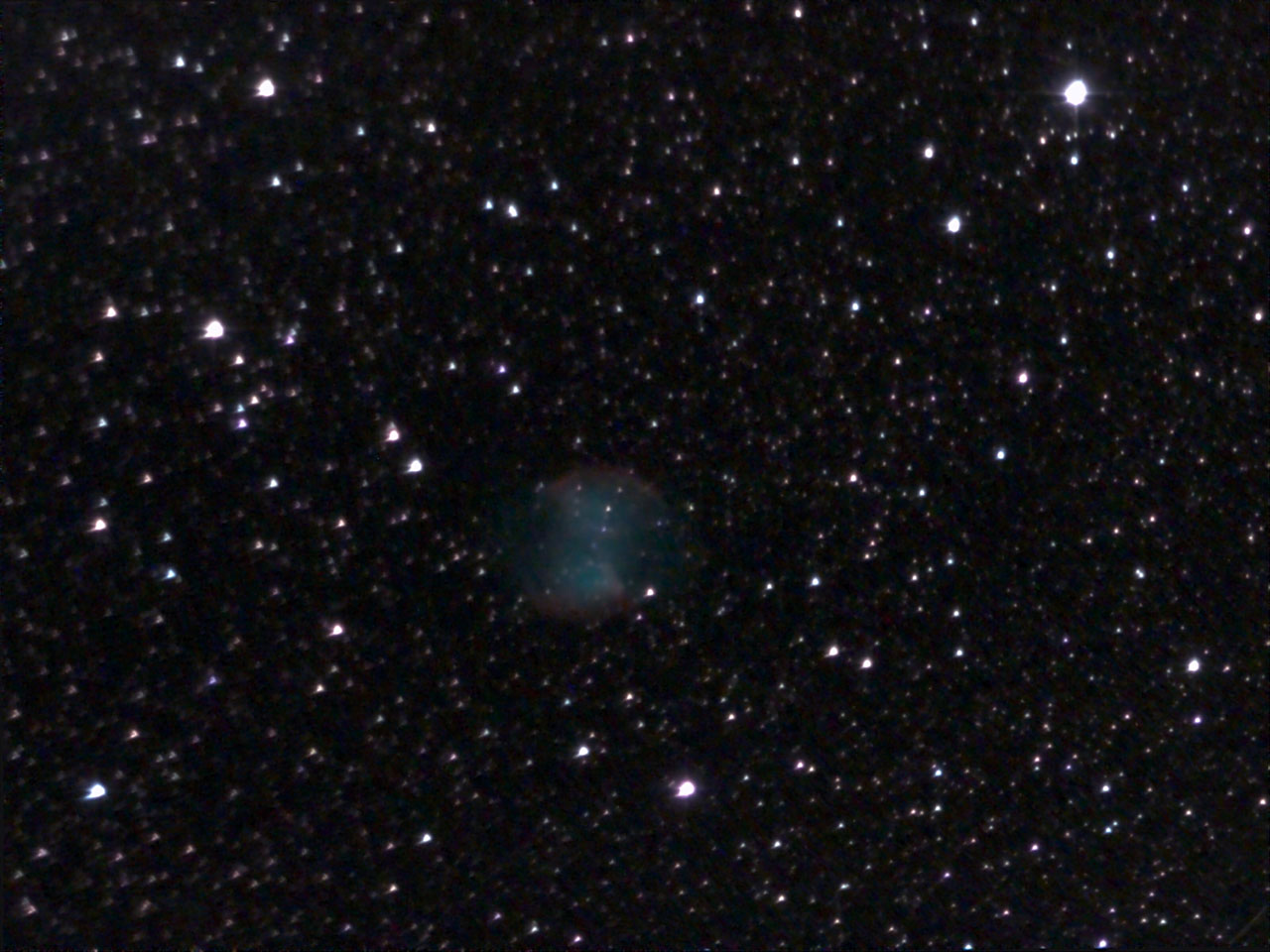 |
||||
M 27 - eVscope 2, Dec 5, 2021, unprocessed (fuzzy) (original size) |
||||
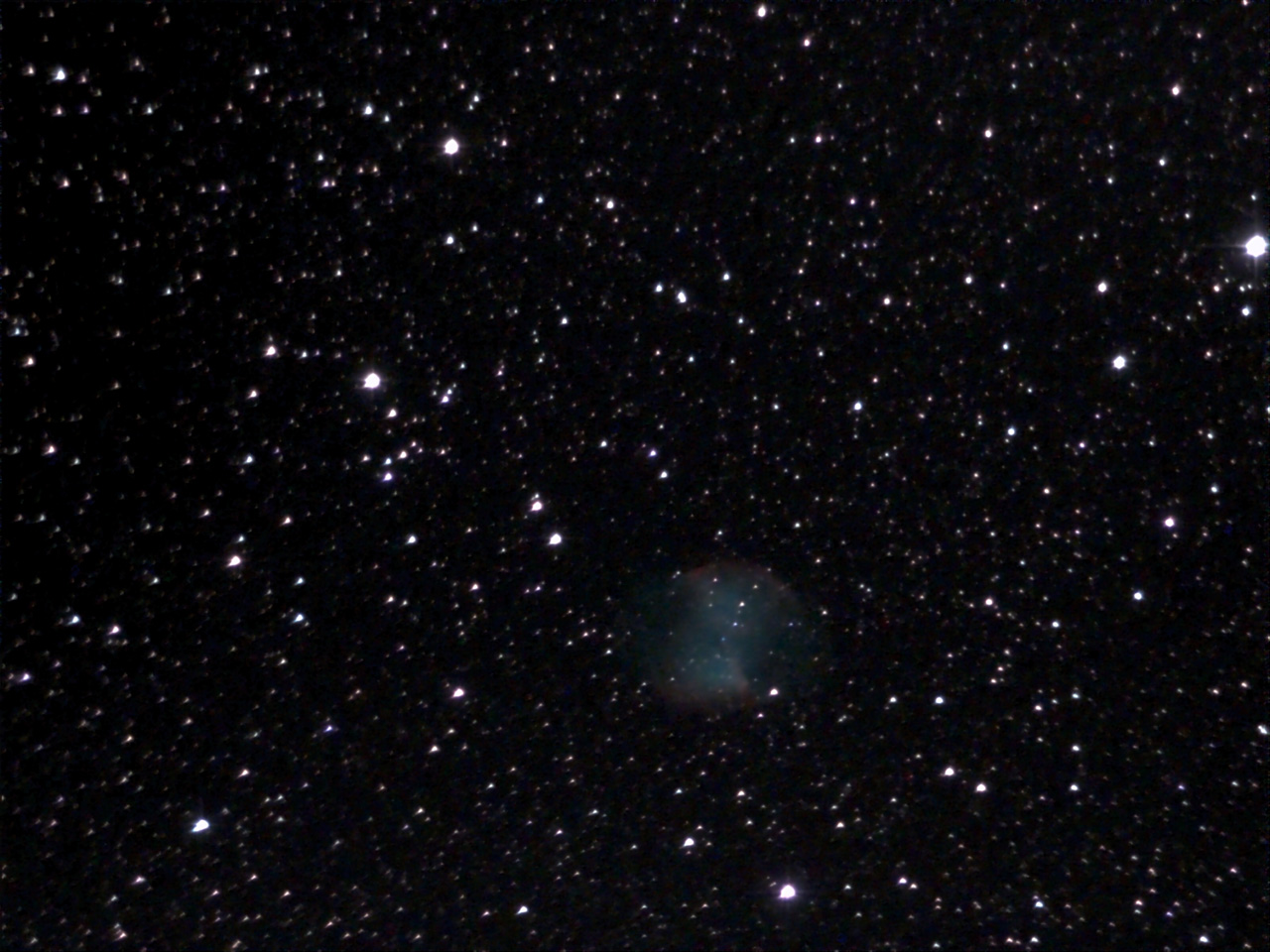 |
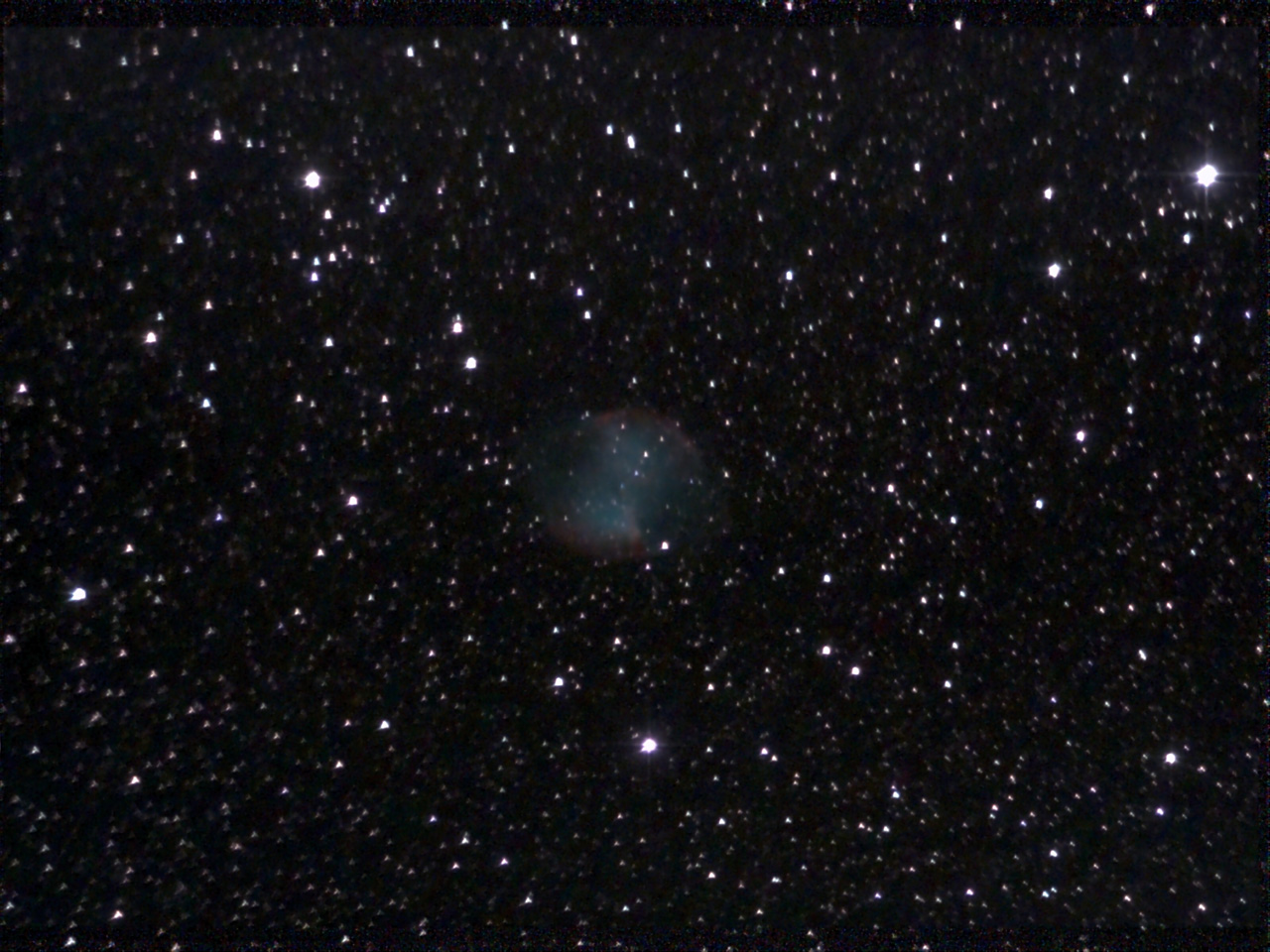 |
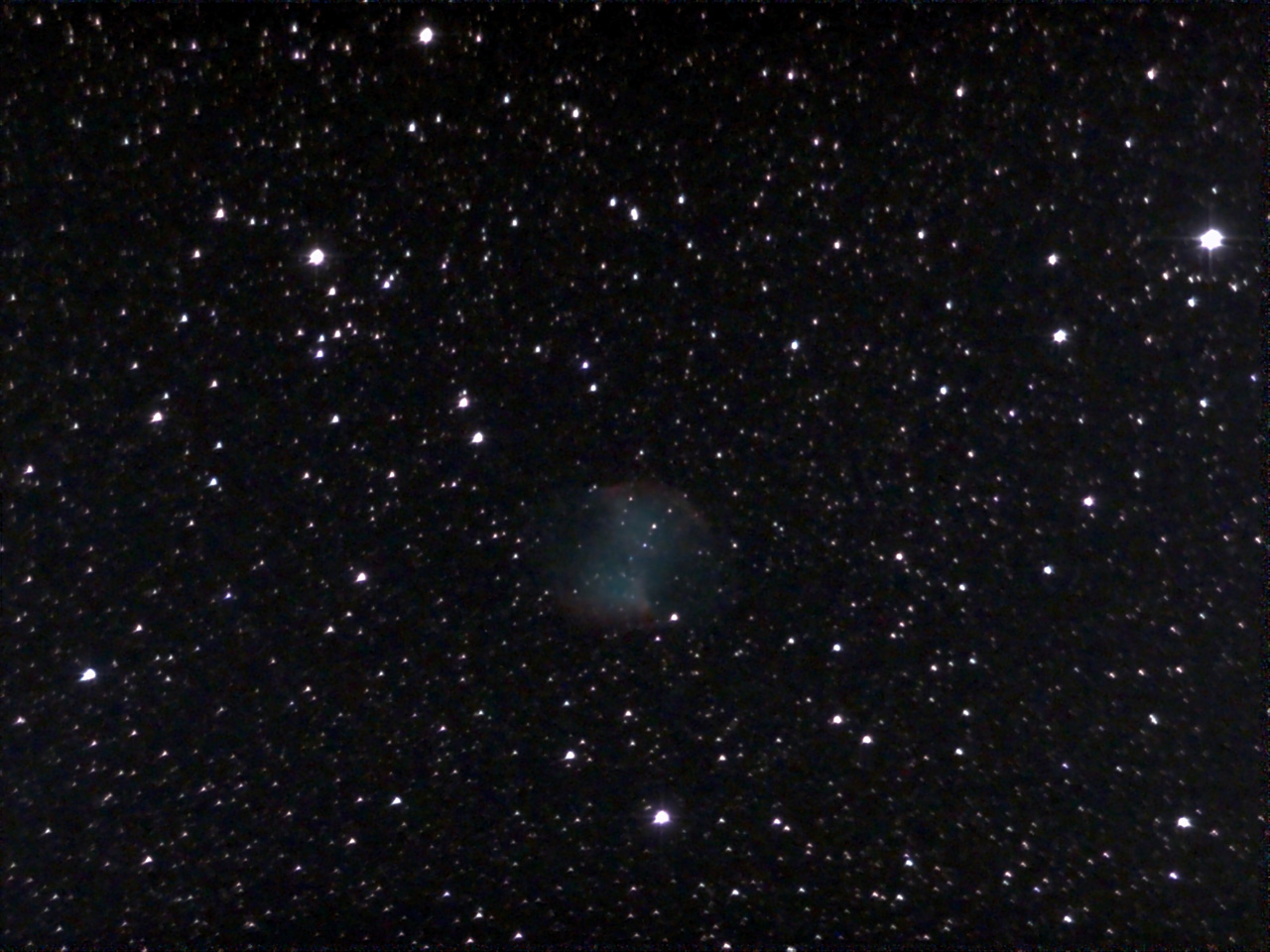 |
||
M 27 - eVscope 2, Dec 10, 2021, unprocessed (original size), best collimation so far |
M 27 - eVscope 2, Dec 20, 2021, unprocessed (original size) |
M 27 - eVscope 2, Dec 21, 2021, unprocessed (original size) |
||
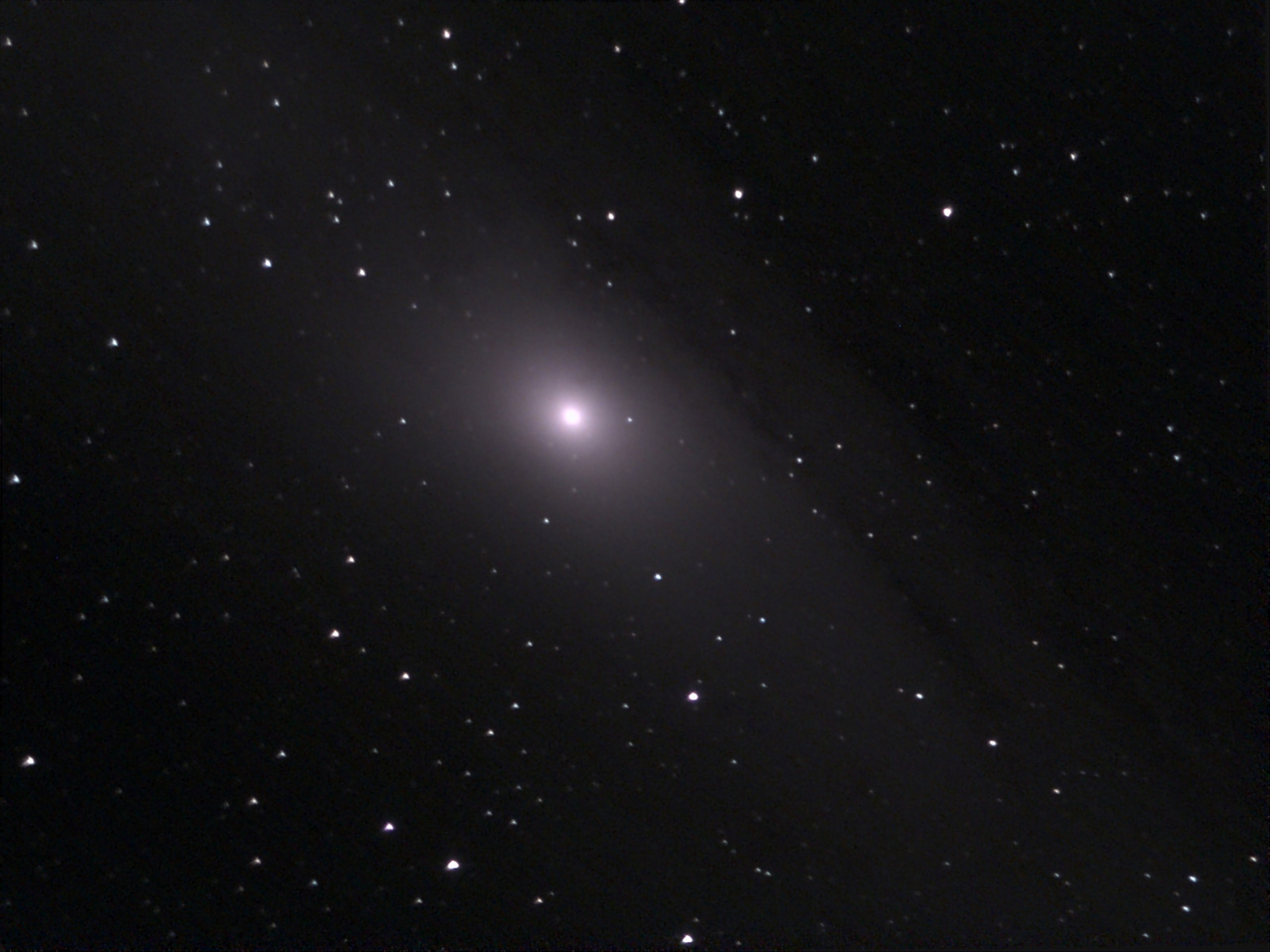 |
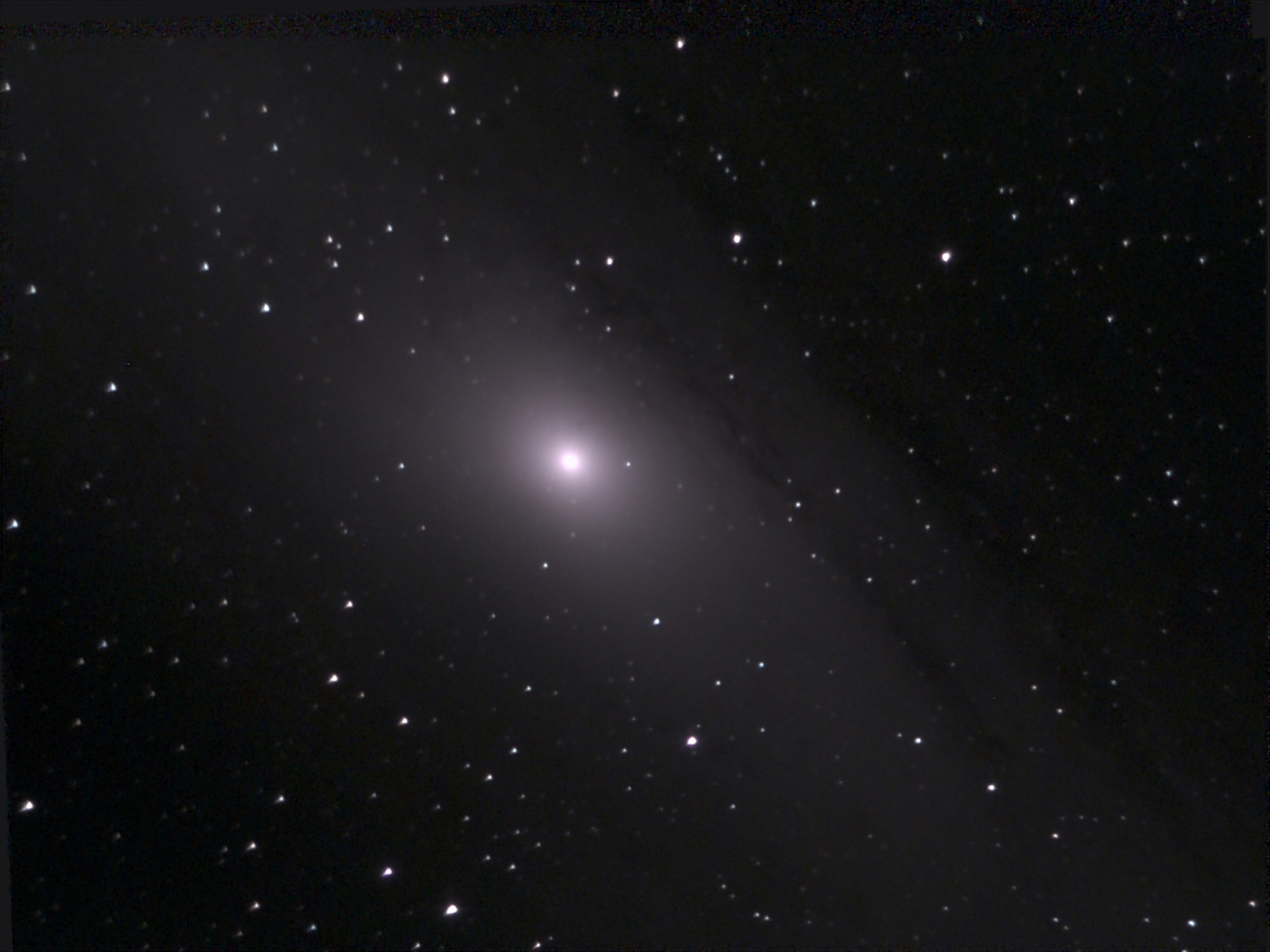 |
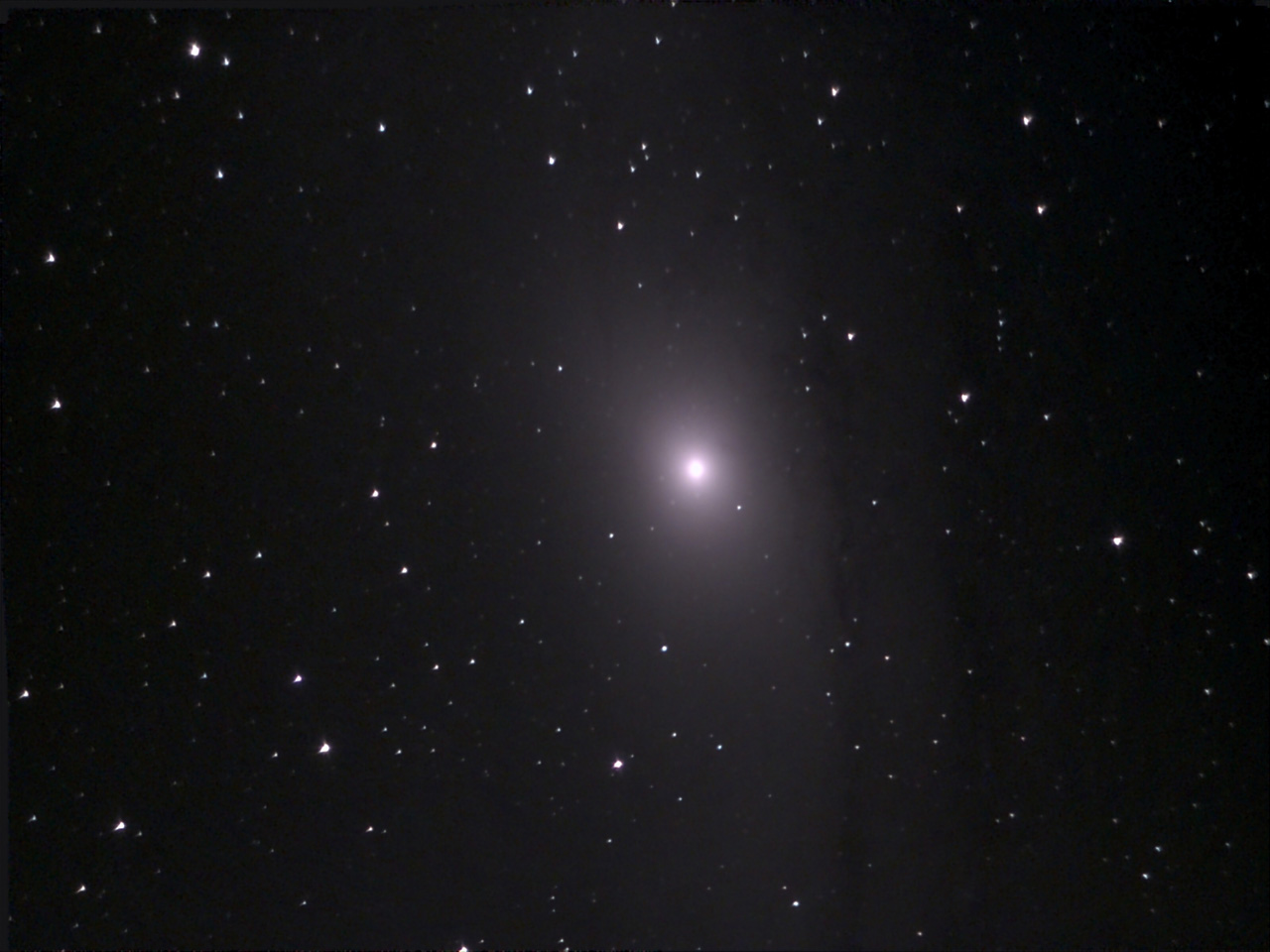 |
||
M 31 - eVscope 2, Dec 10, 2021, unprocessed (original size) |
M 31 - eVscope 2, Dec 10, 2021, unprocessed (original size) |
M 31 - eVscope 2, Dec 21, 2021, unprocessed (original size) |
||
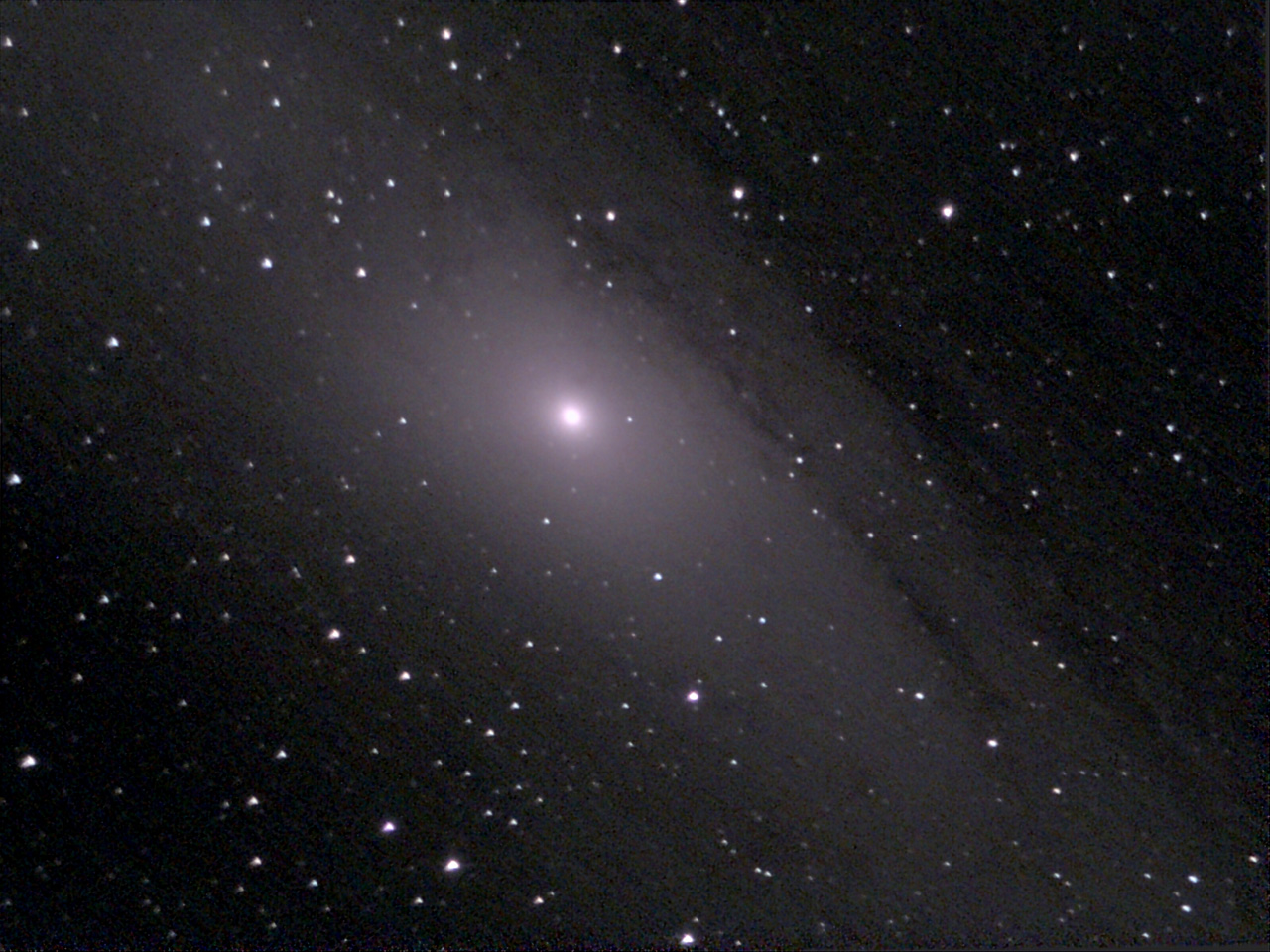 |
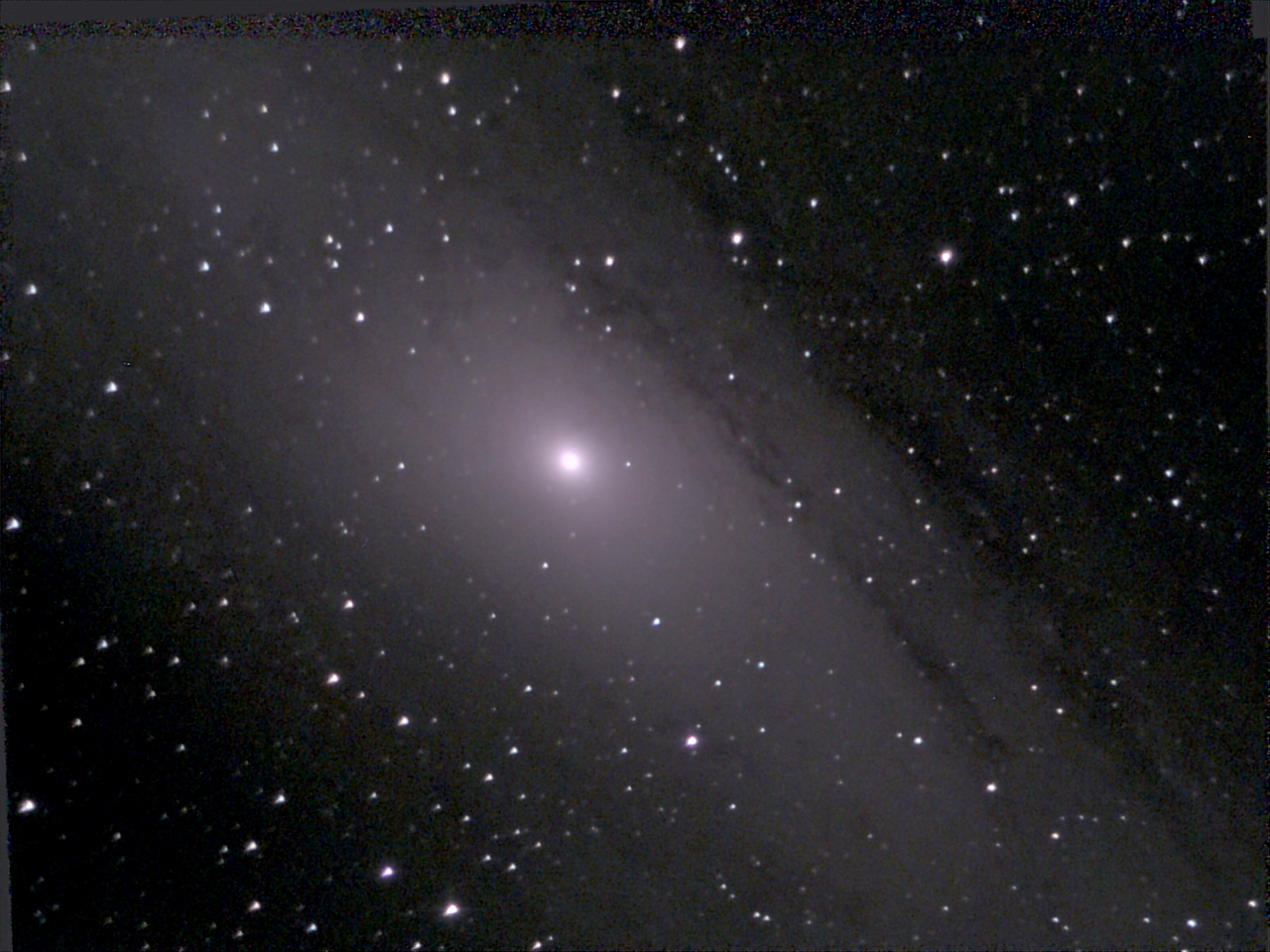 |
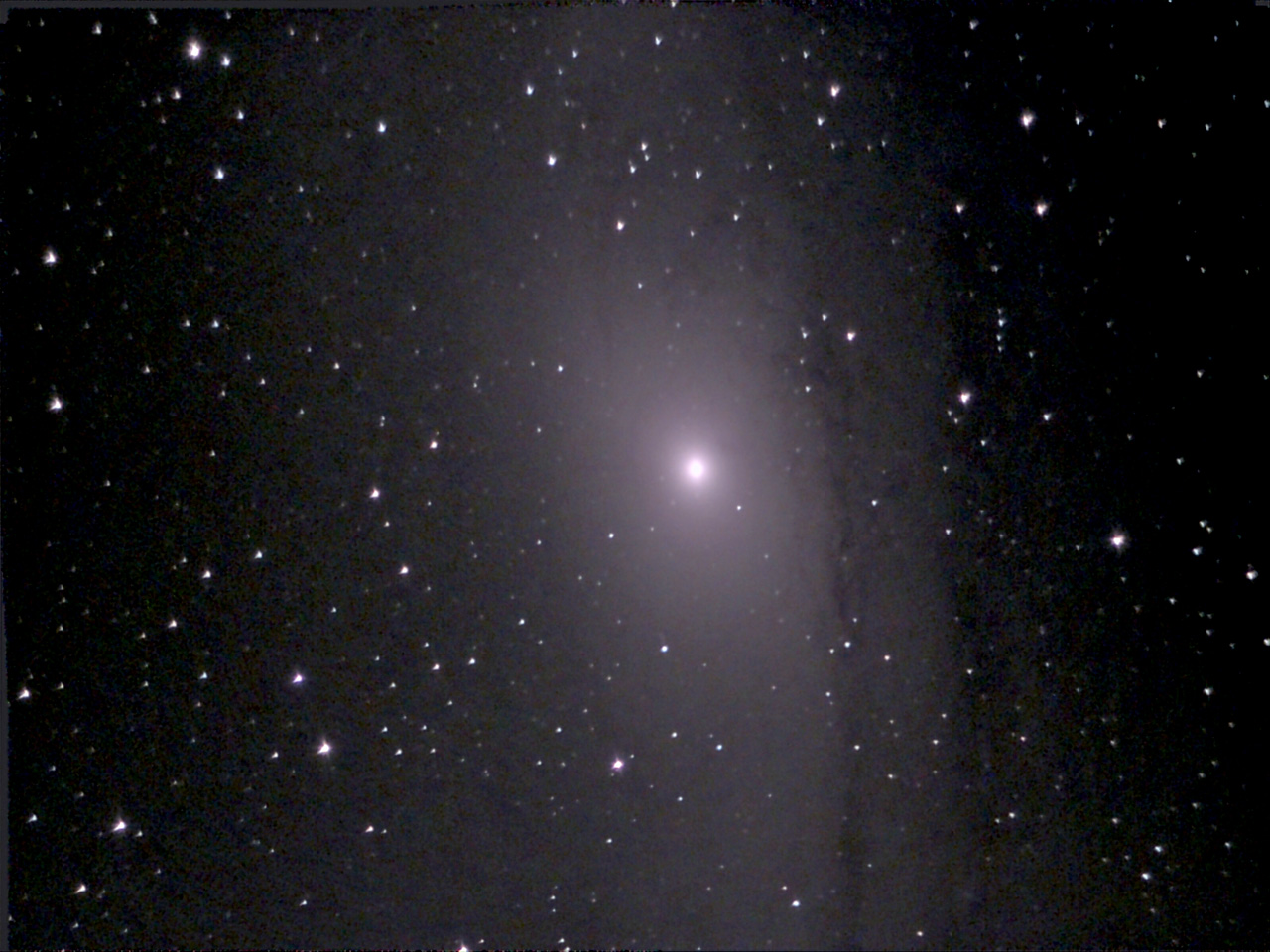 |
||
M 31 - eVscope 2, Dec 10, 2021, processed (original size) |
M 31 - eVscope 2, Dec 10, 2021, processed (original size) |
M 31 - eVscope 2, Dec 21, 2021, processed (original size) |
||
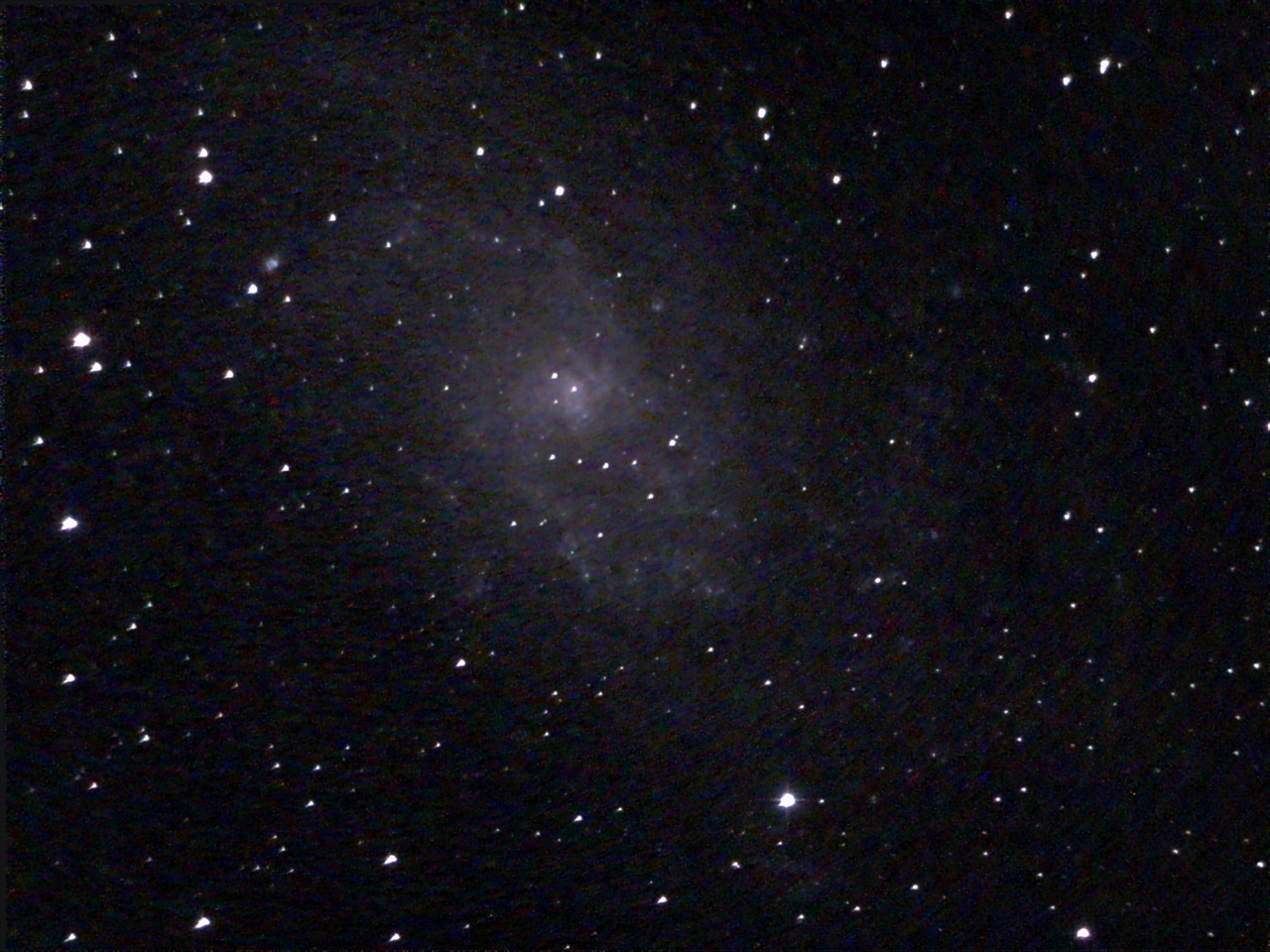 |
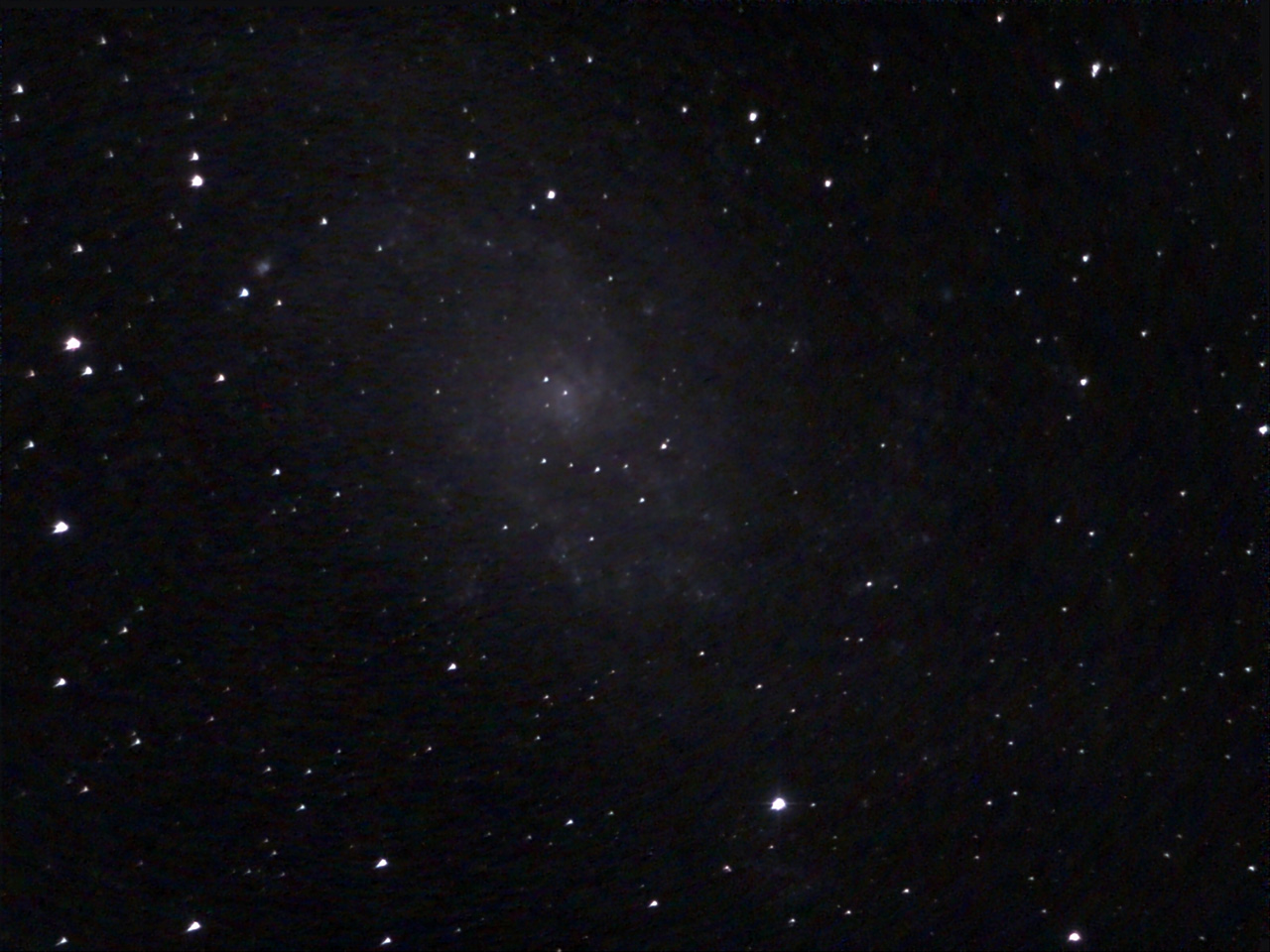 |
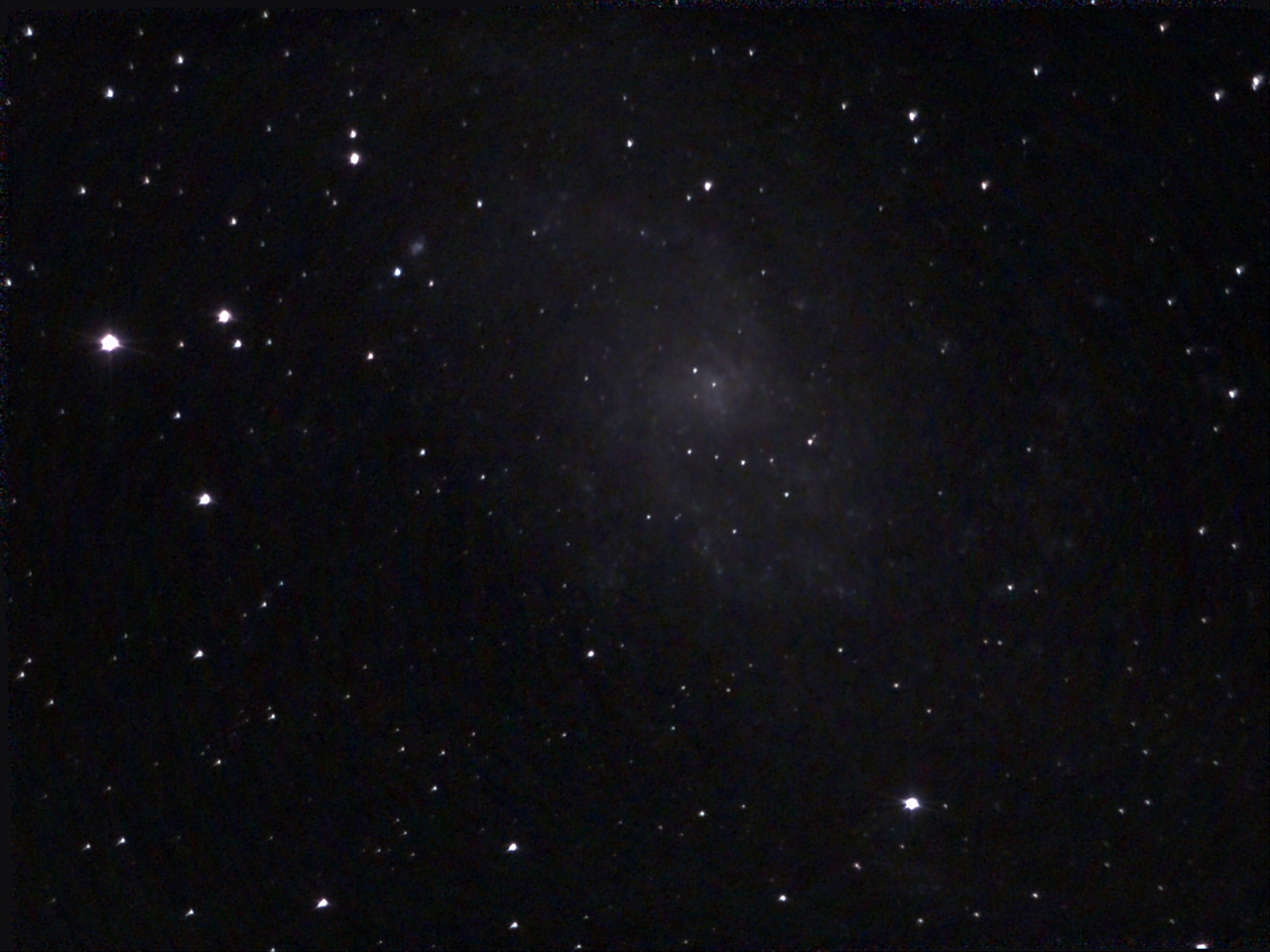 |
||
M 33 - eVscope 2, Dec 10, 2021, unprocessed (original size) |
M 33 - eVscope 2, Dec 10, 2021, unprocessed (original size) |
M 33 - eVscope 2, Dec 21, 2021, unprocessed (original size) |
||
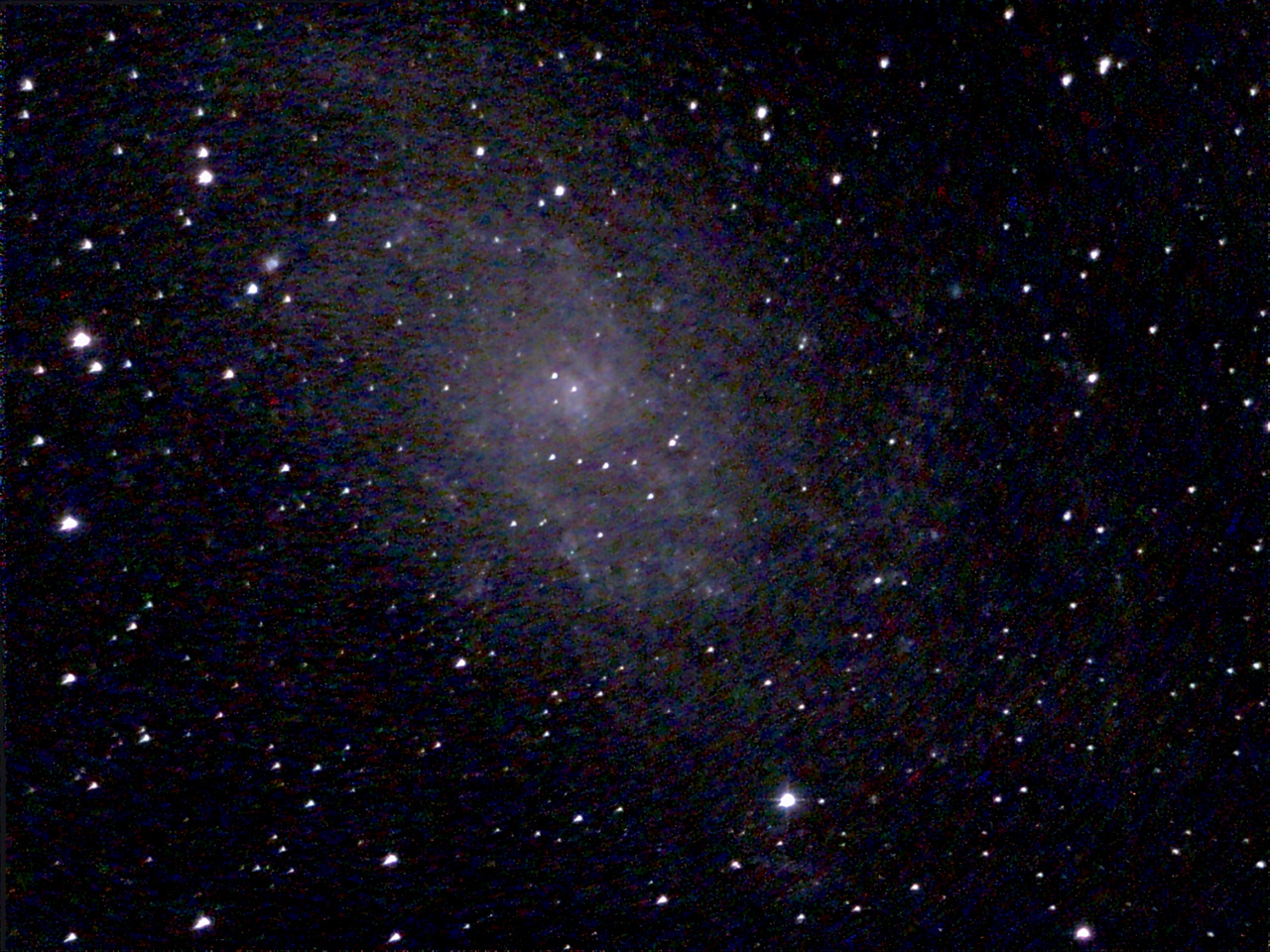 |
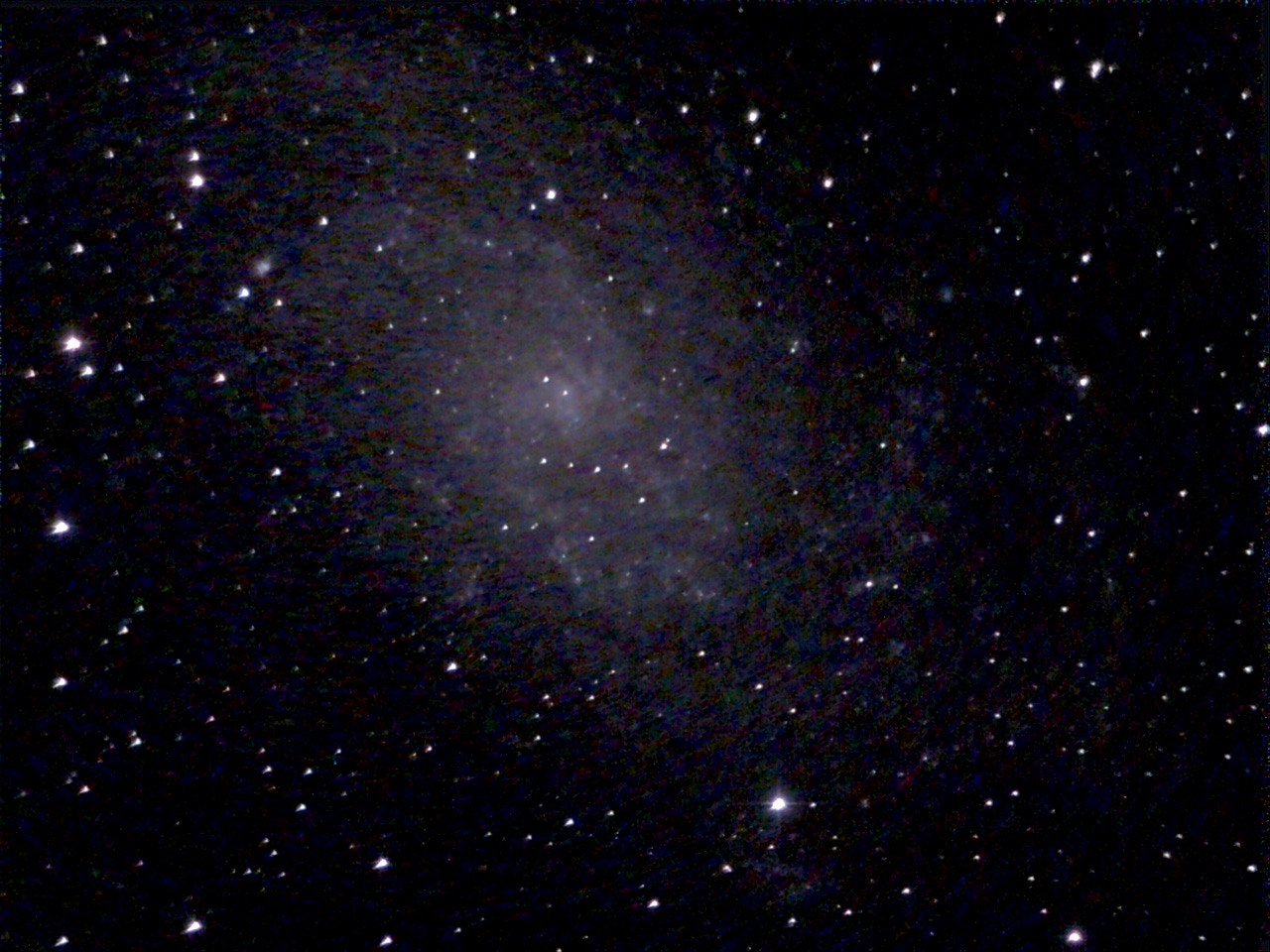 |
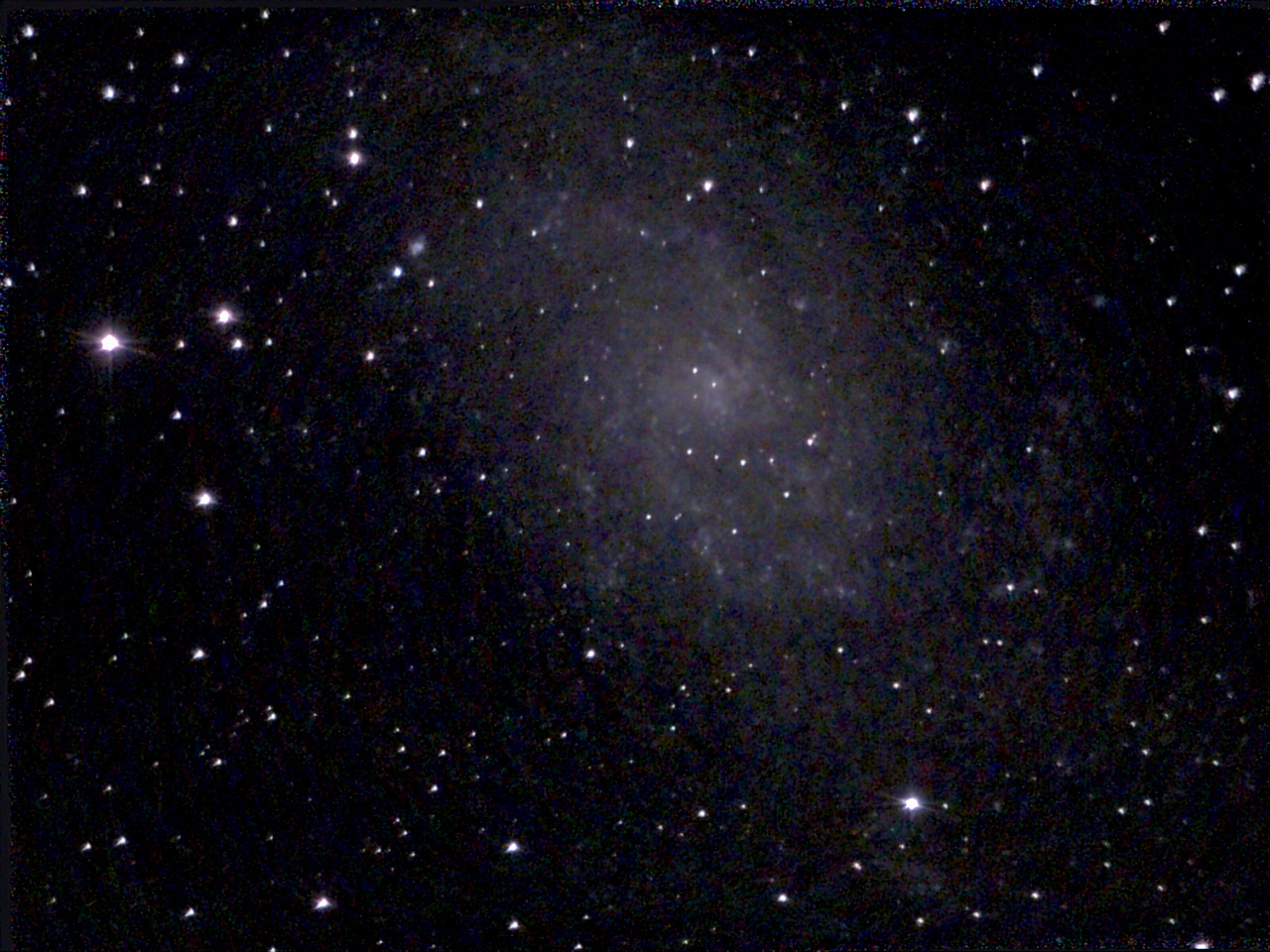 |
||
M 33 - eVscope 2, Dec 10, 2021, processed (original size) |
M 33 - eVscope 2, Dec 10, 2021, processed (original size) |
M 33 - eVscope 2, Dec 21, 2021, processed (original size) |
||
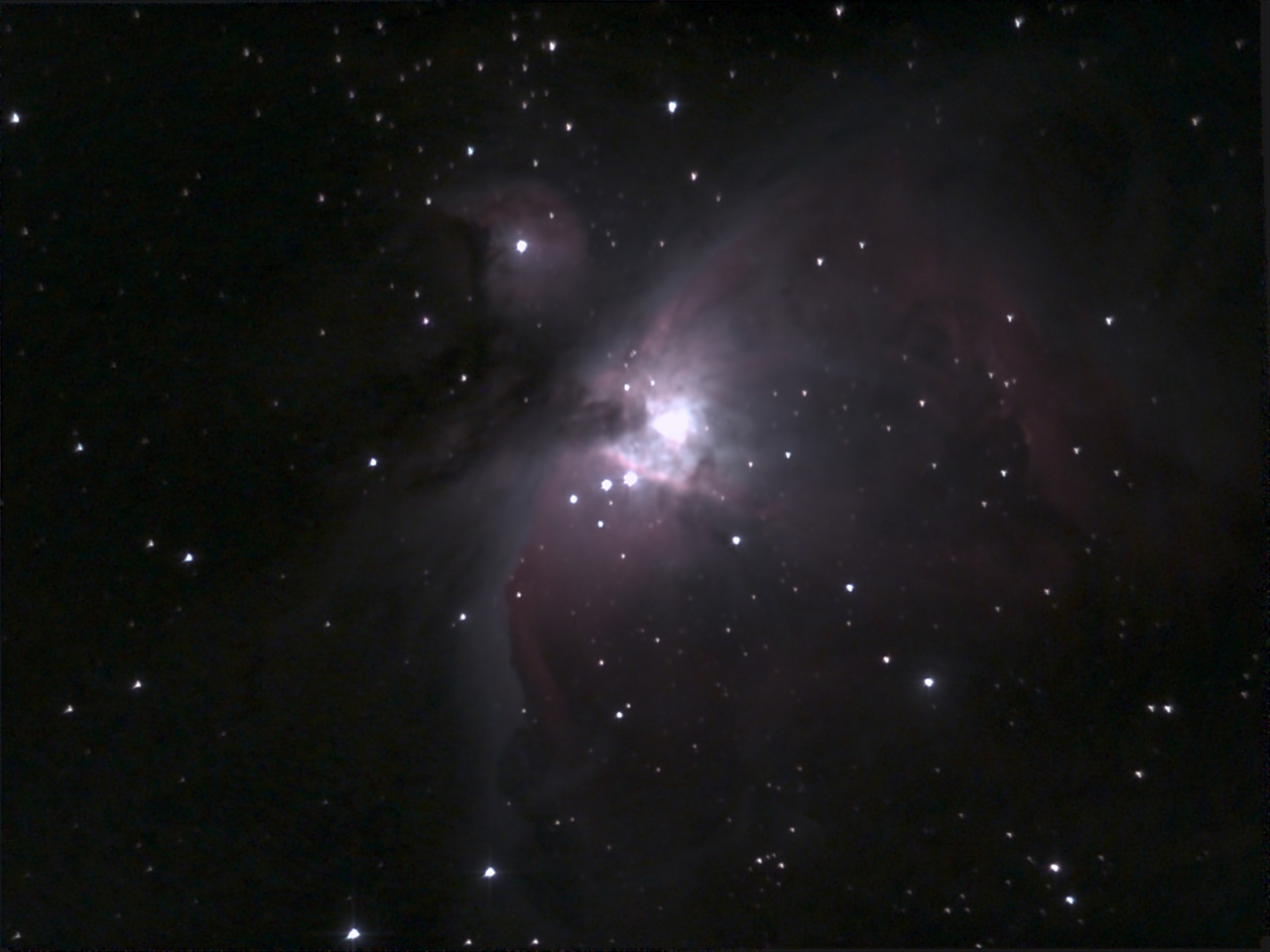 |
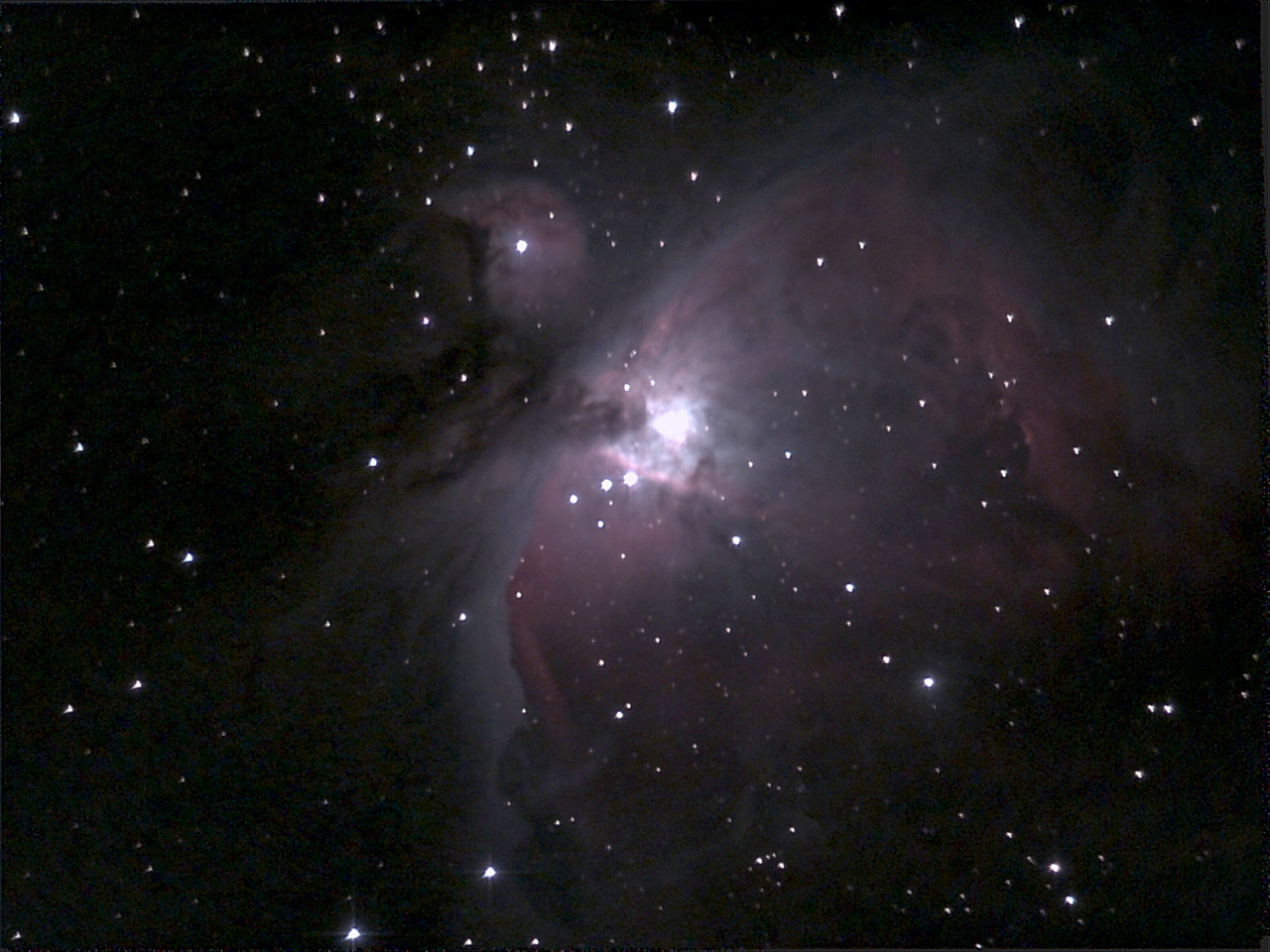 |
|||
M 42 - eVscope 2, 21.12.2021, unprocessed (original size) |
M 42 - eVscope 2, 21.12.2021, processed (original size) |
|||
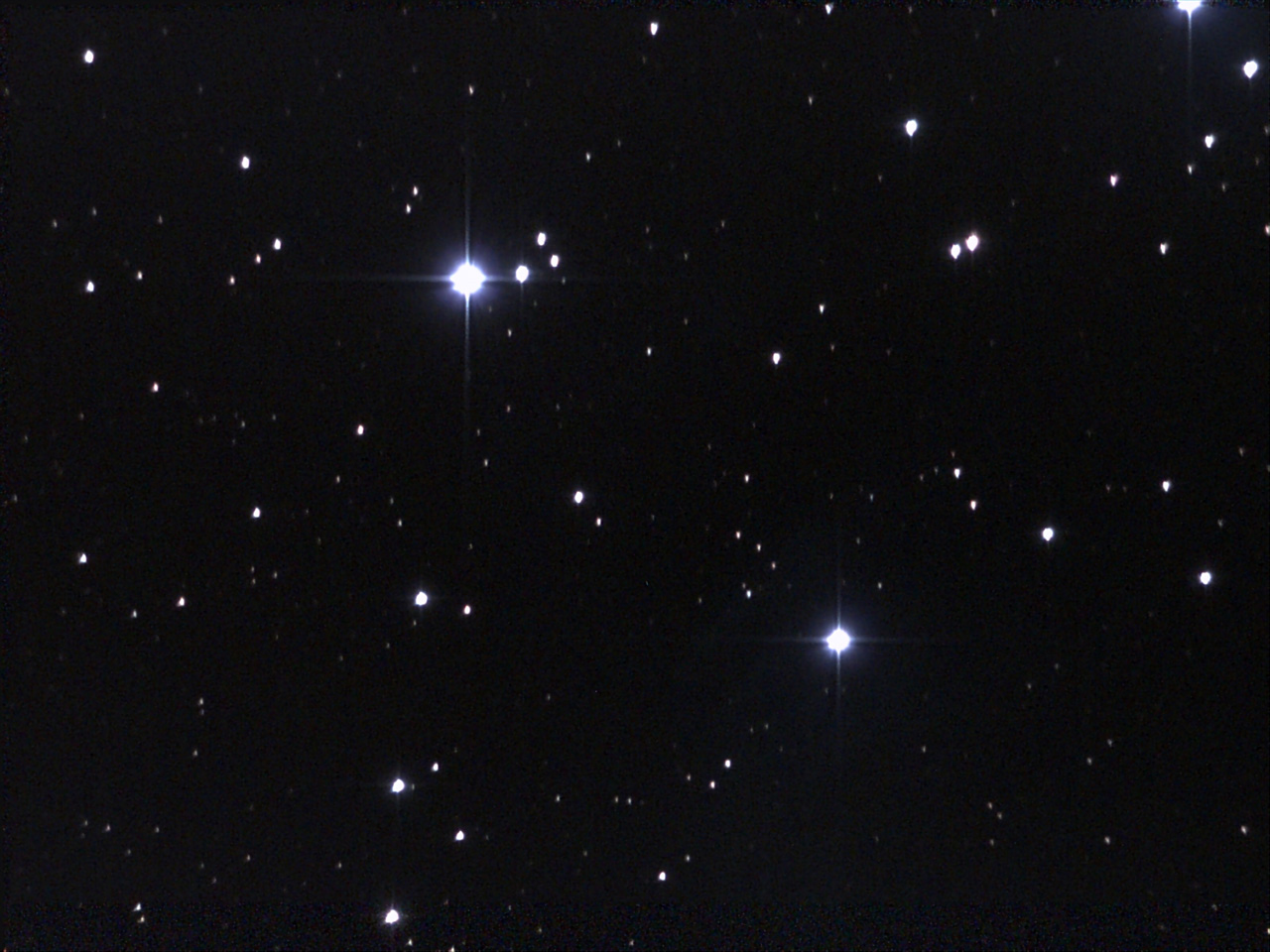 |
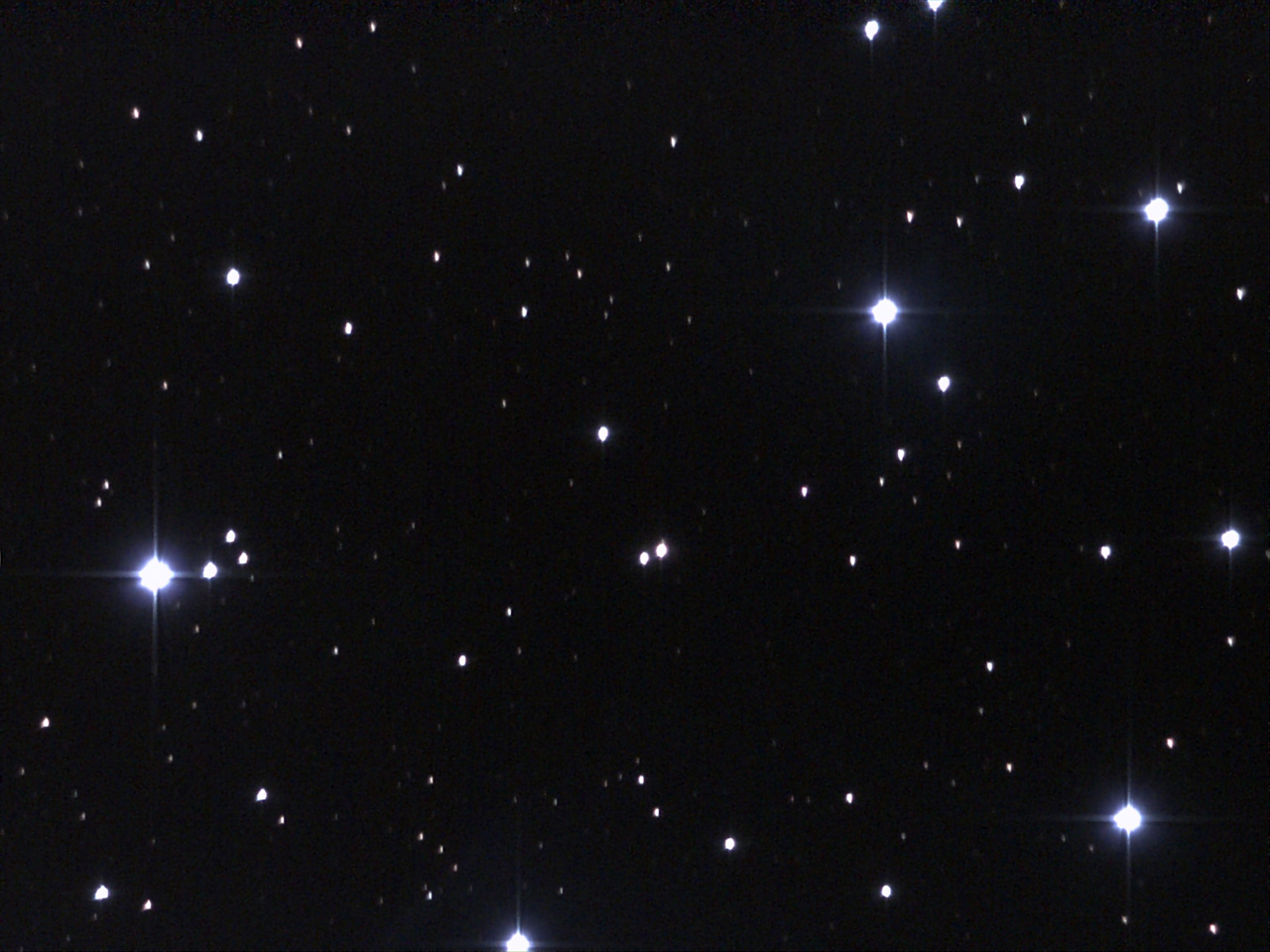 |
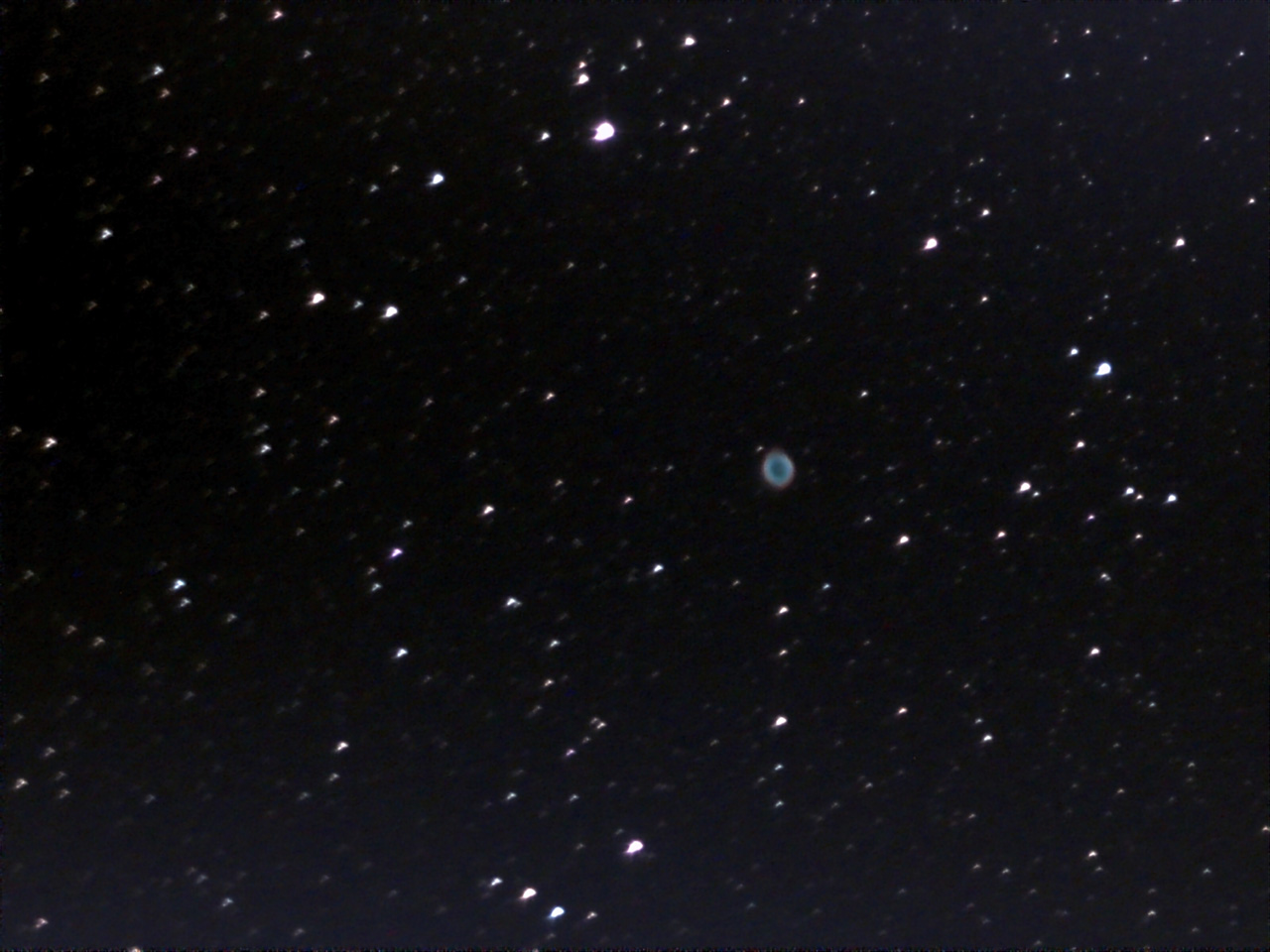 |
||
M 45 - eVscope 2, Dec 21, 2021, unprocessed (original size) |
M 45 - eVscope 2, Dec 21, 2021, unprocessed (original size) |
M 57 - eVscope 2, Dec 10, 2021, unprocessed (original size) |
||
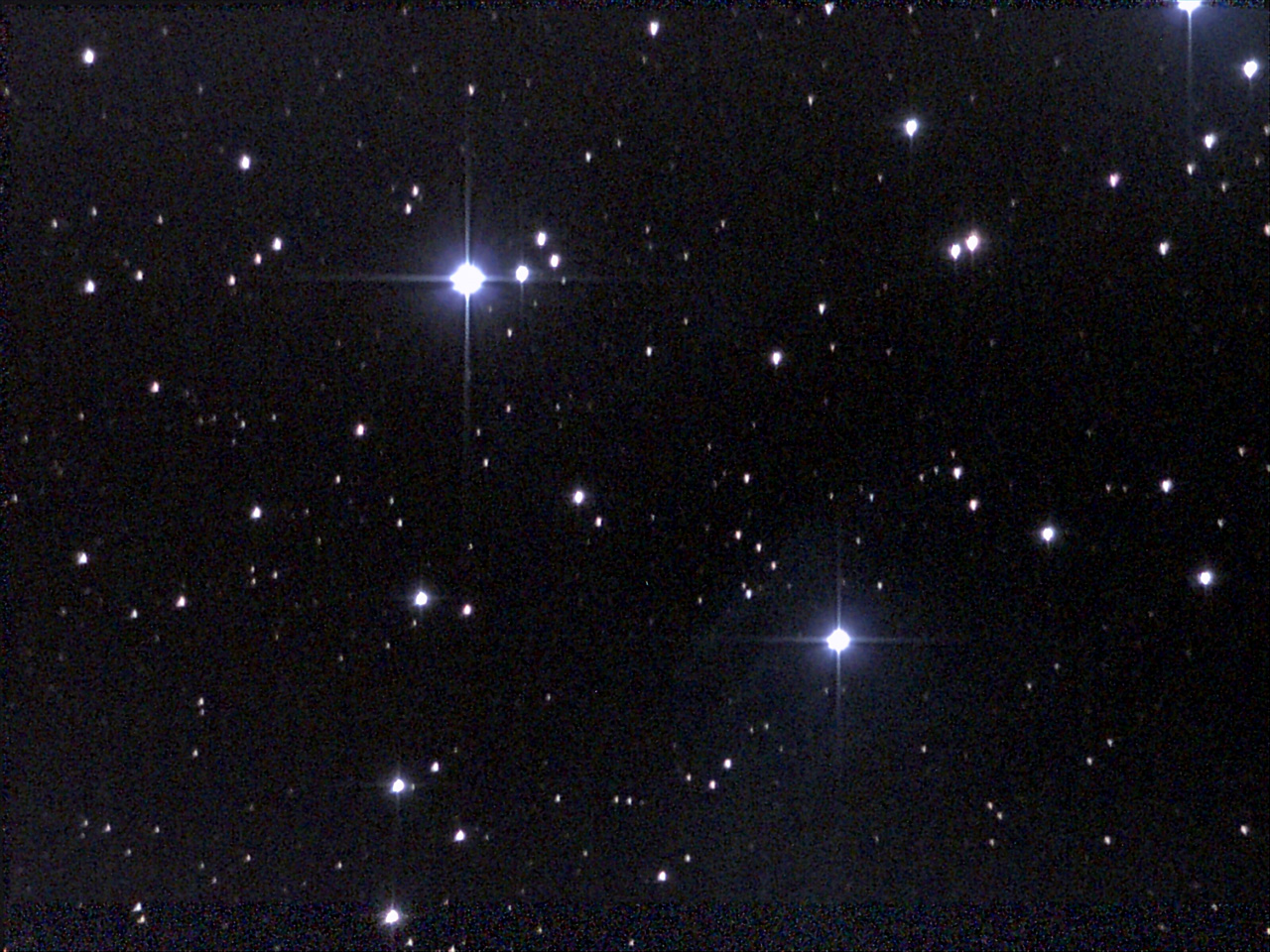 |
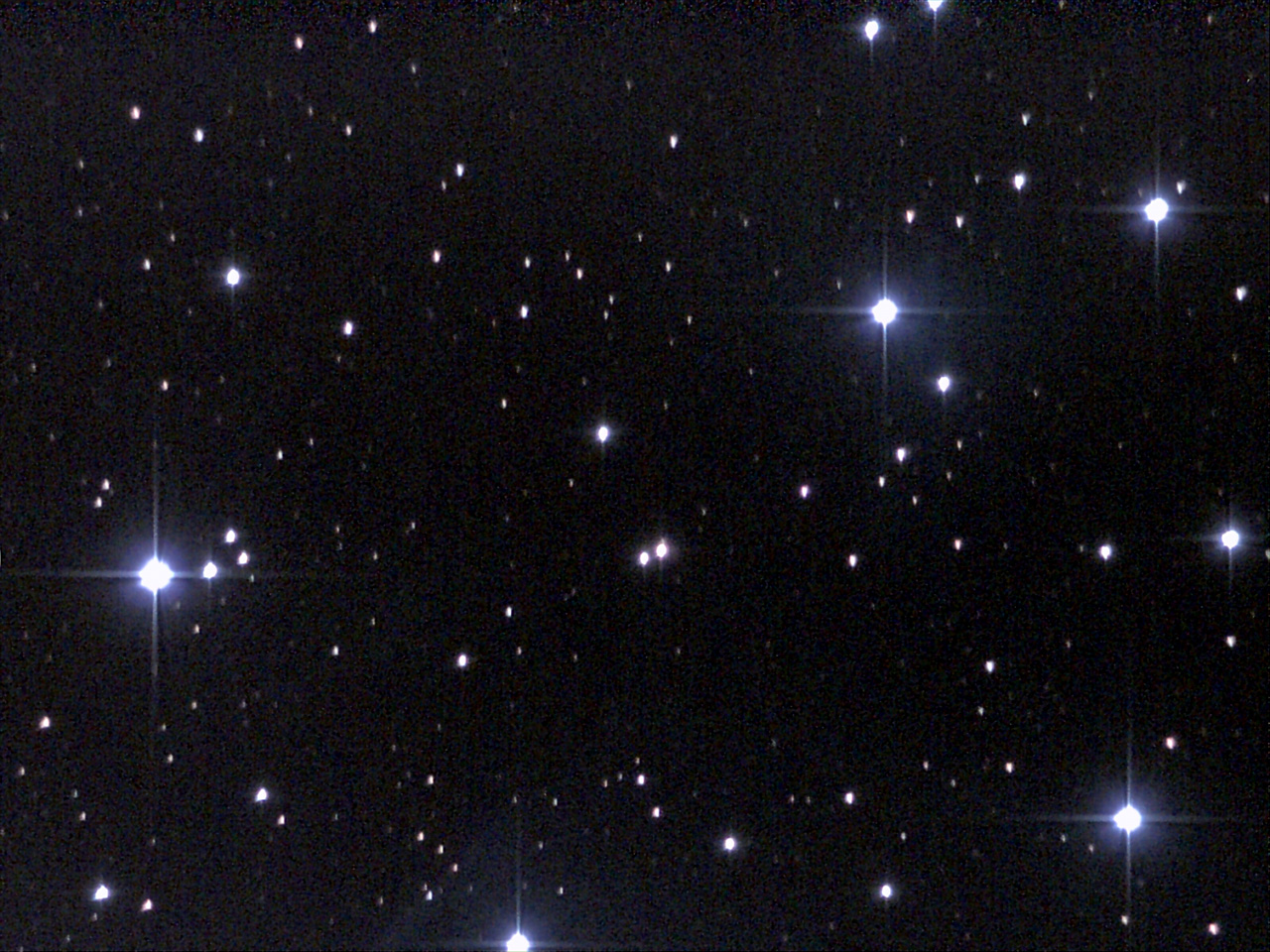 |
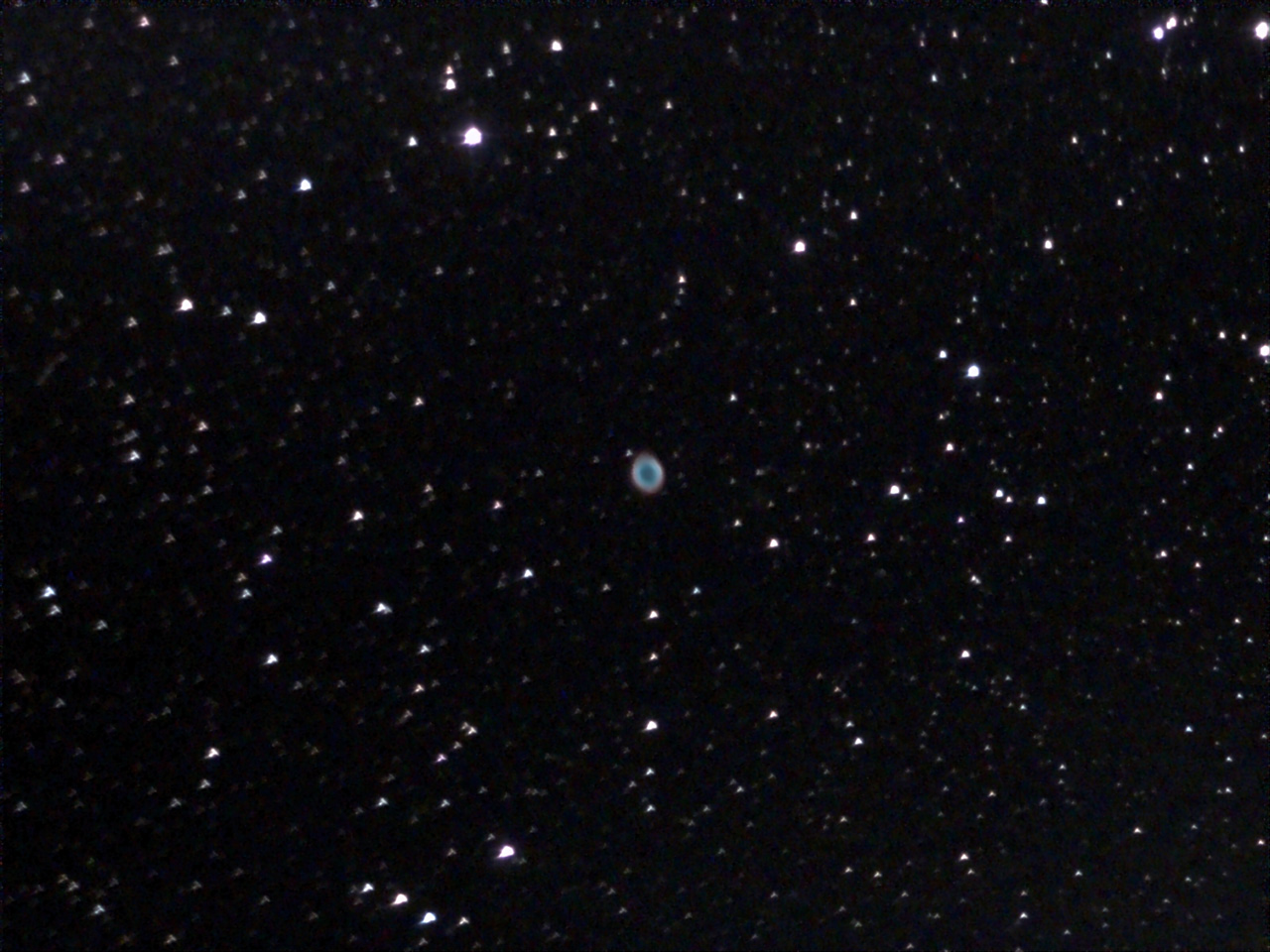 |
||
M 45 - eVscope 2, Dec 21, 2021, photo on top processed (original size) |
M 45 - eVscope 2, Dec 21, 2021, photo on top processed (original size) |
M 57 - eVscope 2, Dec 10, 2021, unprocessed (original size) |
||
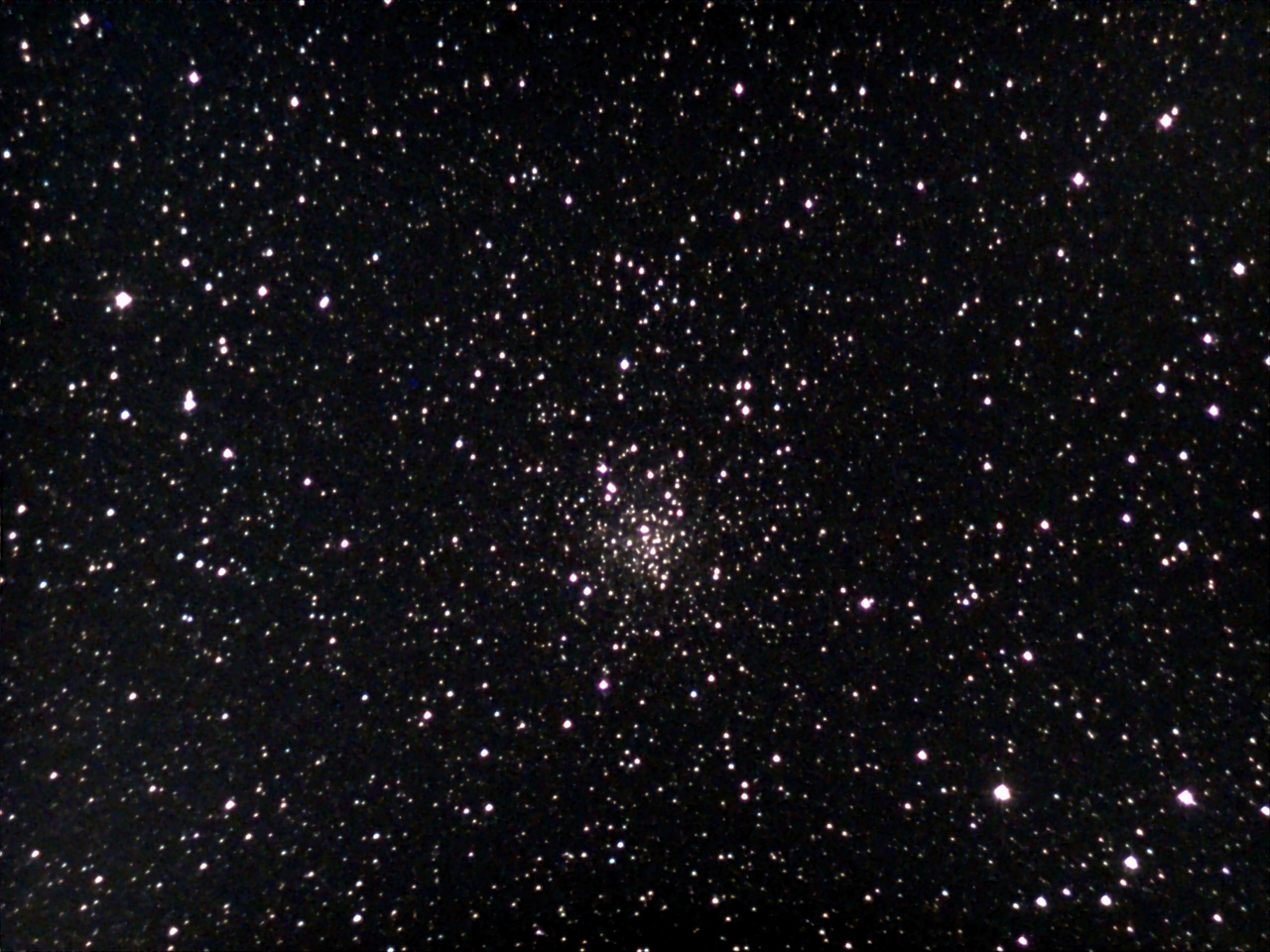 |
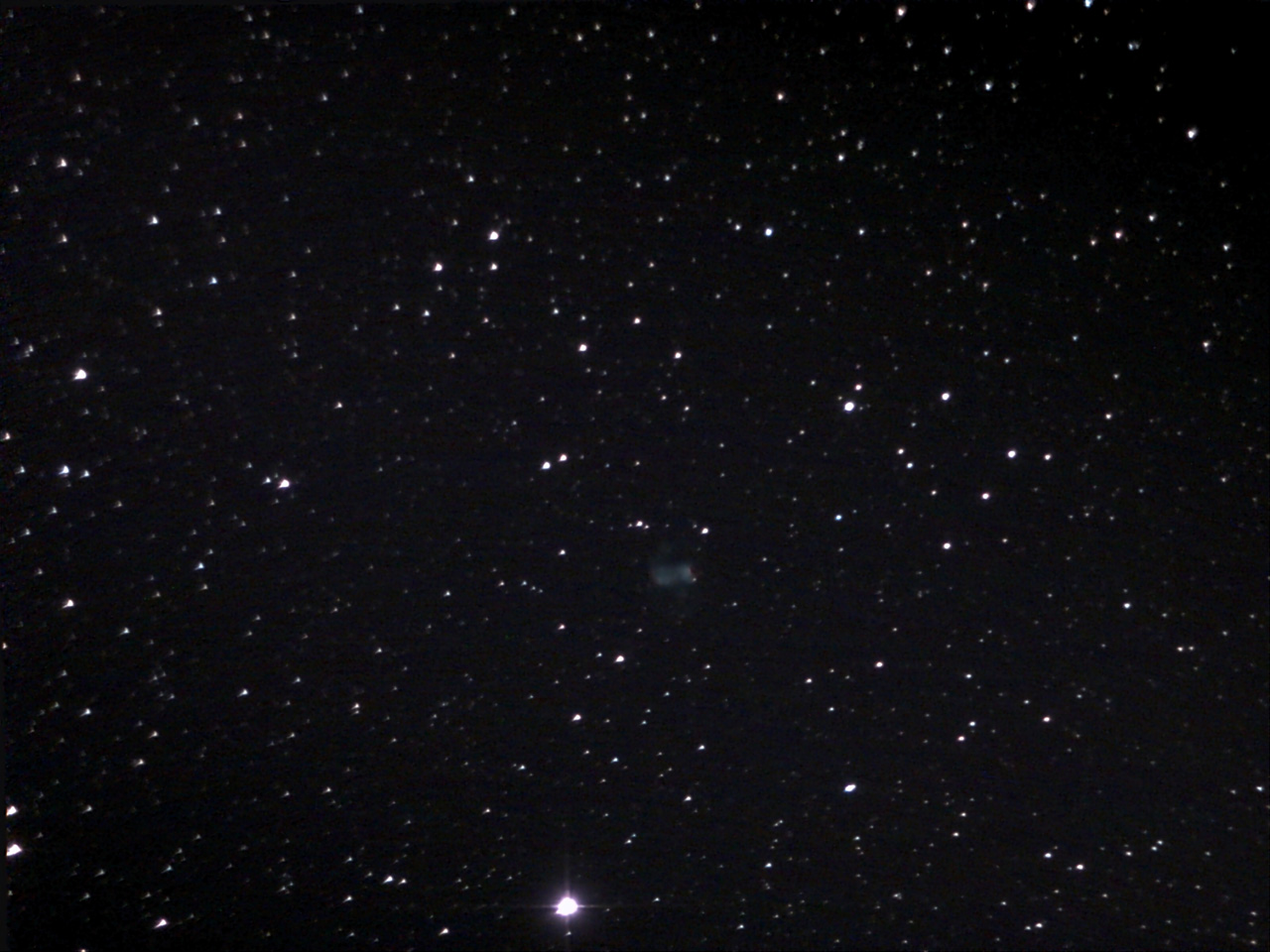 |
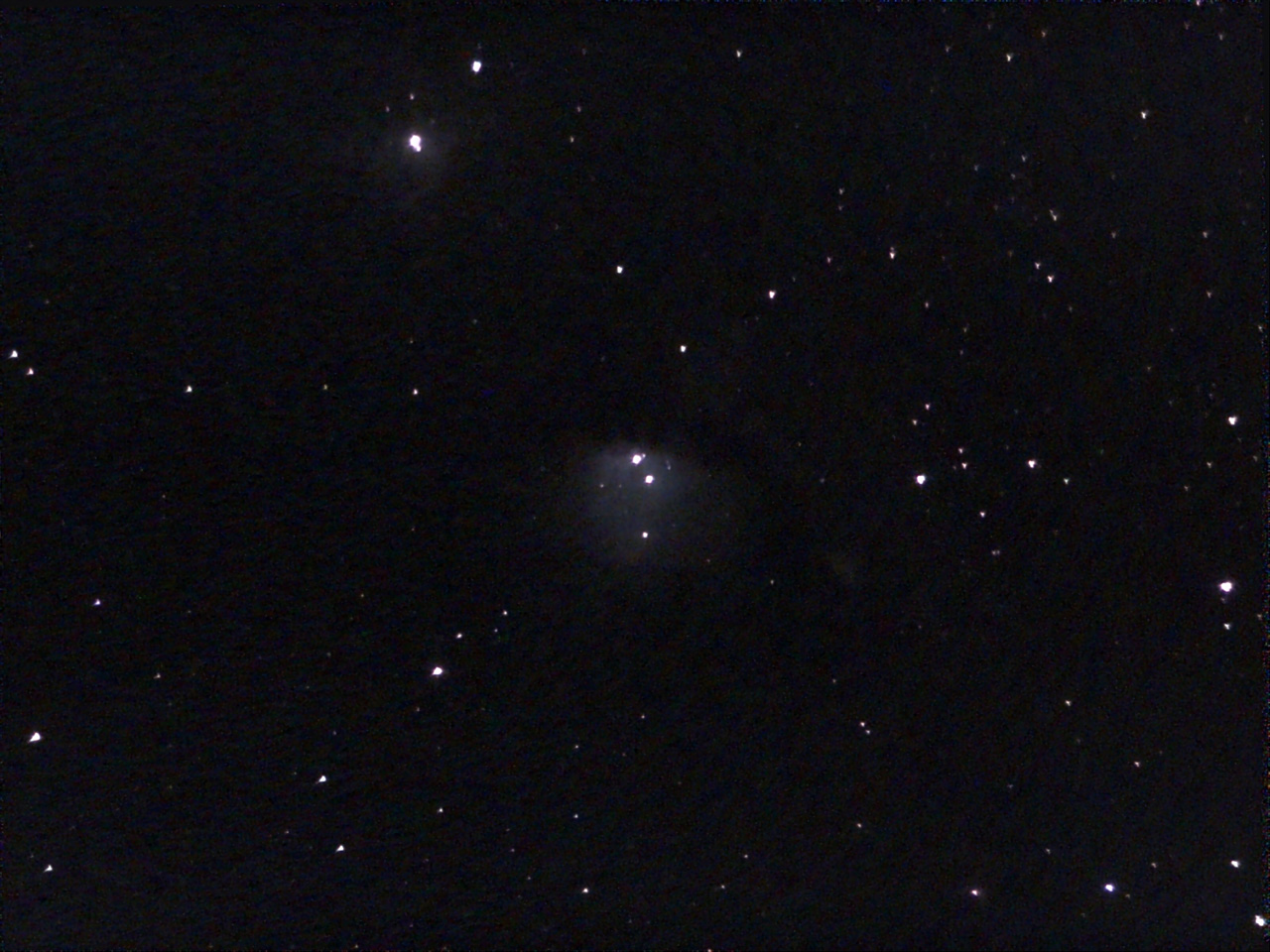 |
||
M 71 - eVscope, Dec 21, 2021, unprocessed (original size) |
M 76 - eVscope 2, Dec 10, 2021, unprocessed (original size) |
M 78 - eVscope 2, Dec 21, 2021, unprocessed (original size) |
||
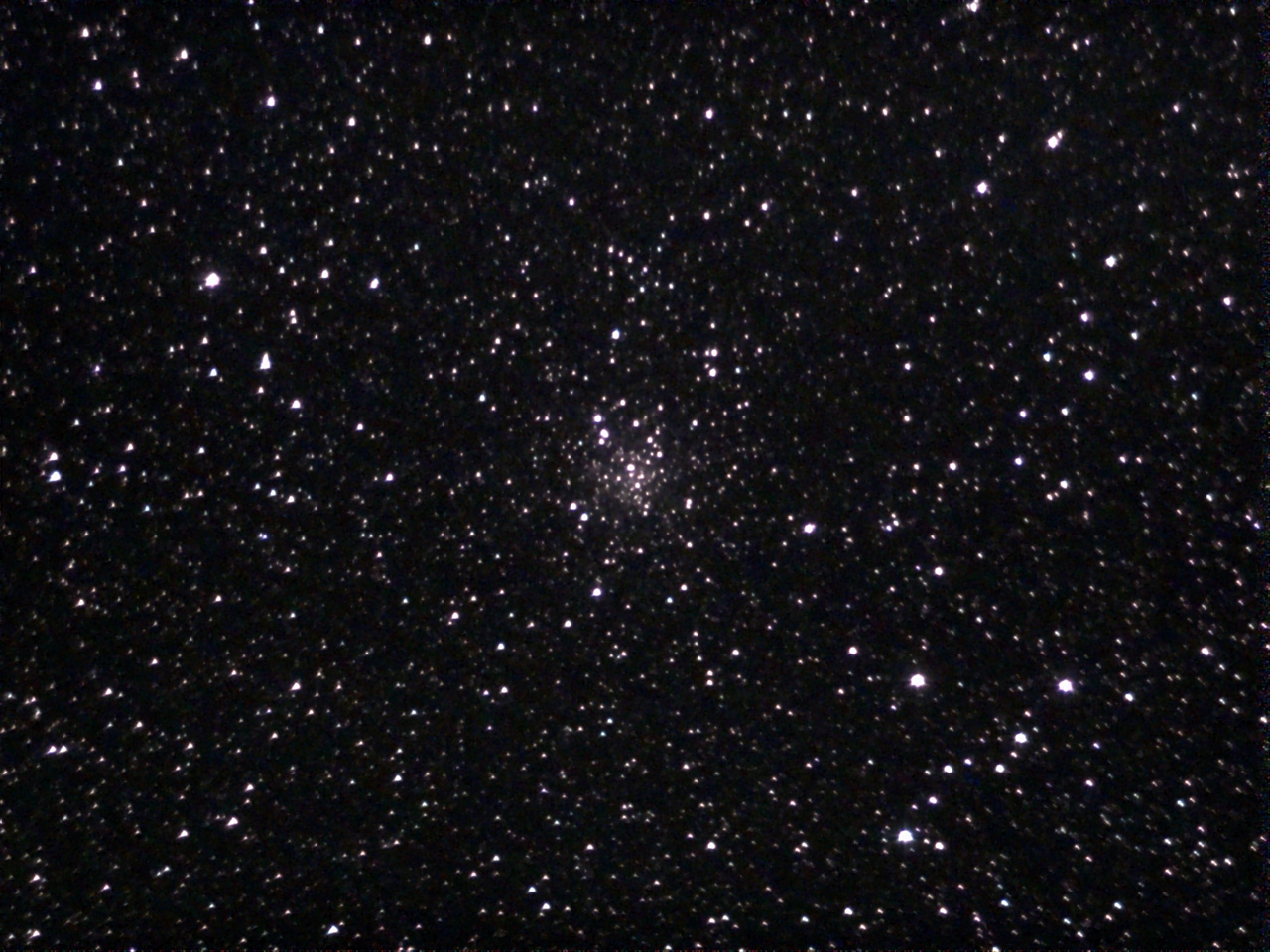 |
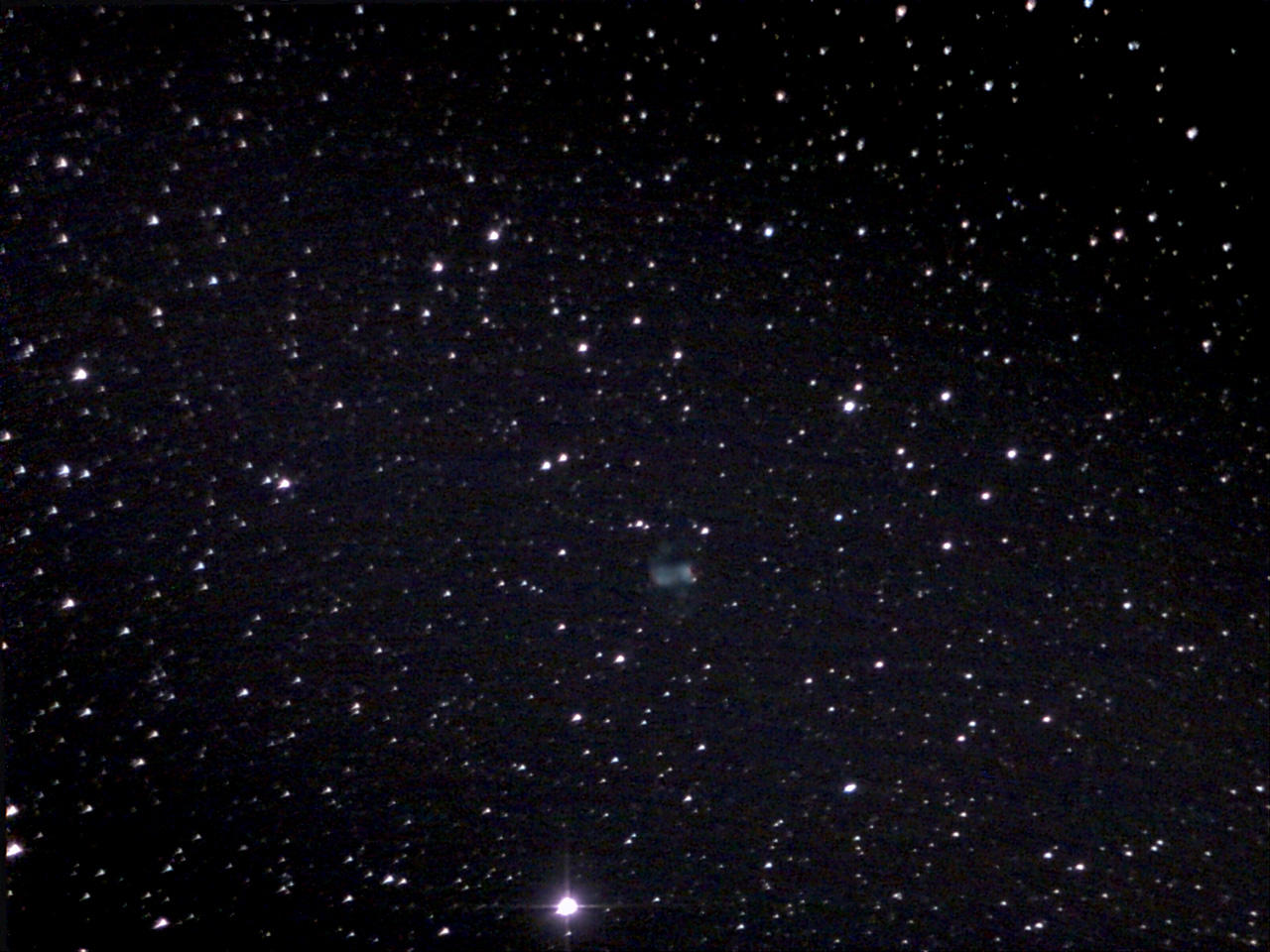 |
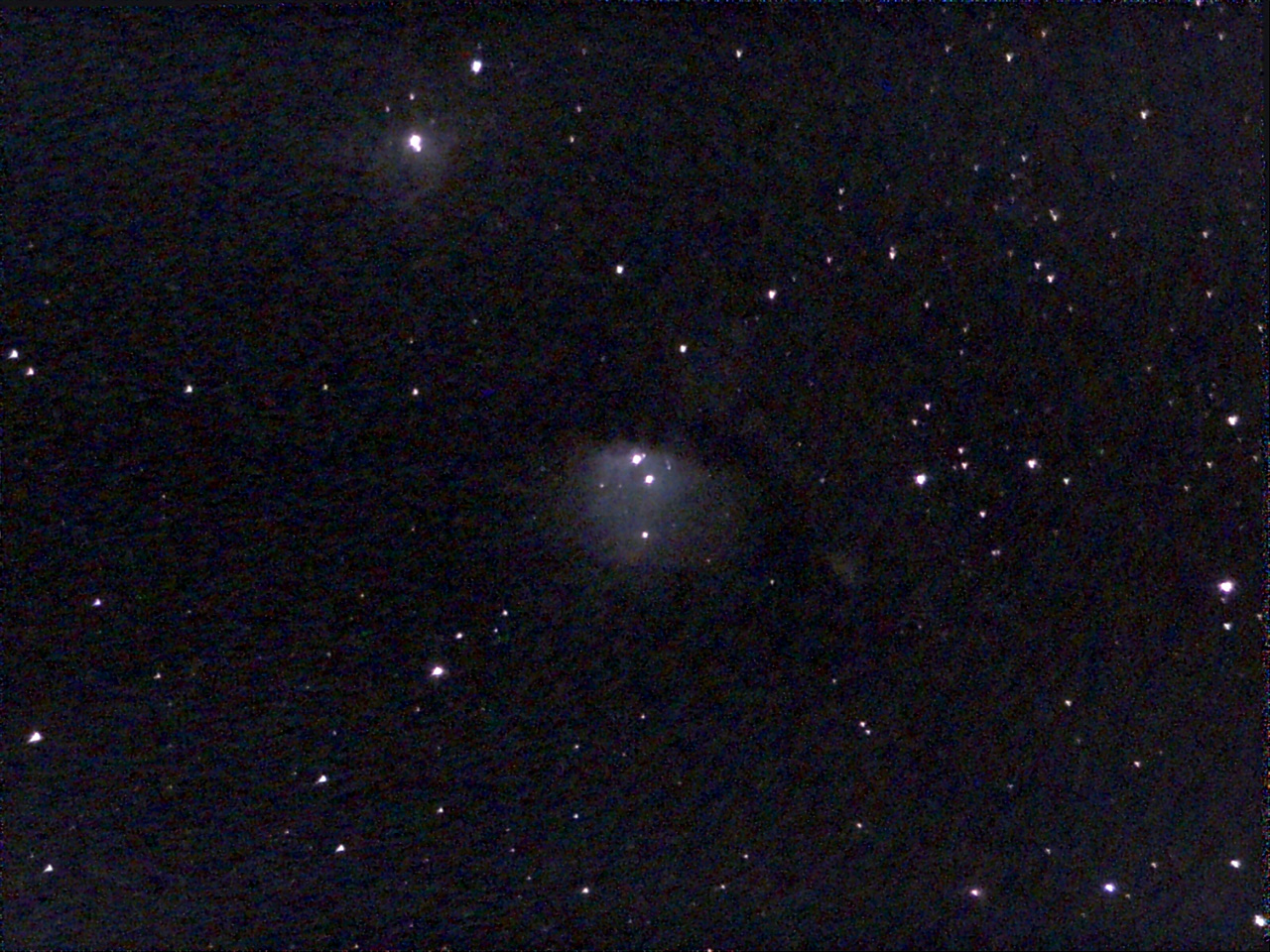 |
||
M 71 - eVscope 2, Dec 21, 2021, unprocessed (original size) |
M 76 - eVscope 2, Dec 10, 2021, photo left processed (original size) |
M 78 - eVscope 2, Dec 21, 2021, photo left processed (original size) |
||
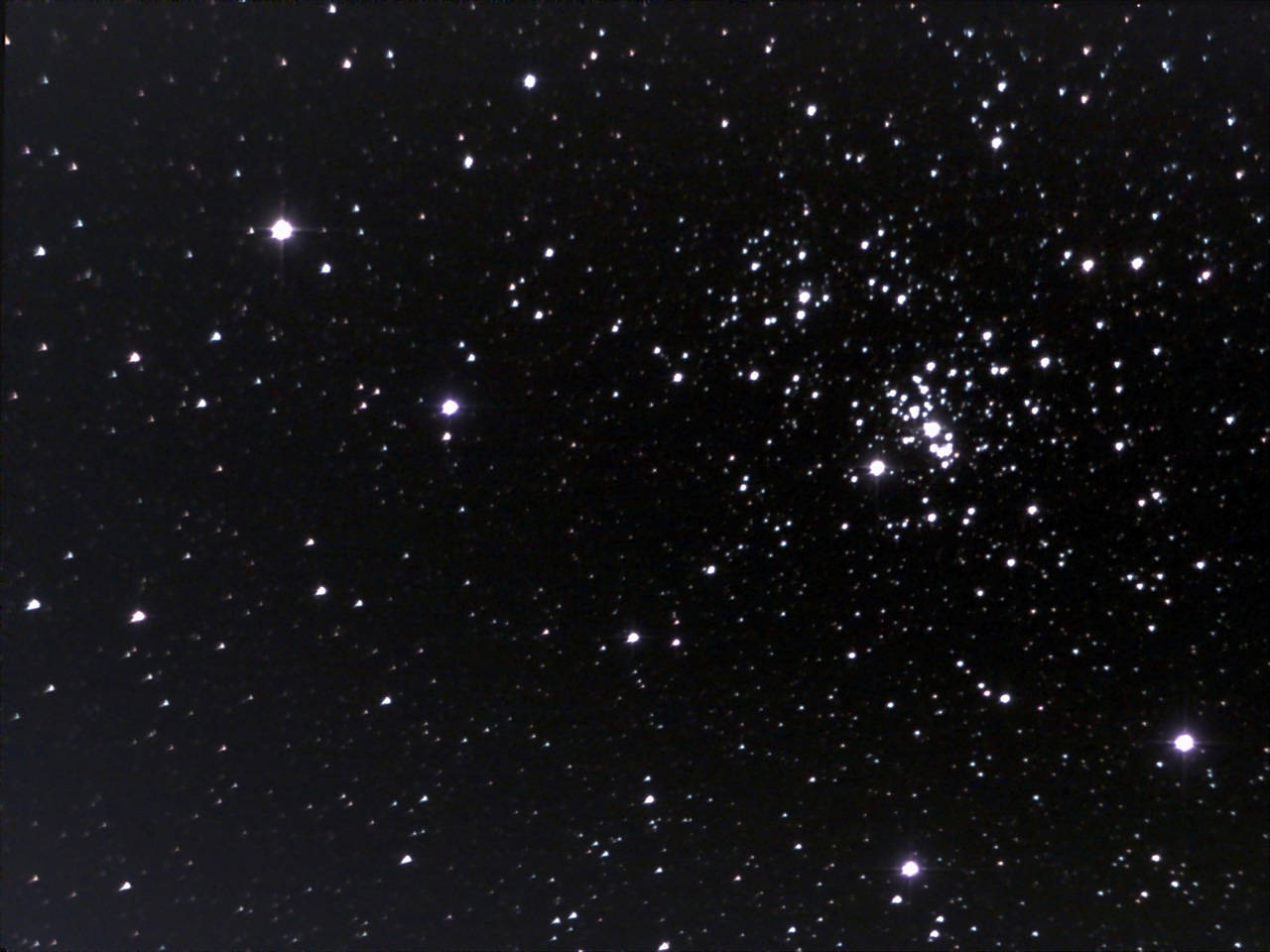 |
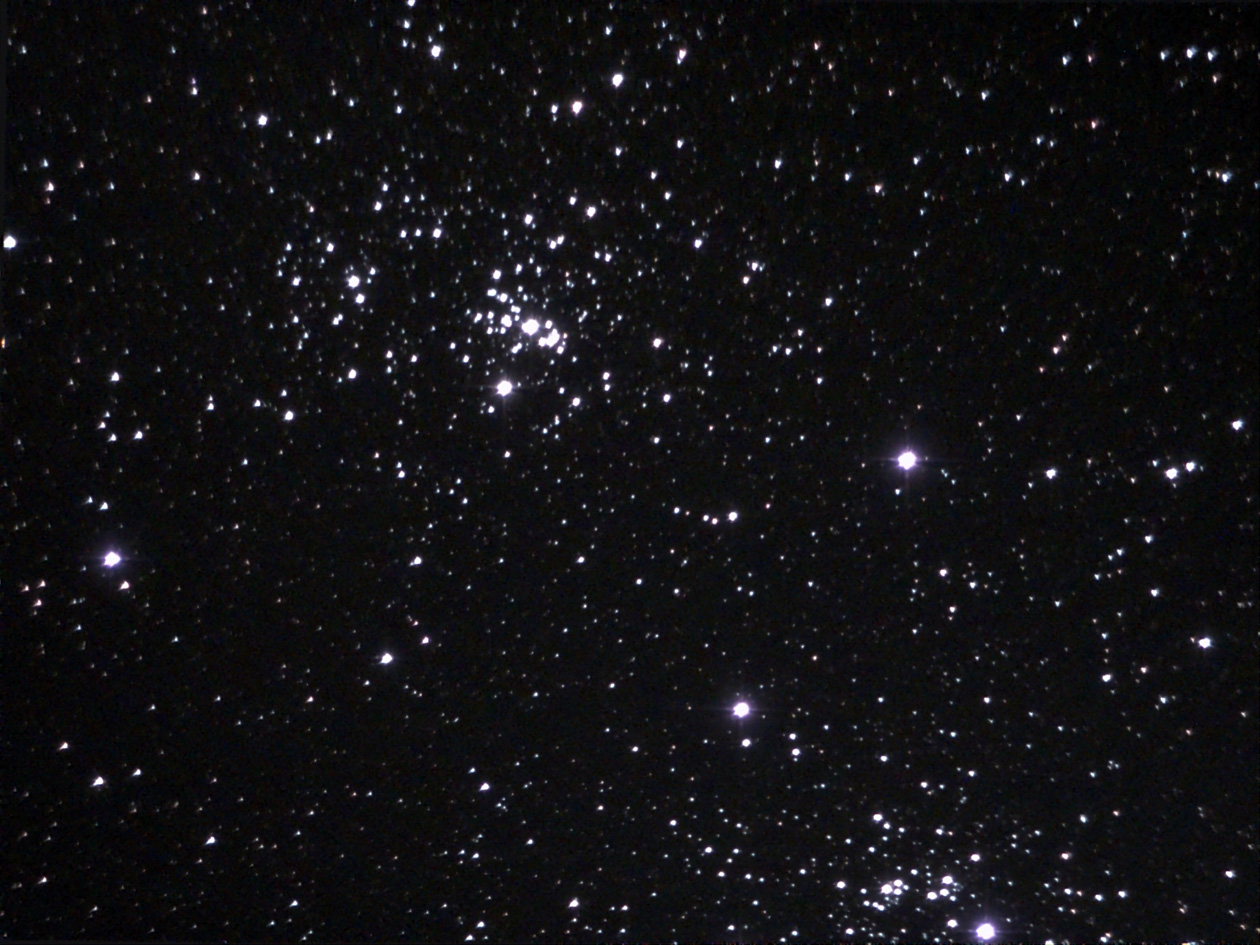 |
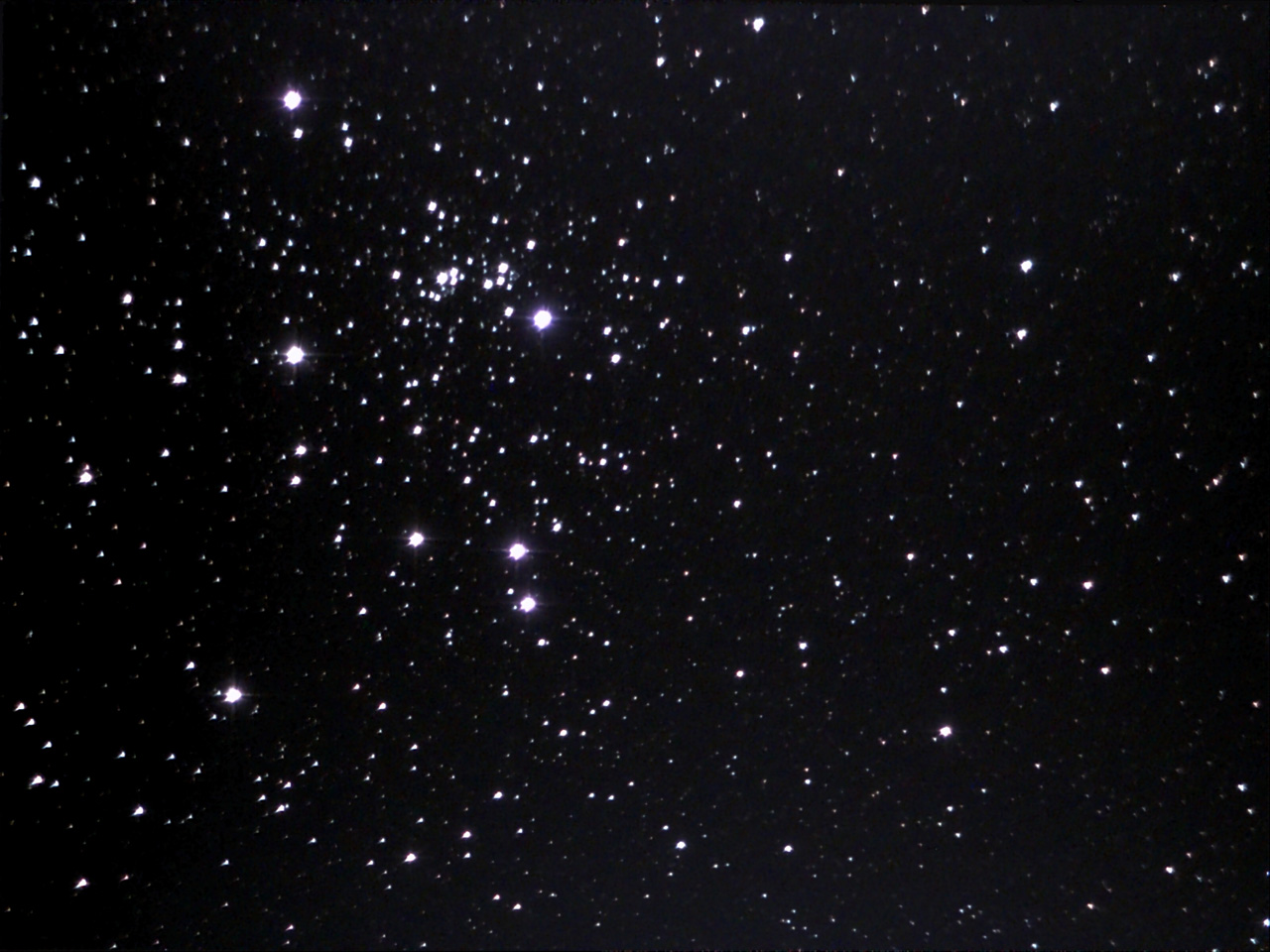 |
||
NGC 869 - eVscope 2, Dec 10, 2021, unprocessed (original size) |
NGC 869 - eVscope 2, Dec 21, 2021, unprocessed (original size) |
NGC 884 - eVscope 2, Dec 21, 2021, unprocessed (original size) |
||
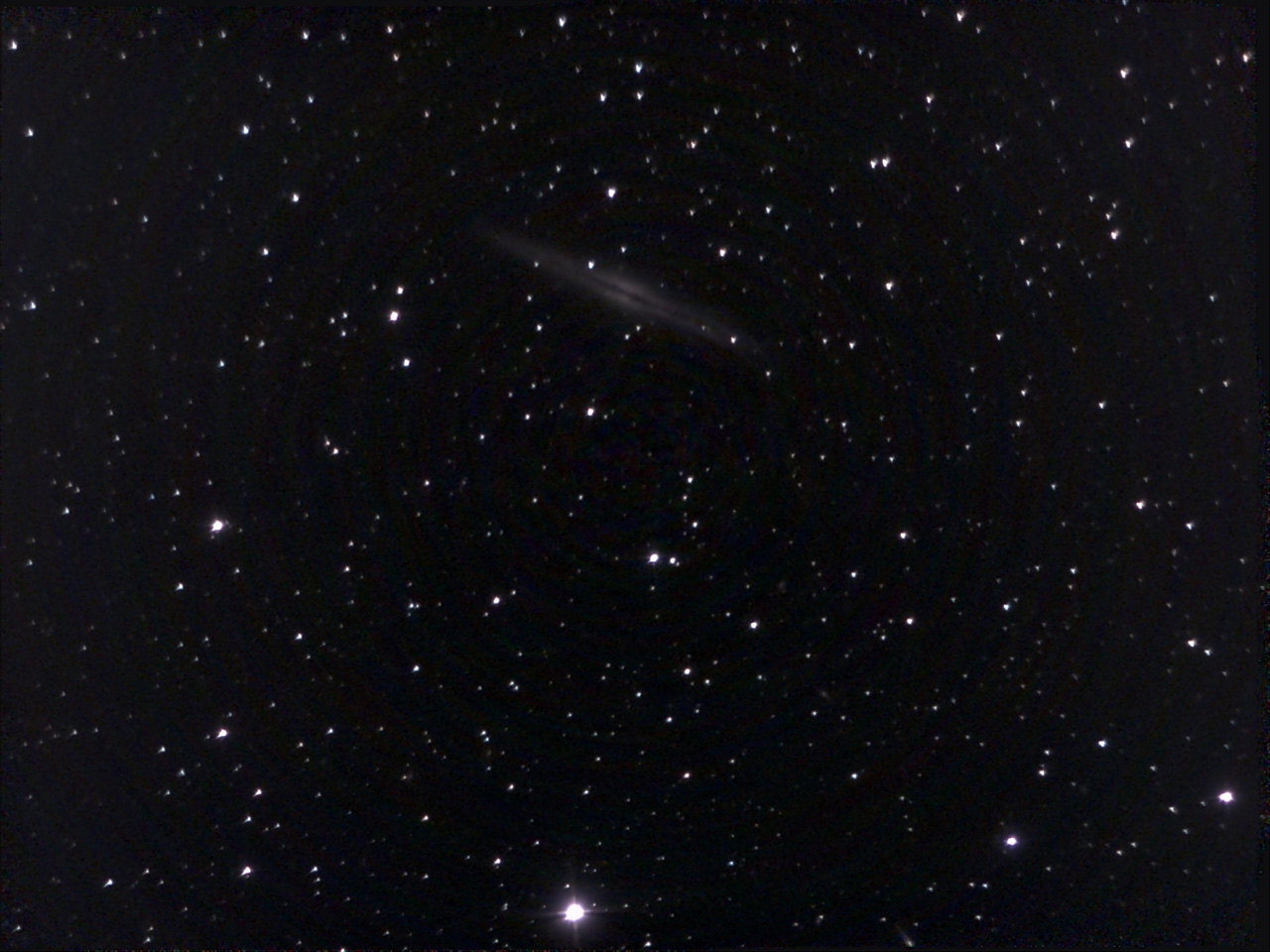 |
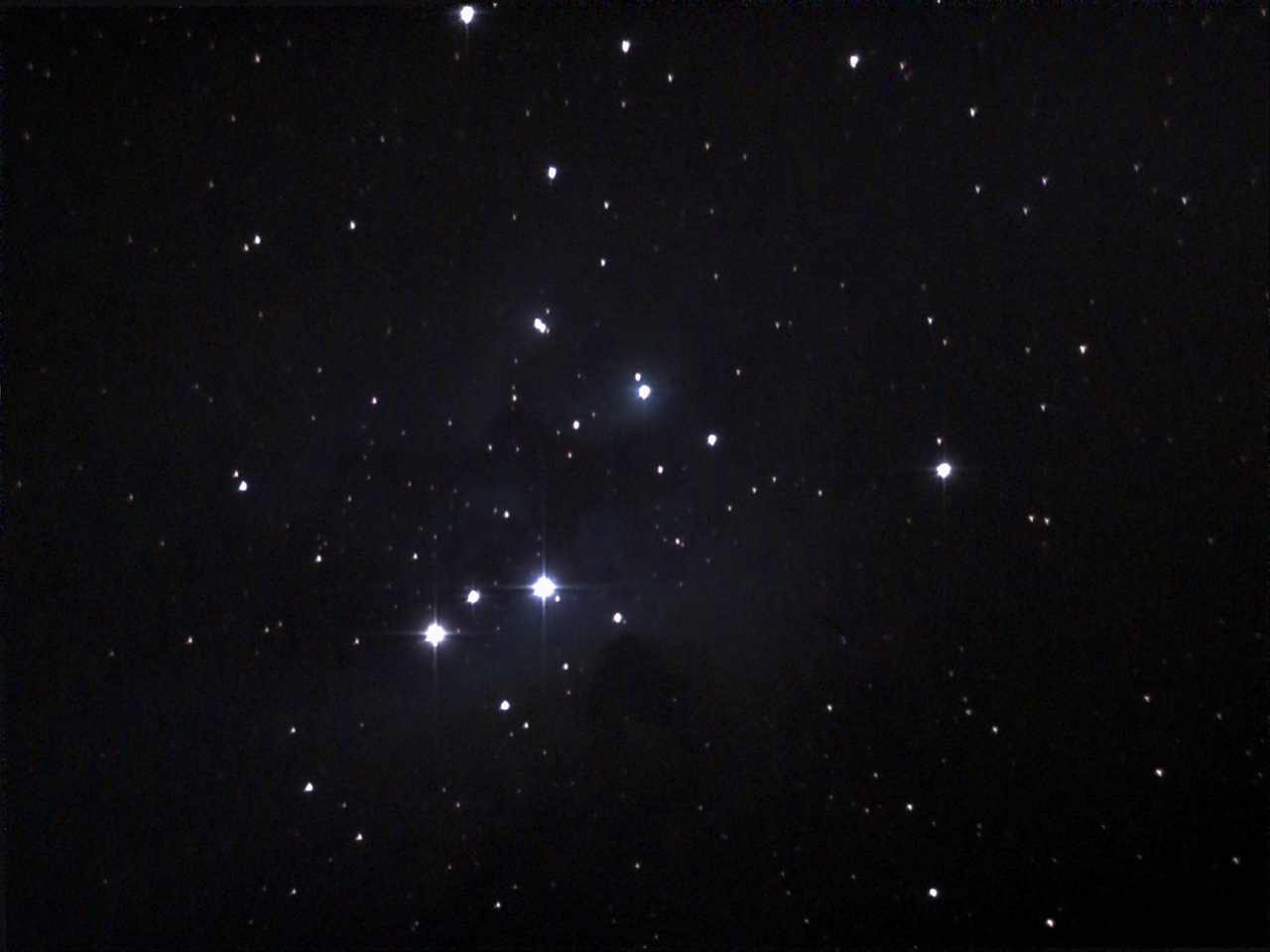 |
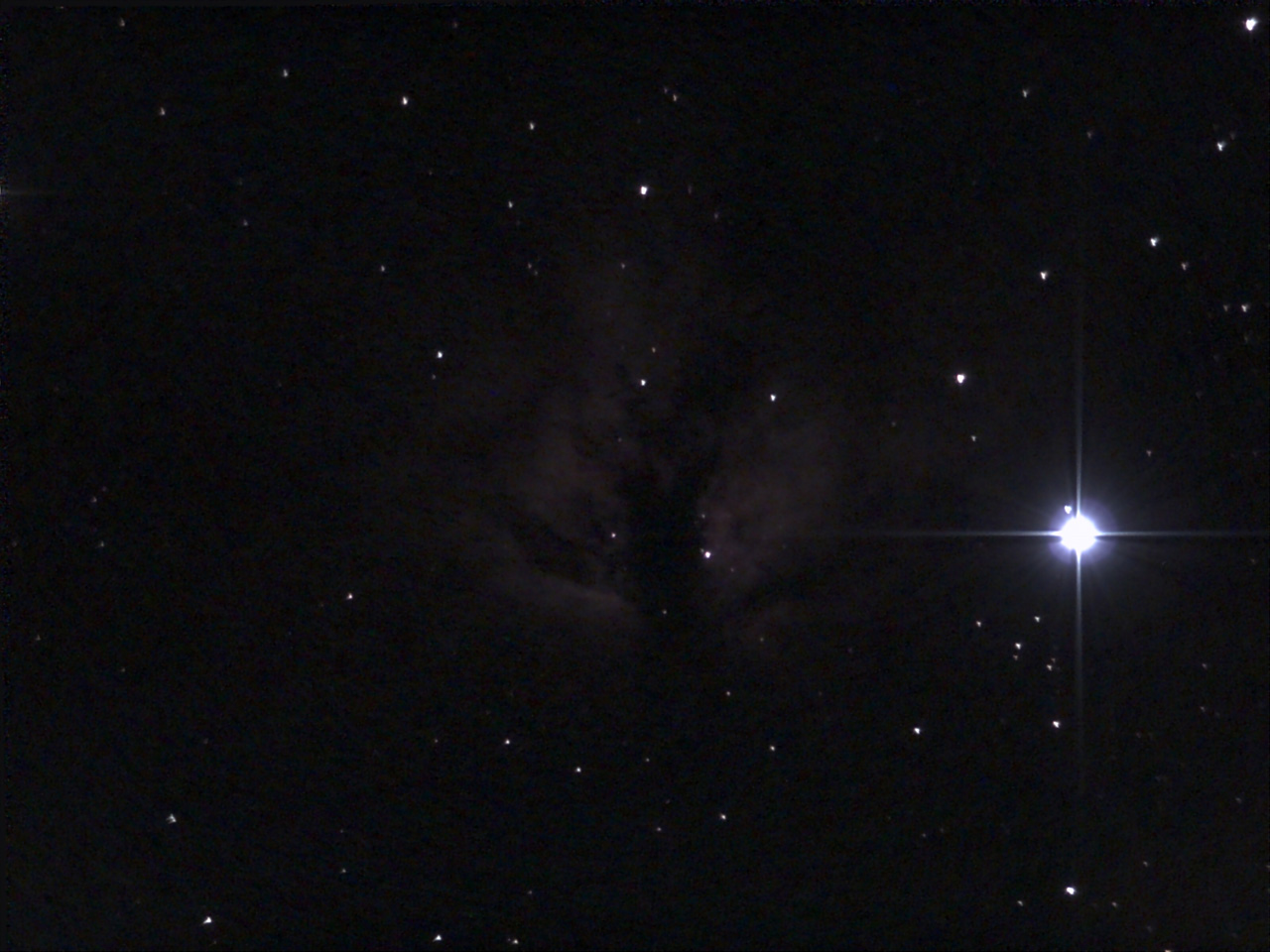 |
||
NGC 891 - eVscope 2, Dec 21, 2021, unprocessed (original size) |
NGC 1977 - eVscope 2, Dec 21, 2021, unprocessed (original size) |
NGC 2024 - eVscope 2, Dec 21, 2021, unprocessed (original size) |
||
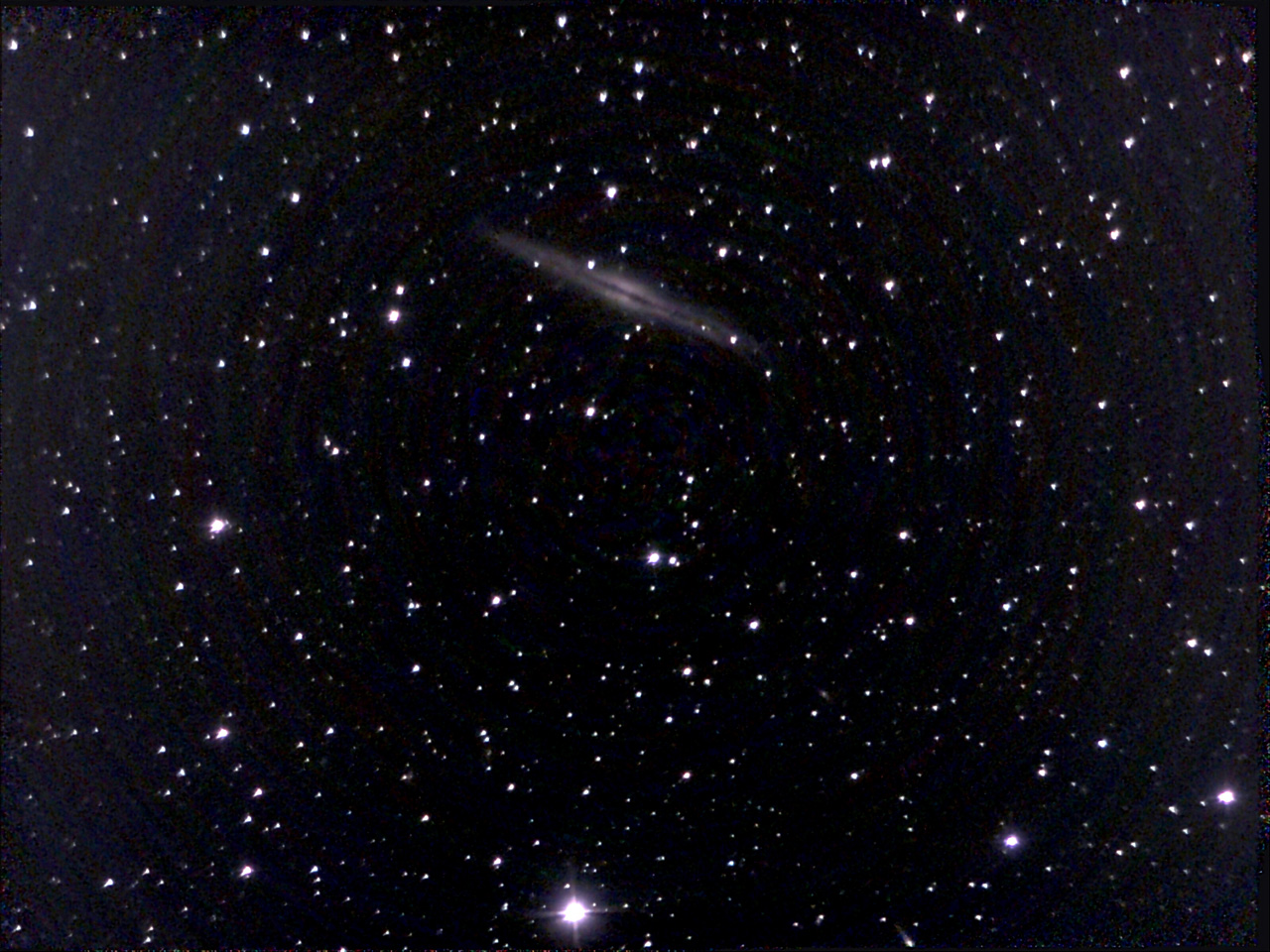 |
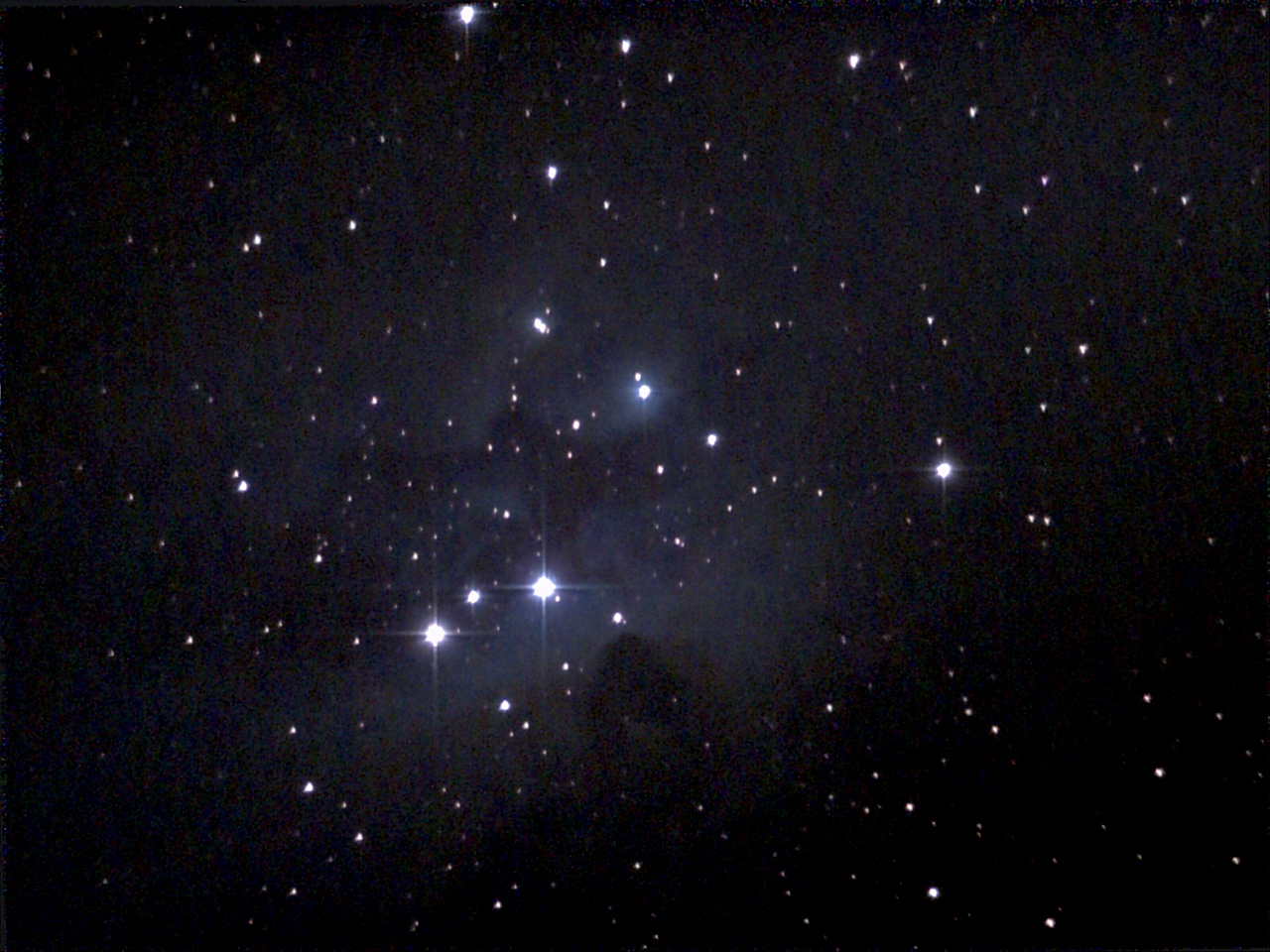 |
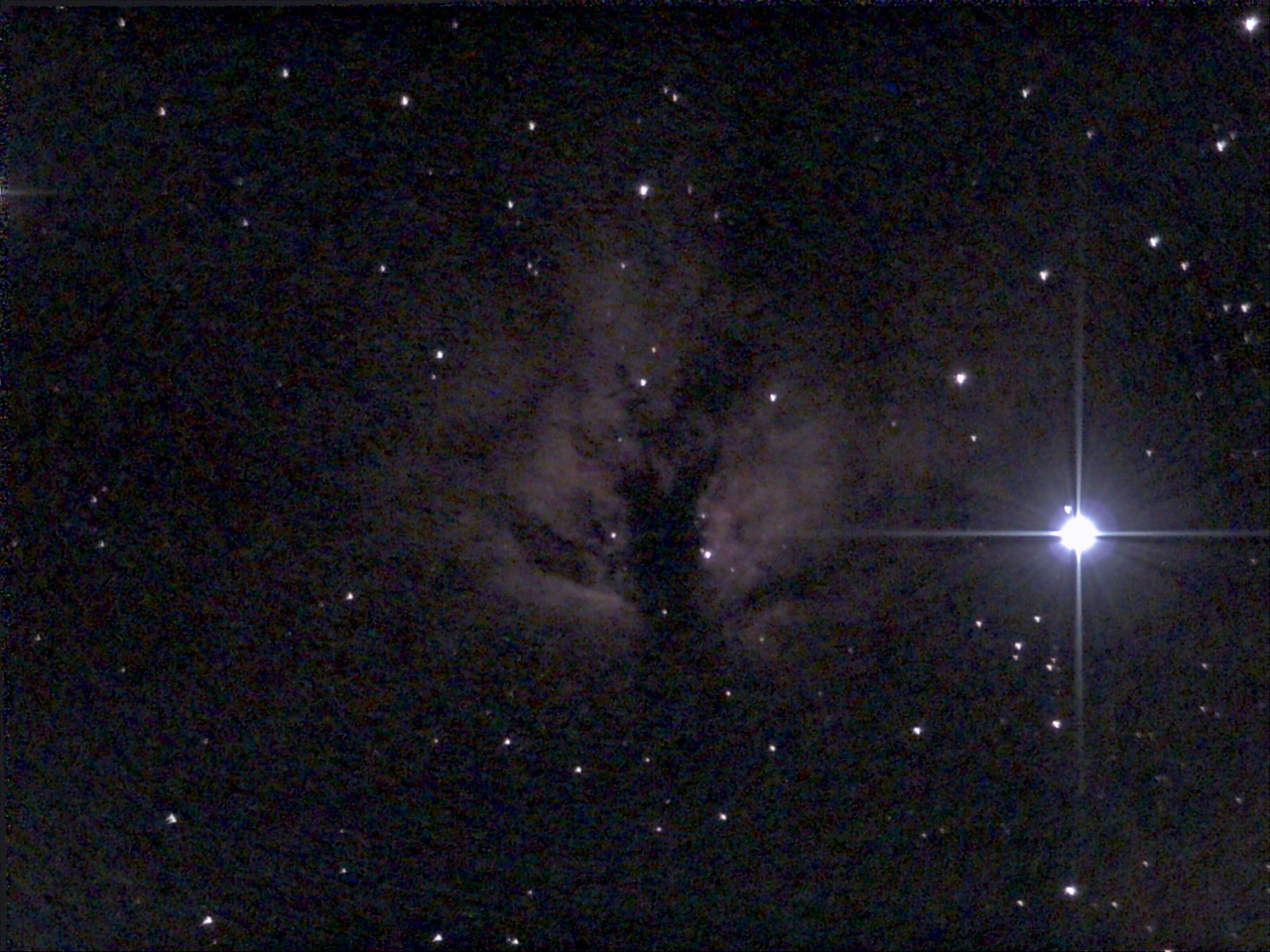 |
||
NGC 891 - eVscope 2, 21.12.2021, processed (original size) |
NGC 1977 - eVscope 2, Dec 21, 2021, processed (original size) |
NGC 2024 - eVscope 2, Dec 21, 2021, processed (original size) |
||
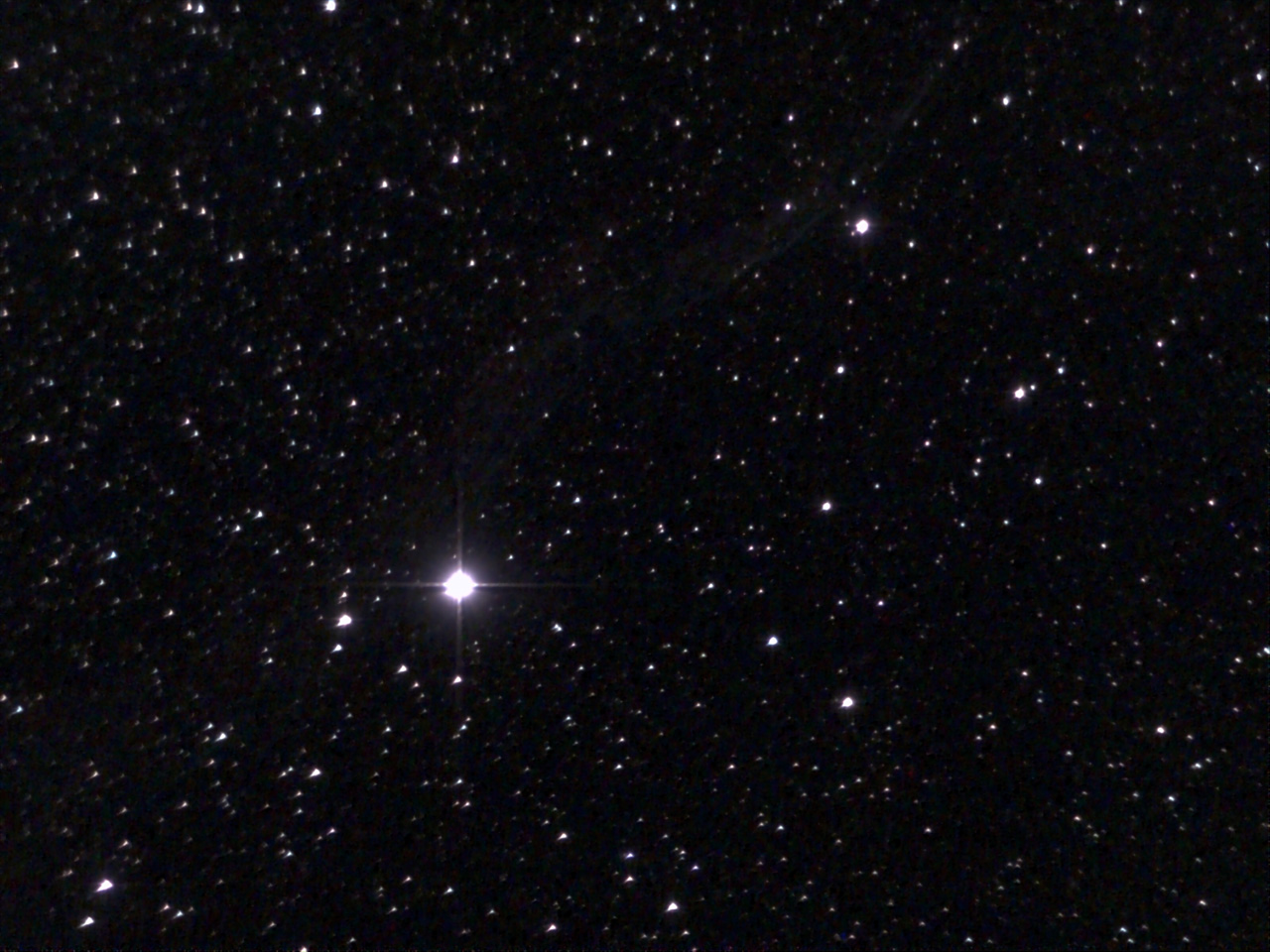 |
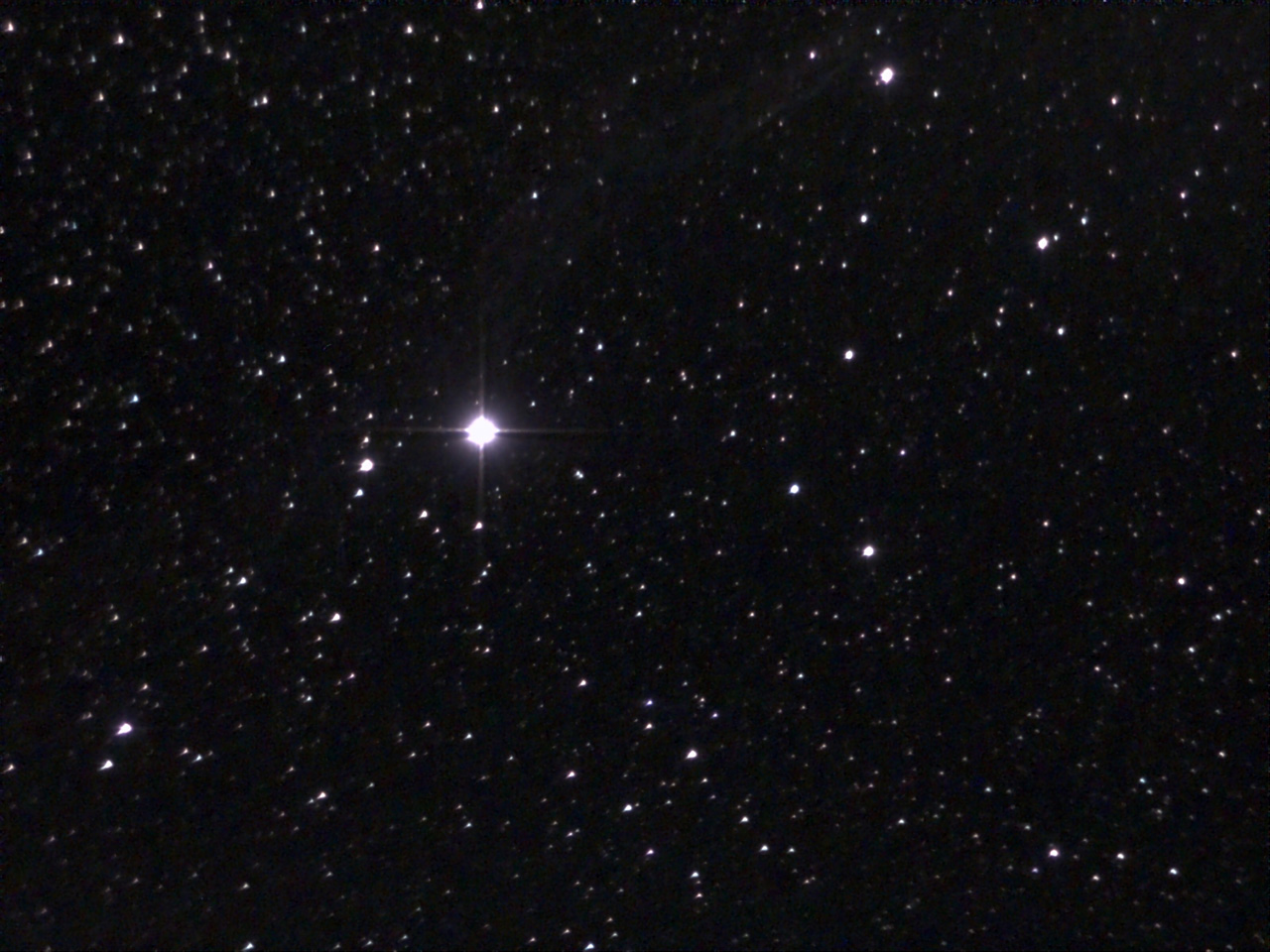 |
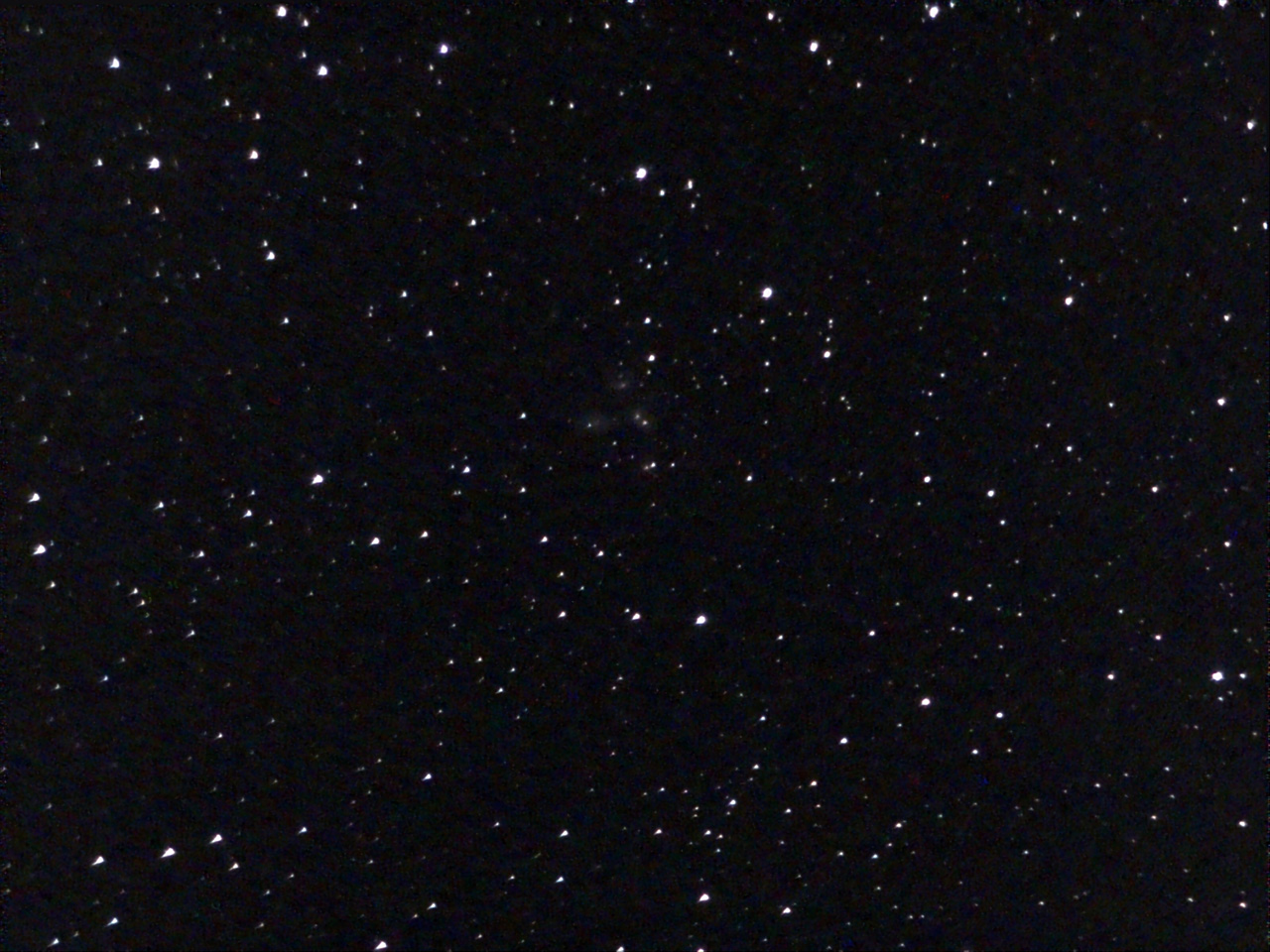 |
||
NGC 6960 - eVscope 2, Dec 10, 2021, unprocessed (original size) |
NGC 6960 - eVscope 2, Dec 10, 2021, unprocessed (Originalgröße) |
NGC 7317 - eVscope 2, Dec 10, 2021, unprocessed (original size) |
||
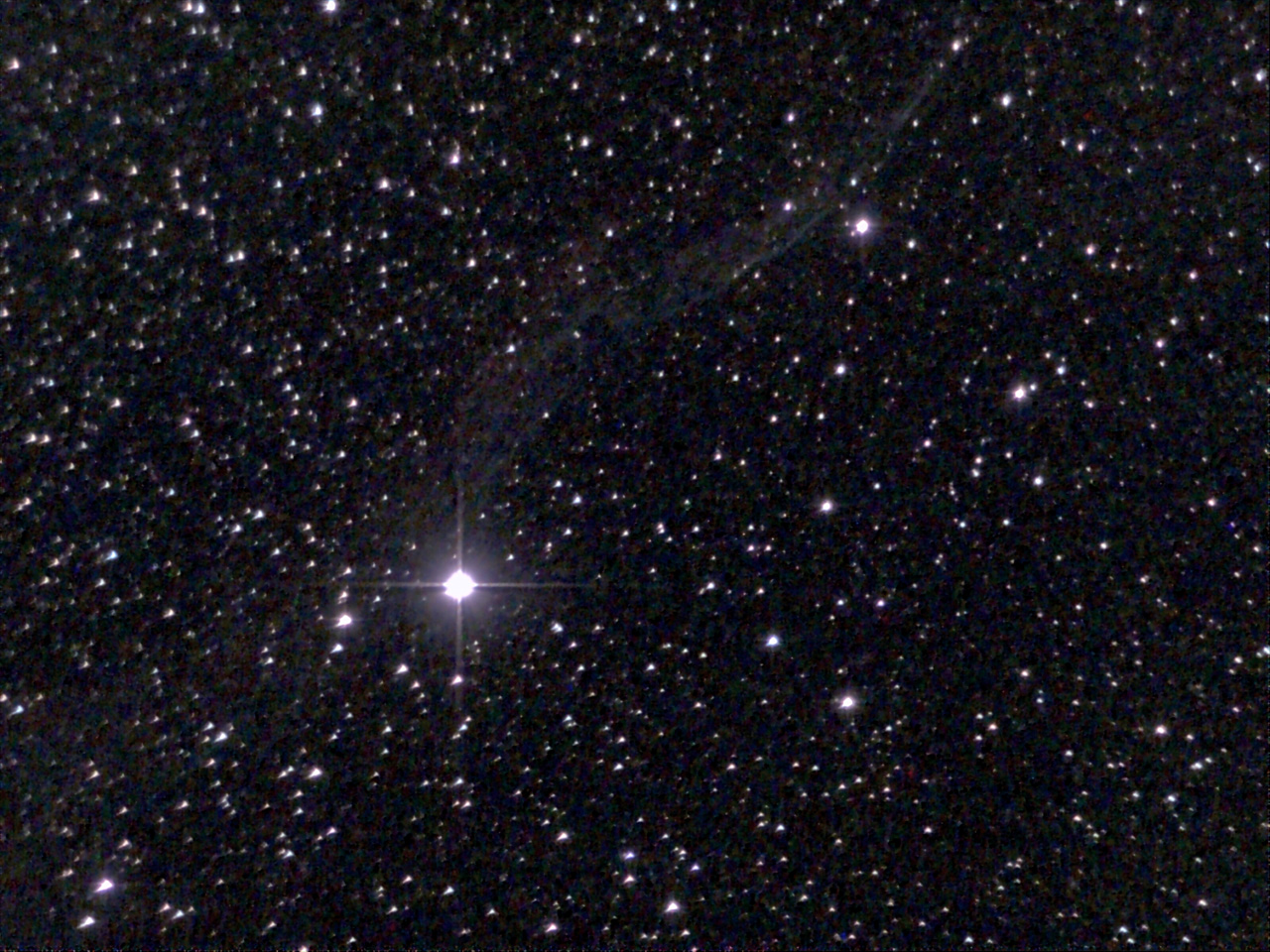 |
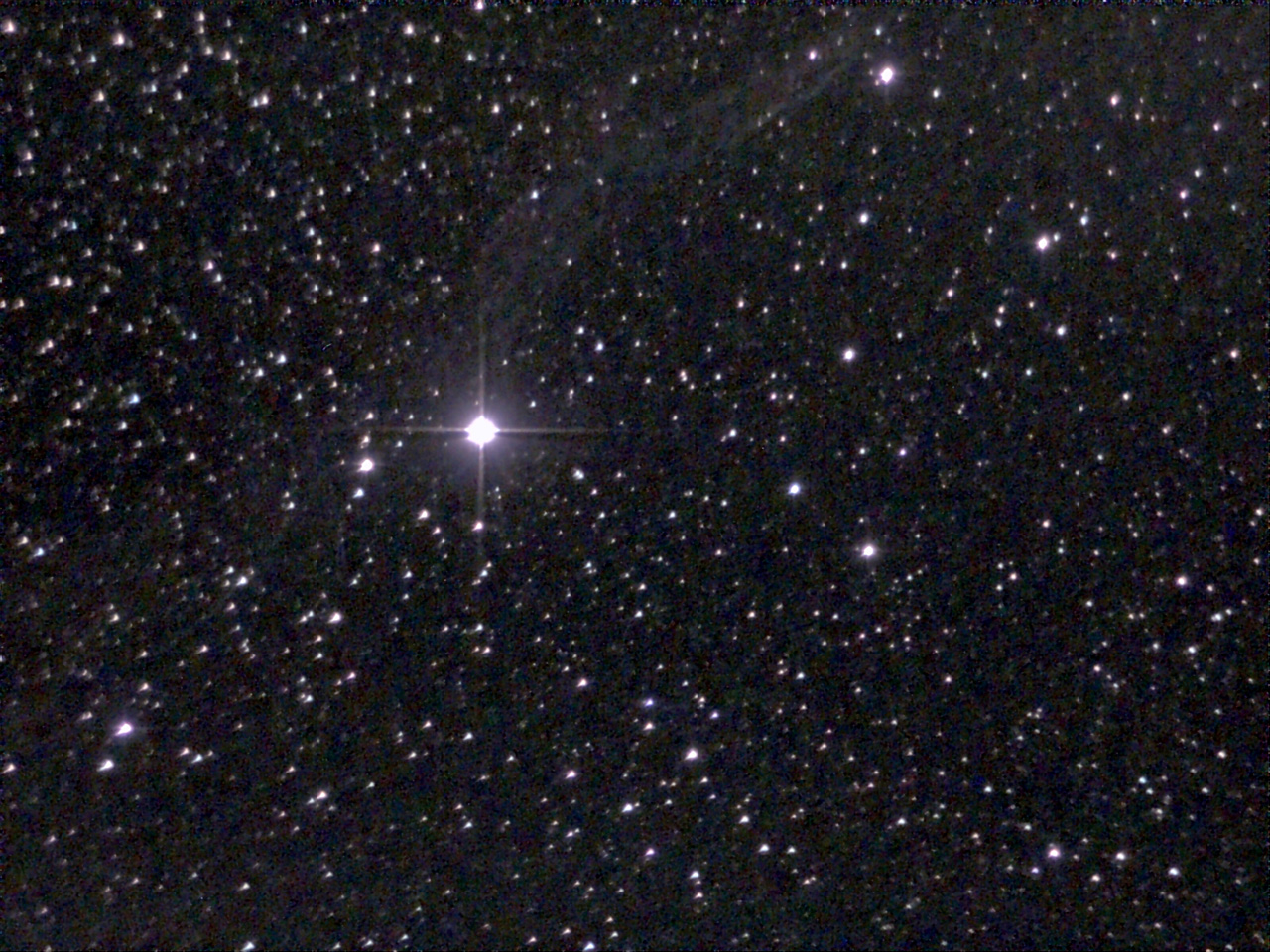 |
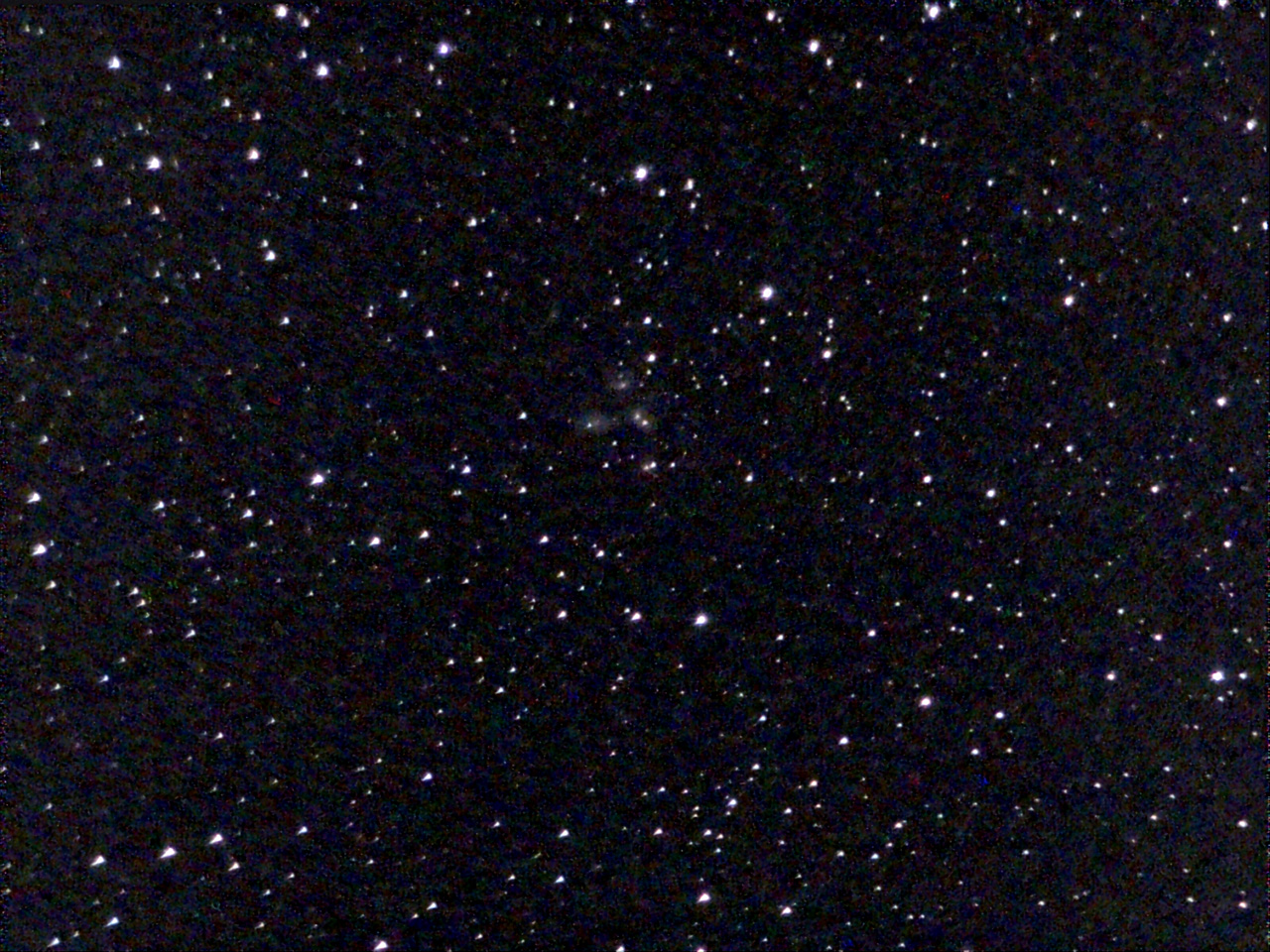 |
||
| NGC 6960 - eVscope 2, Dec 10, 2021, photo on top processed (original size) | NGC 6960 - eVscope 2, Dec 10, 2021, photo on top processed (original size) | NGC 7317 - eVscope 2, Dec 10, 2021, photo left processed (original size) |
||
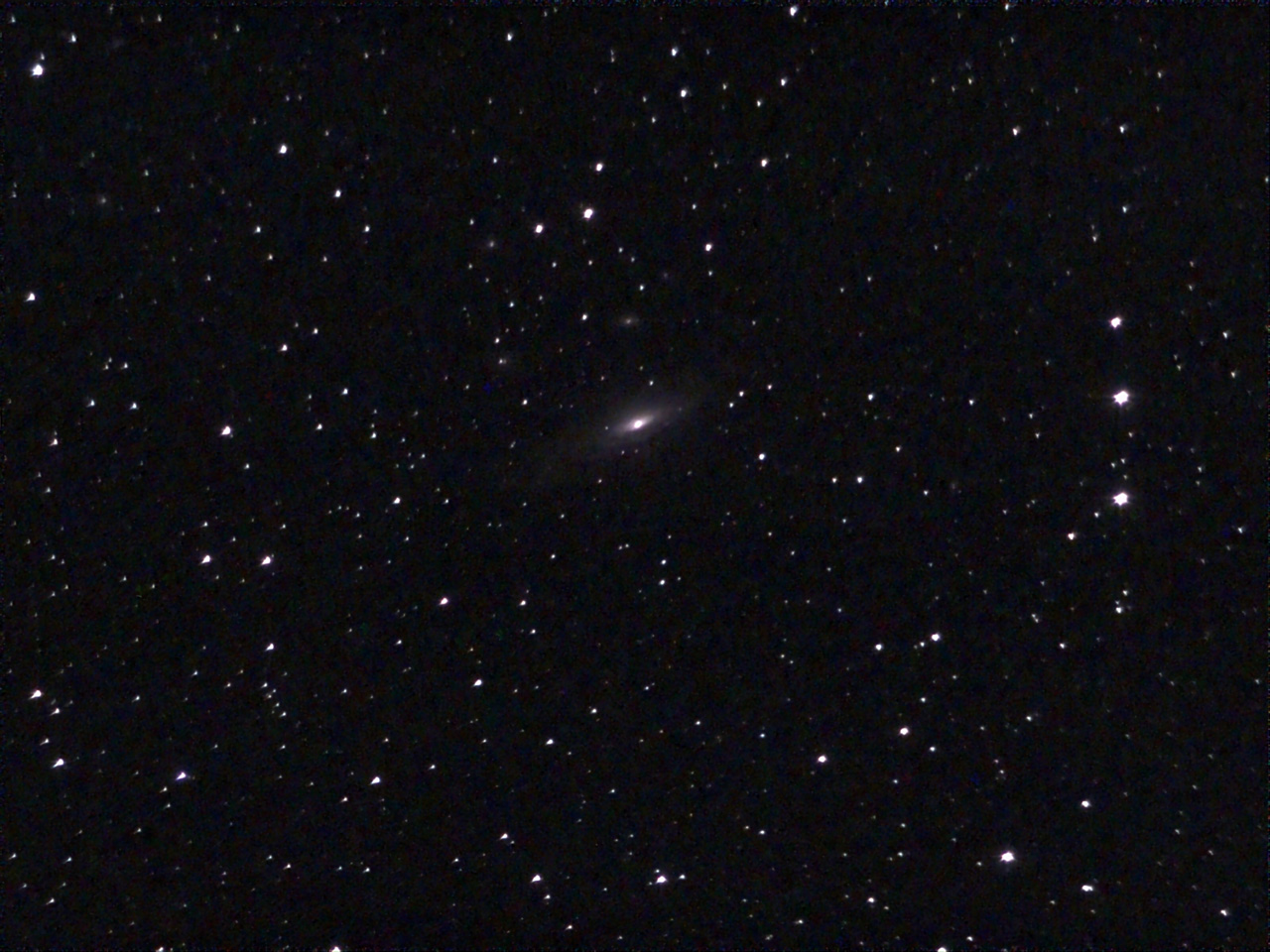 |
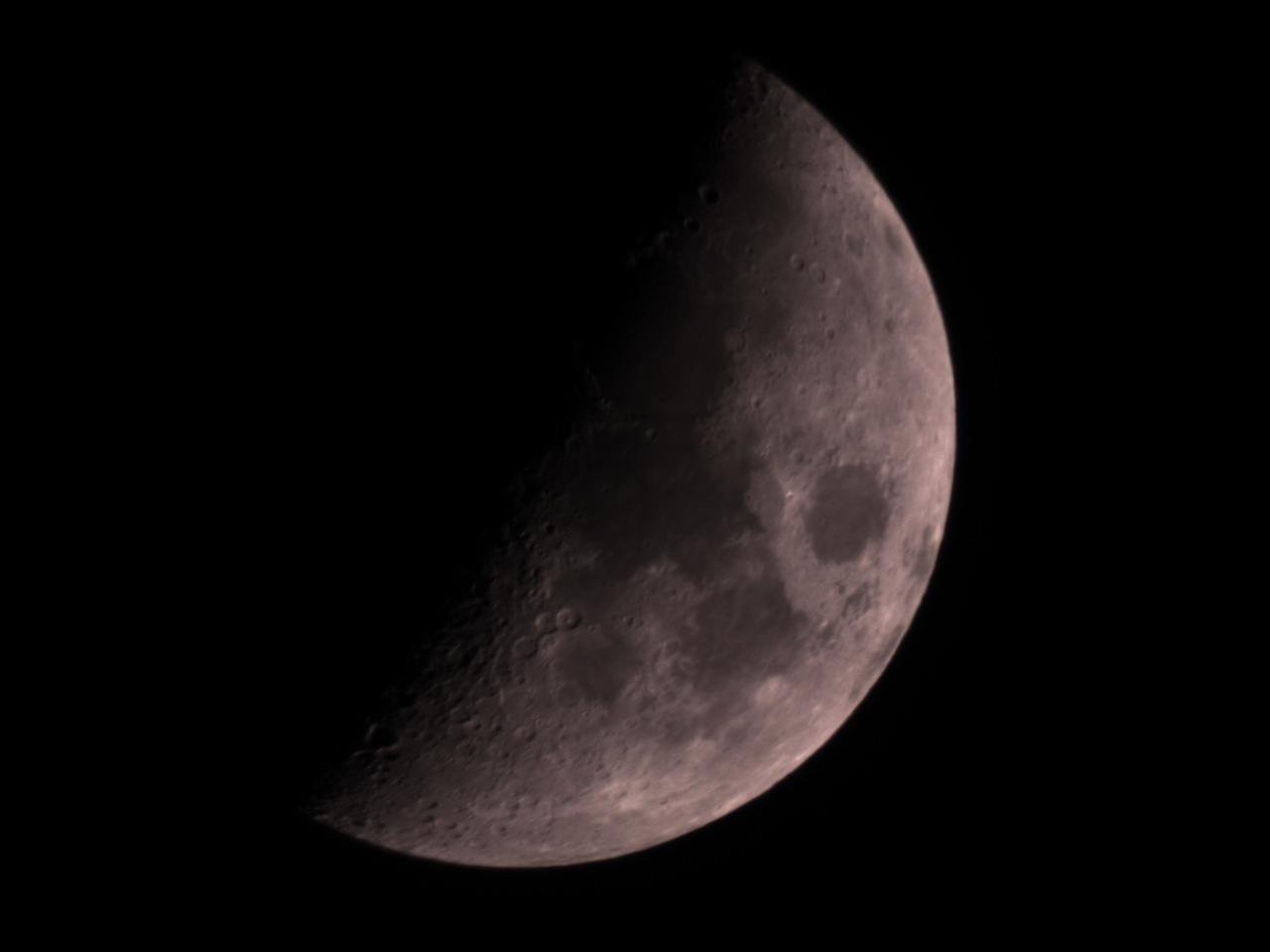 |
|||
NGC 7331 - eVscope 2, Dec 21, 2021, unprocessed (original size) |
Moon - eVscope 2, Dec 10, 2021, unprocessed (original size) |
|||
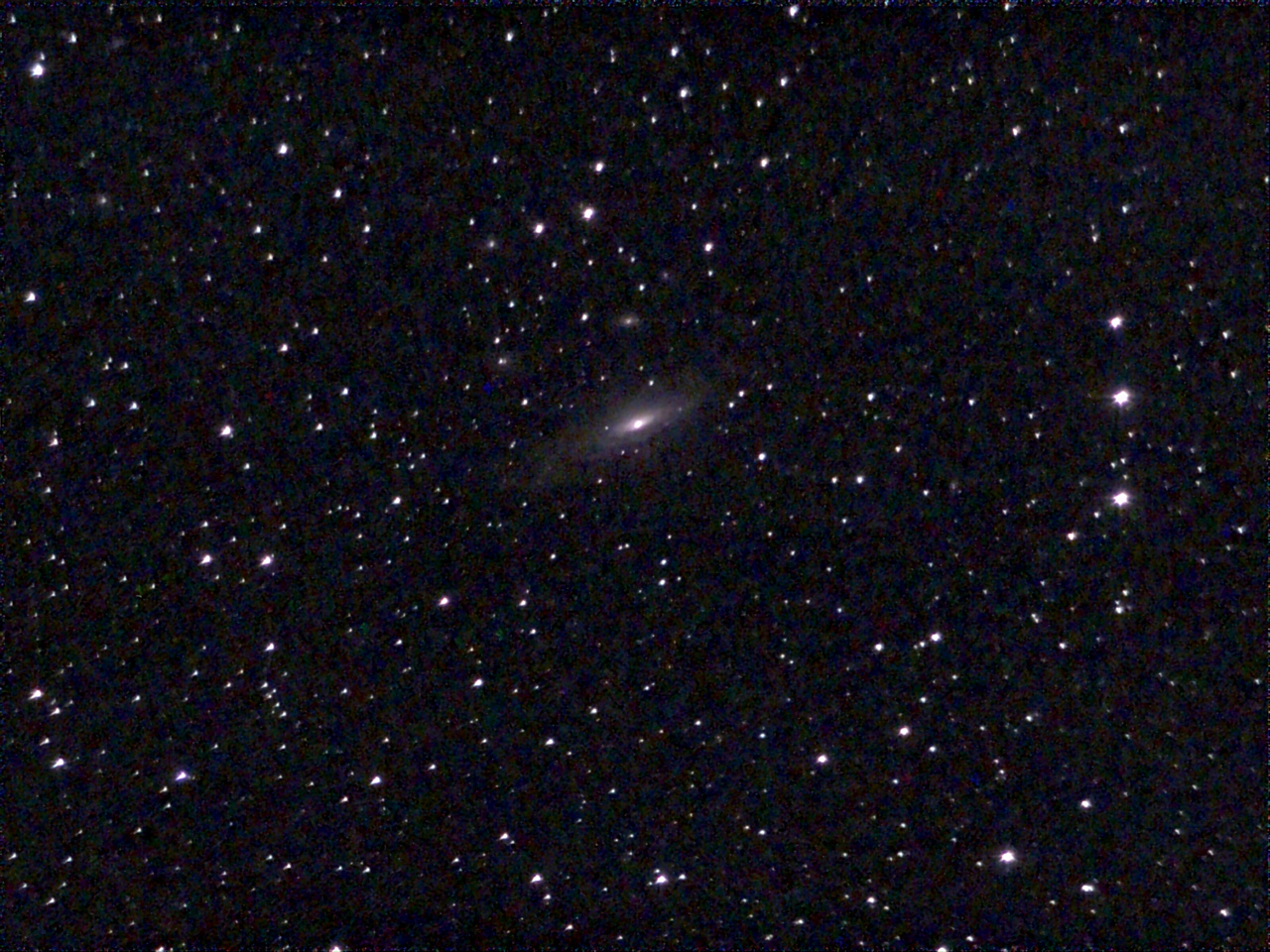 |
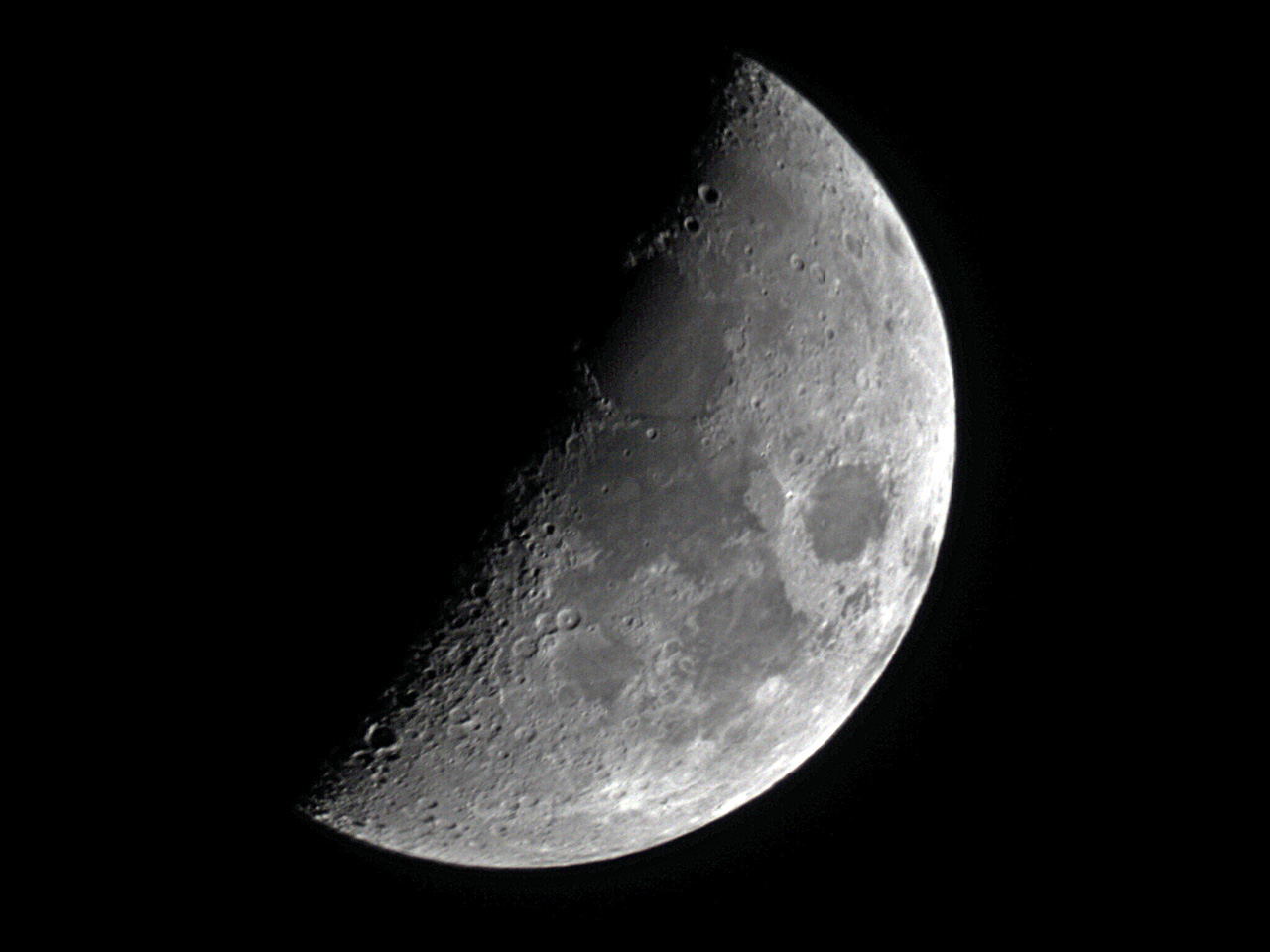 |
|||
NGC 7331 - eVscope 2, Dec 21, 2021, photo on top processed (original size) |
Moon - eVscope 2, Dec 10, 2021, photo on top processed (original size) |
First Conclusions
Since I was not satisfied with the results of my new eVscope 2, Unistellar offered to check and possibly repair my eVscope 2. So, I sent it to Unistellar on February 14, 2022 and received information on February 18 that my eVscope 2 had been repaired and will be returned to me. When asked, I was told that there was a problem with the primary mirror, which was slightly under tension and therefore produced blurry images. As proof of the repair, I received a photo of Alnilam, which was taken with my eVscope 2 after the repair. It looks much better than my similar photo of Alnitak (near the Flame Nebula):
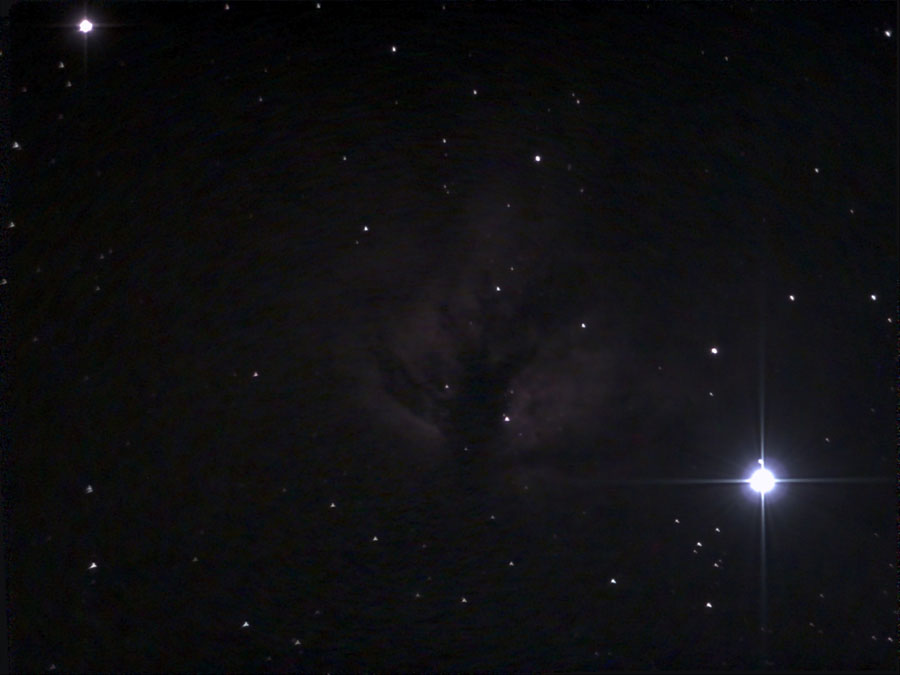 |
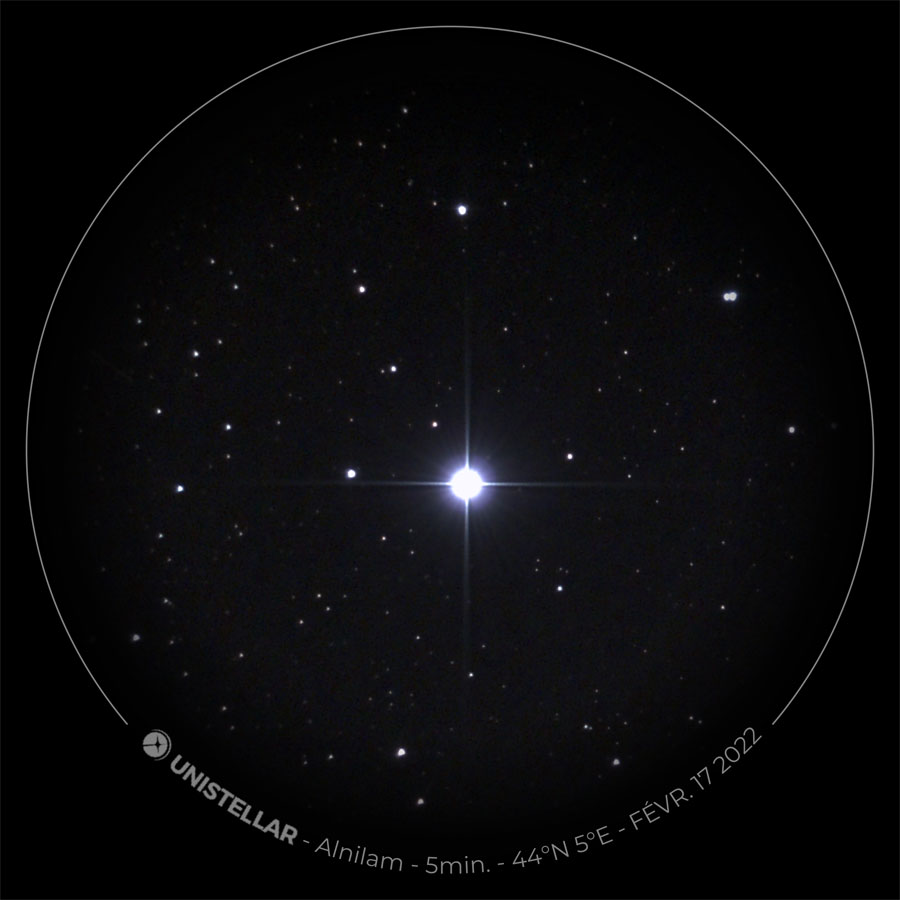 |
|
Alnitak (near Flame Nebula) - eVscope 2, Feb 5, 2022, no processing |
Alnilam - eVscope 2 (repaired), Feb 17, 2022, no processing |
I describe my subsequent tests with the repaired eVscope 2 on the pages First Experiences (After Repair - Part 1) and First Experiences (After Repair - Part 2). According to this, the repair resulted in an improvement, but did not completely eliminate the mirror tension. Unistellar offered to return my eVscope 2 (end of March 2022) and exchange it for a new one. This arrived on April 8, 2022. For more information on this second sample, see page Unistellar eVscope 2 - Information!
So please note that my eVscope 2 photos on this page do not reflect the true performance of the eVscope 2!
Links
- Unistellar Website: unistellaroptics.com
- Unistellar product page (eVscope eQuinox and eVscope 2): unistellaroptics.com/products
- eVscope 2 product page: unistellaroptics.com/evscope2
- Unistellar eVscope eQuinox: unistellaroptics.com/equinox
- Compare our products : eQuinox VS eVscope 1.0 VS eVscope 2: help.unistellar.com/hc/en-us/articles/4406616411922-Compare-our-products-eQuinox-VS-eVscope-1-0-VS-eVscope-2
- Unistellar eVscope 2 (thread started by P_E_T_E_R): forum.astronomie.de/threads/unistellar-evscope-2.313920 (in German)
- Hands on: Unistellar eVscope 2 (thread started by Kerste): www.astrotreff.de/forum/index.php?thread/268609-hands-on-unistellar-evscope-2/&postID=1576342#post1576342 (in German)
- Hands on: Unistellar eVscope 2 (Blog by Alexander Kerste): kerste.de/?p=13704 (in German)
- See also my page offering Astronomy Links.
Appendix: Data for the Unistellar eVscope 2
Hardware
- Magnification: 50 x optical / 400 x digital (adjusted in the app), 150 x recommended at maximum
- Maximum magnitude: up to 16 mag in standard night sky, 18 mag in optimal conditions
- Mirror diameter: 112 mm (BK7)
- Focal length: 450 mm
- Focal ratio: 1:4
- Motorized Alt-AZ mount
- Weight: 9 kg (19.8 lbs) including tripod
- Size: 65 cm tall and 23 cm wide (25.5" tall and 9" wide)
Bag
- Weight: 2 kg or around 4.5 lbs
- Size: 72 x 22.5 x 29 cm (H x W x D)
- Features see below
Electronics
- Sensor model: Sony IMX347 (CMOS) - for details see below
- Display: Micro-OLED (1,000,000:1 contrast ratio) ?
- Battery life: up to 10 hours
- 6 axis compass/accelerometer
- Wireless connectivity: Wifi or Bluetooth for smartphone or computer control and GPS access (no GPS inside)
Smarts
- Autonomous field detection
- Fully automated star alignment procedure
- Automated pointing
- Automated celestial tracking with feedback
- Field derotation
- Intelligent image processing
- Intelligent sensor settings
- Light pollution reduction
Sensor Data
- Sony Starvis IMX347 color CMOS sensor - 4.17 MPixels (effective), 4.09 MPixels (recommended)
- Sensor size: 1/1.8" (diagonal 9.04 mm), 2781 x 1632 Pixel ( 2712 x 1538 effective, 2688 x 1520 recommended)
- Pixel size: 2.9µm x 2.9µm
- Pixel number (used by eVscope 2): 2048 x 1536 (Live View), 3200 x 2400 (Enhanced Vision, interpolated)
- FOV: 34 arcmin x 47 arcmin
Backpack Features
Carefully designed with the world-leading manufacturer of large telephoto lens transportation bags, the eVscope backpack is made of tough reinforced fabric, and carefully padded with high-density foam to protect your telescope from any shock.
- Built-in foam inserts precisely match the shape of your eVscope
- Internal strap to securely fasten the instrument while backpacking
- Removable rainshield protects it from rain and humidity
- Padded adjustable shoulder straps
- Padded adjustable hipbelt to distribute the load weight
- Ventilated backpanel
- 5 small internal pockets. 2 zipped, 2 to hold telescope and eyepiece lid while observing
- 2 large external zipped pockets
- 1 hipbelt zipped pocket
The ideal accessory to take full advantage of the eVscope’s portability. (Source: Unistellar Help Center)
Appendix 2: eVscope 2 vs. eVscope Equinox and vs. the original eVscope
The differences between the models (the original eVscope is no longer available) are described in the table below (from Unistellar Help Center: eQuinox VS eVscope 1.0 VS eVscope 2), to which I added some information:
| Specifications | eQuinox | eVscope 1 | eVscope 2 |
| Battery Life | up to 12h (no eyepiece) |
up to 10h | up to 10h |
| µSD Storage Capacity | 64GB | 16GB | 64GB |
| Display | --- | OLED screen | OLED screen |
| HARDWARE | |||
| Optical Magnification: 50x | ✔ | ✔ | ✔ |
| Digital Magnification: up to 400x (150x recommended maximum) | ✔ | ✔ | ✔ |
| Field of View | 27 arcmin x 37 arcmin | 27 arcmin x 37 arcmin | 34 arcmin x 47 arcmin |
| Max Magnitude: <16 in the medium quality night sky in under a minute, up to 18 in excellent conditions in a few minutes | ✔ | ✔ | ✔ |
| Resolving Power (Image Scale) | 1.72 arcsec | 1.72 arcsec | 1.33 arcsec |
| Mirror Diameter: 4.5" | ✔ | ✔ | ✔ |
| Focal Length: 450 mm | ✔ | ✔ | ✔ |
| Motorized Alt-Az Mount with extreme tracking accuracy thanks to Automated Celestial Tracking with Feedback | ✔ | ✔ | ✔ |
| Weight: 19.8 lbs (9 kg) including tripod | ✔ | ✔ | ✔ |
| ELECTRONICS | |||
| Sensor Technology: Sony Exmor with NIR technology | ✔ | ✔ | ✔ |
| Sensor Model | IMX224 | IMX224 | IMX347 |
| Pixel Size | 3.75 x 3.75 µm | 3.75 x 3.75 µm | 2.9 x 2.9 µm |
| Pixels | 1280 x 960 | 1280 x 960 | 2048 x 1536 |
| Megapixels | approx. 1.23** | approx. 1.23** | approx. 4.09** |
| eVscope Pixels in EV Mode (since app version 1.3/1.4) | 2560 x 1920 | 2560 x 1920 | 3200 * 2400 |
| eVscope Megapixels in EV Mode (since App Version 1.3/1.4) | 4.9* | 4.9* | 7.7* |
*) according to Unistellar; **) according to Sony; more on the eVscope on page Unistellar eVscope - Information (4.5" Newton)!
Appendix 3: Published and Sent Photos, Comparisons with the Original eVscope
Since I do not yet own the eVscope 2 and therefore cannot present any photos of my own, I present photos on this page that Unistellar has published on their Website (eVscope 2 product page) so far, or photos that Unistellar sent me on request. The published photos are reduced in size and partly cropped, the sent ones are, except for the moon, in their original format (the large versions). I do neither know, whether these photos were post-processed, nor how long they were exposed (dwell time in EV or LV mode).
Comparisons with the Original eVscope
The photos that were taken with the original eVscope, were taken by me and are post-processed.
| 20.09.2022 |
